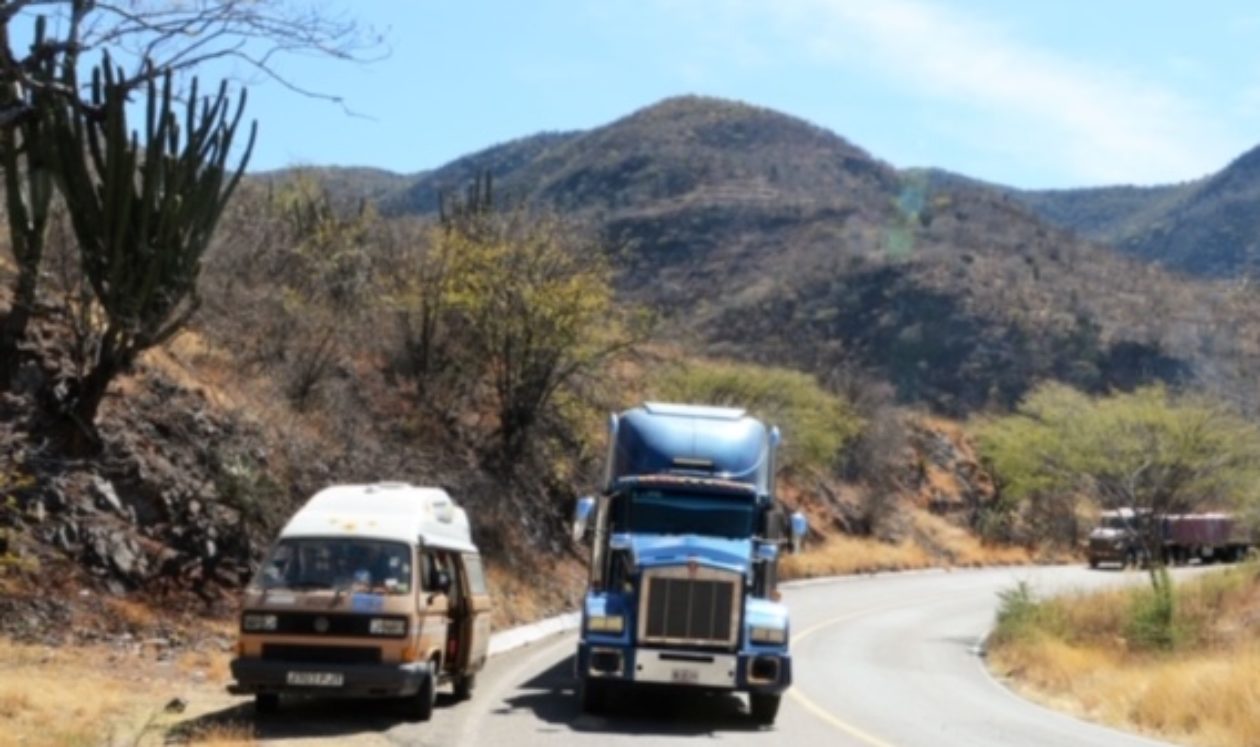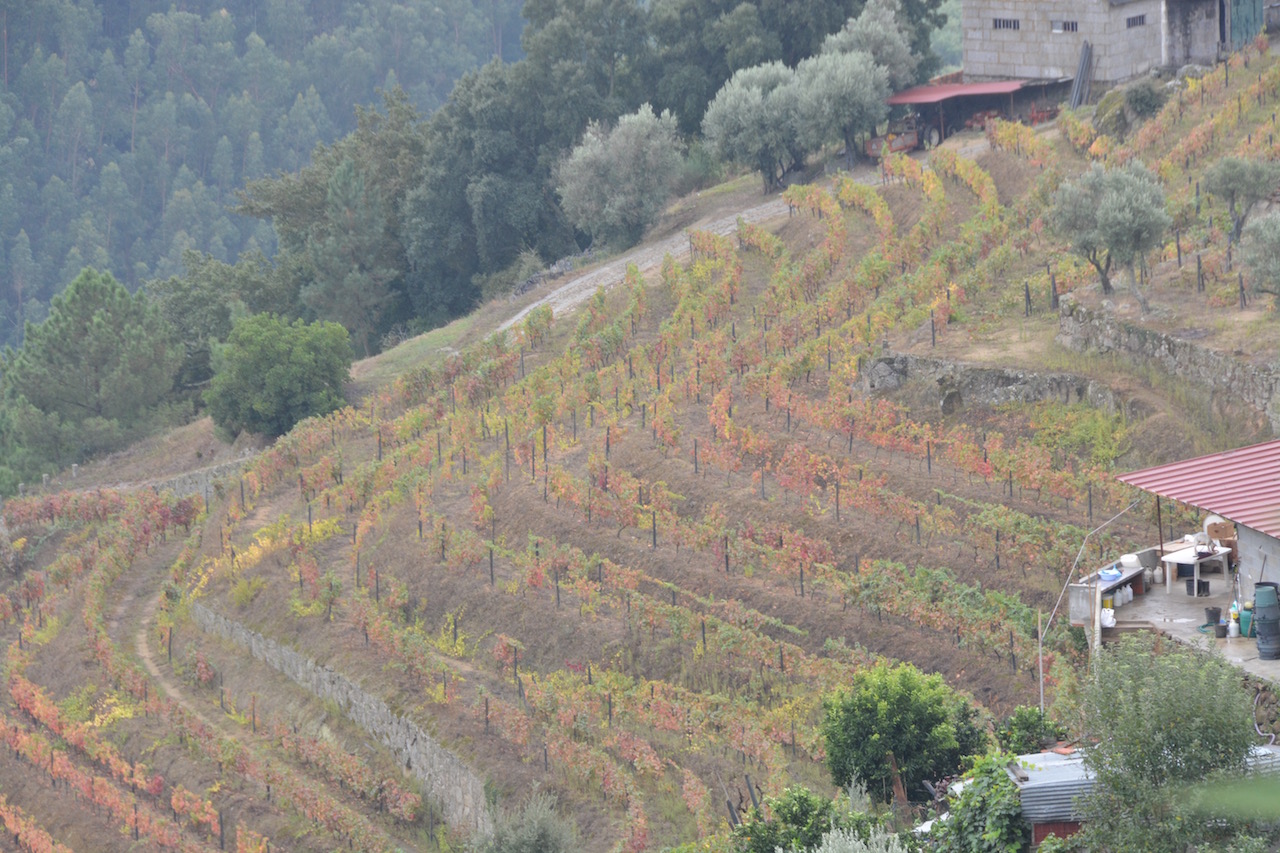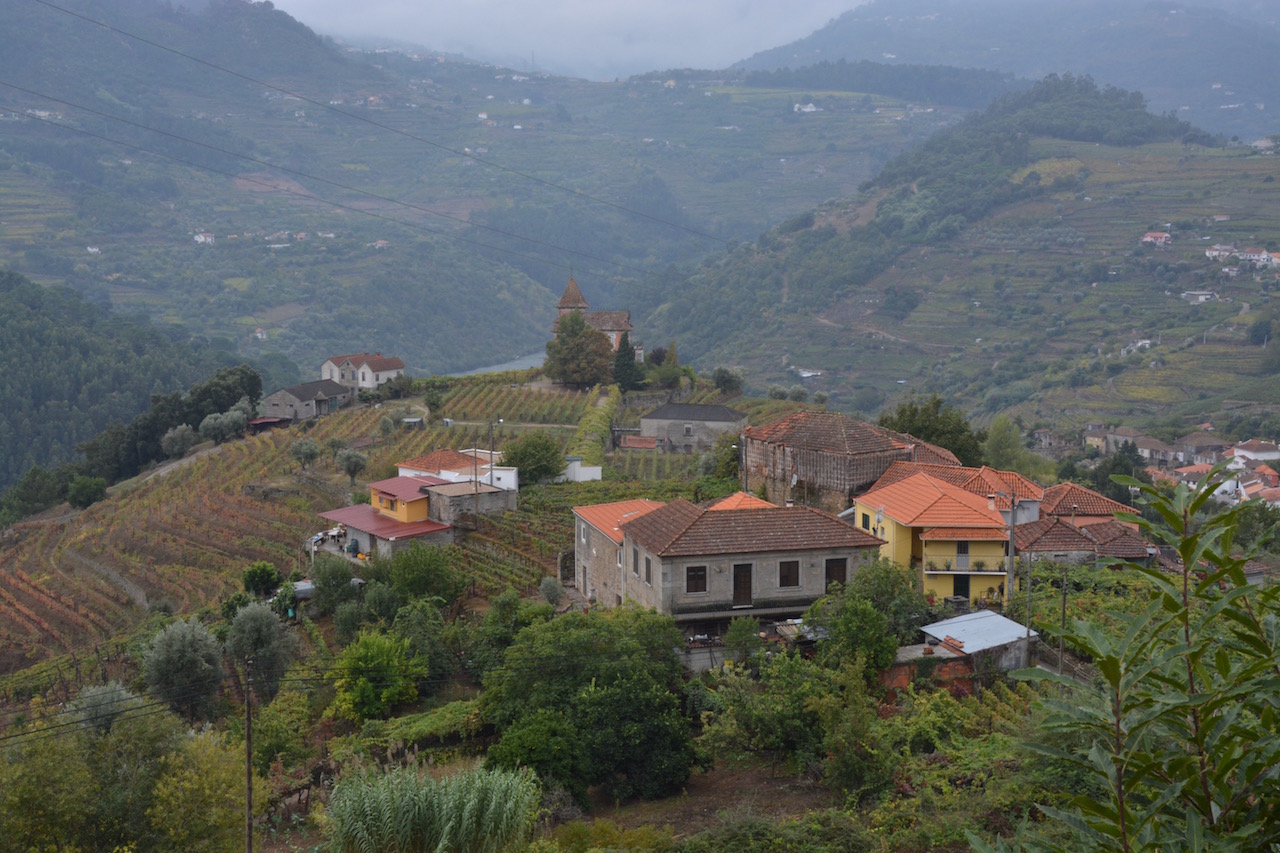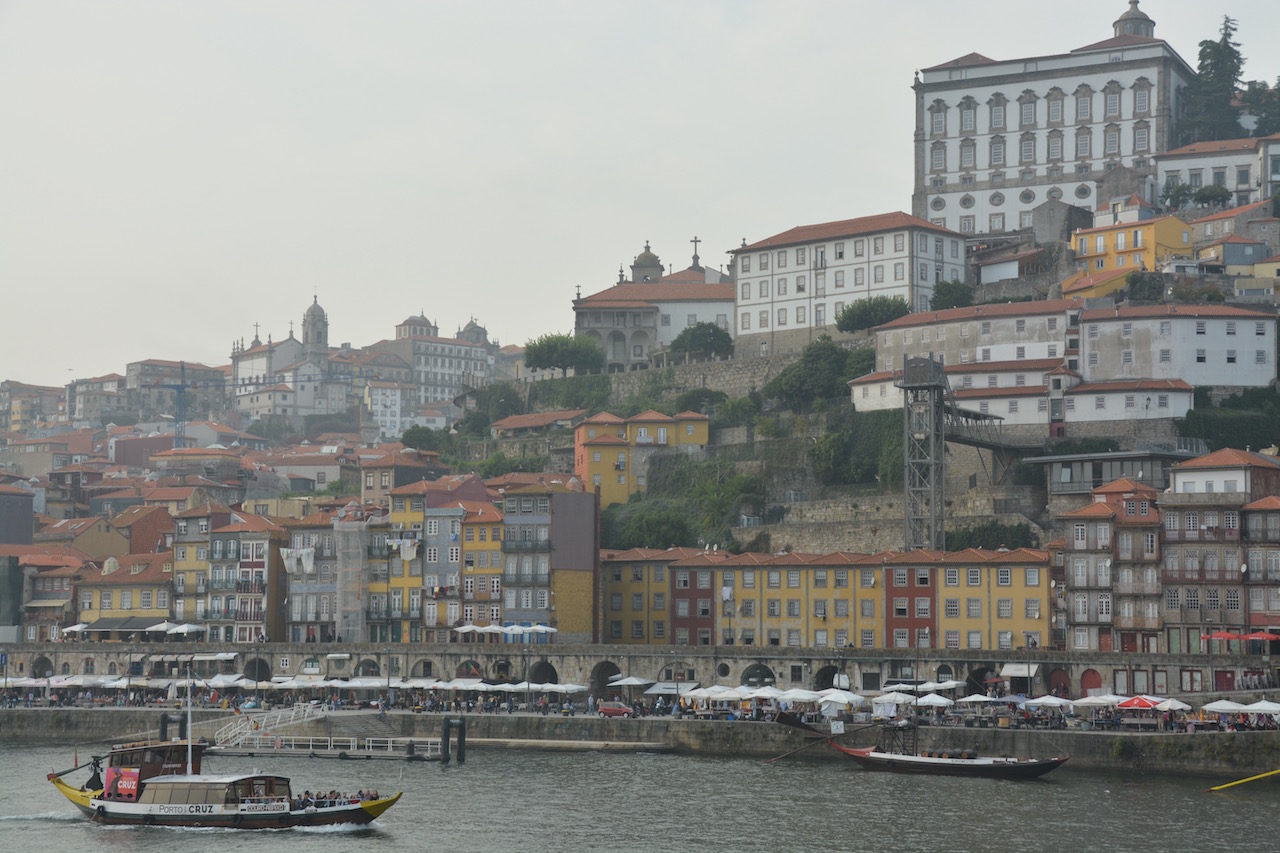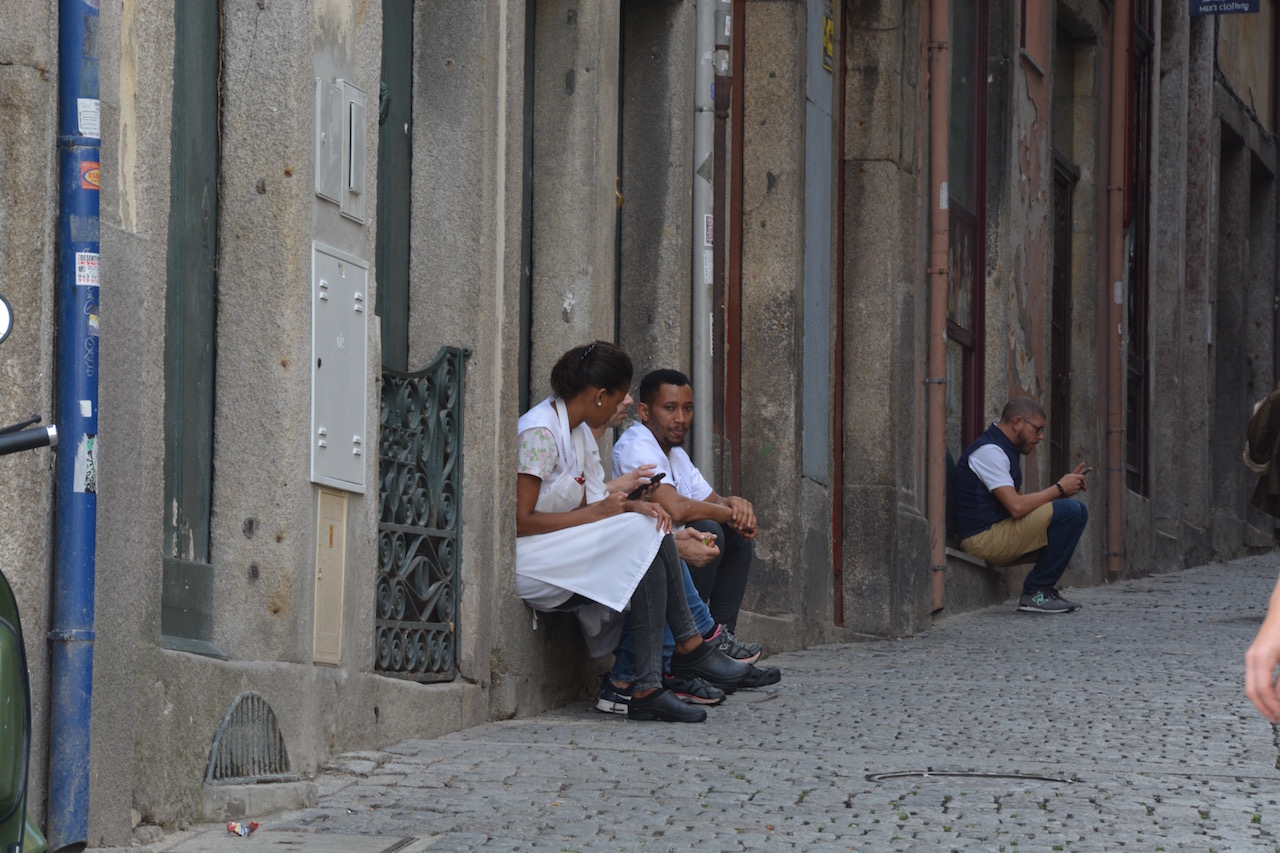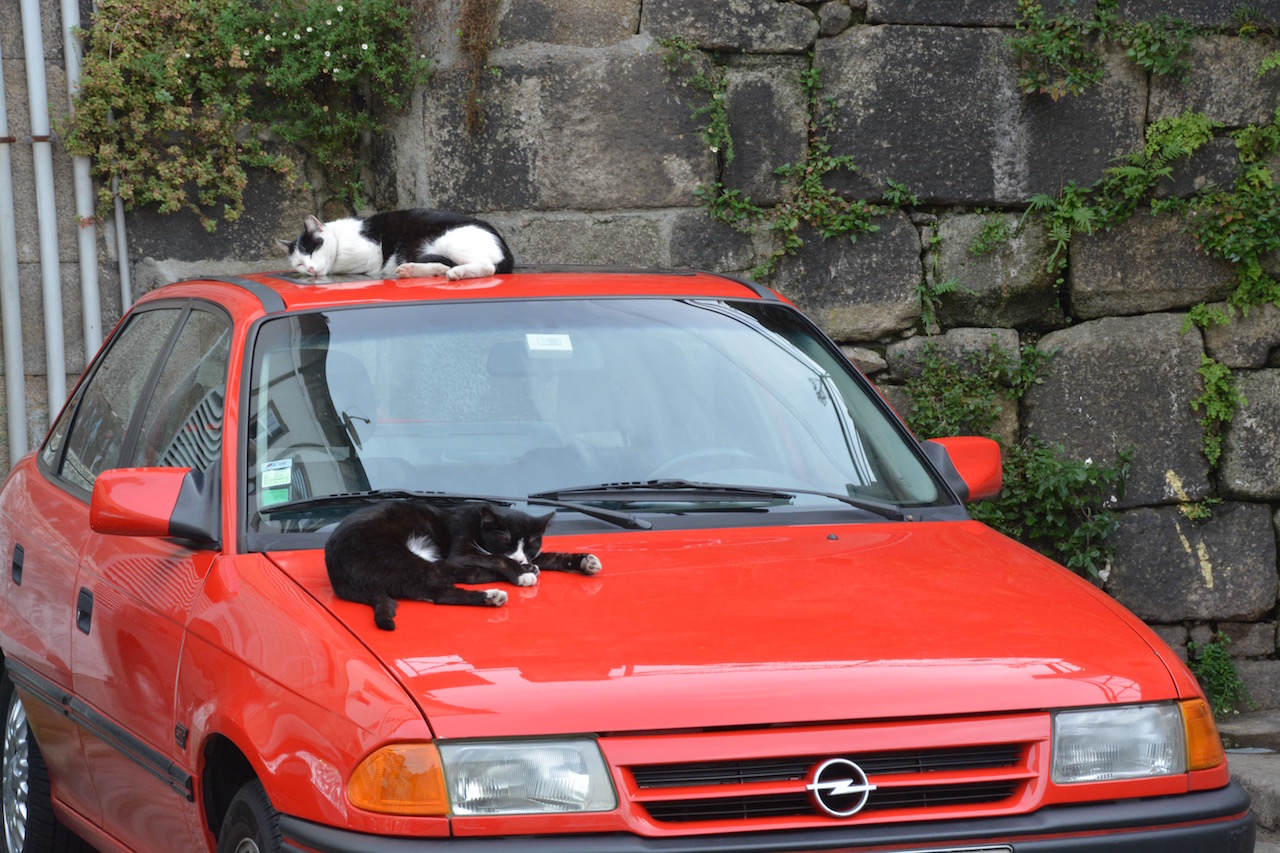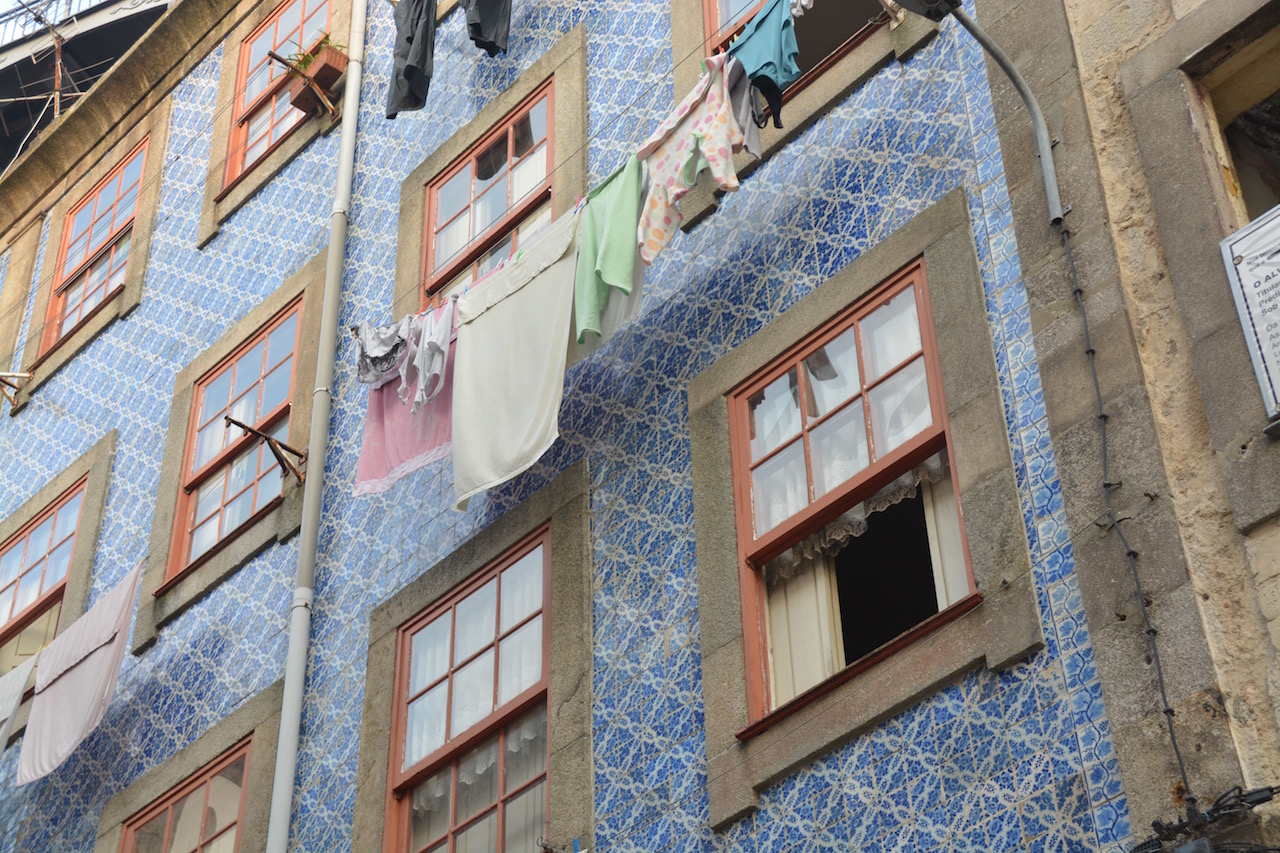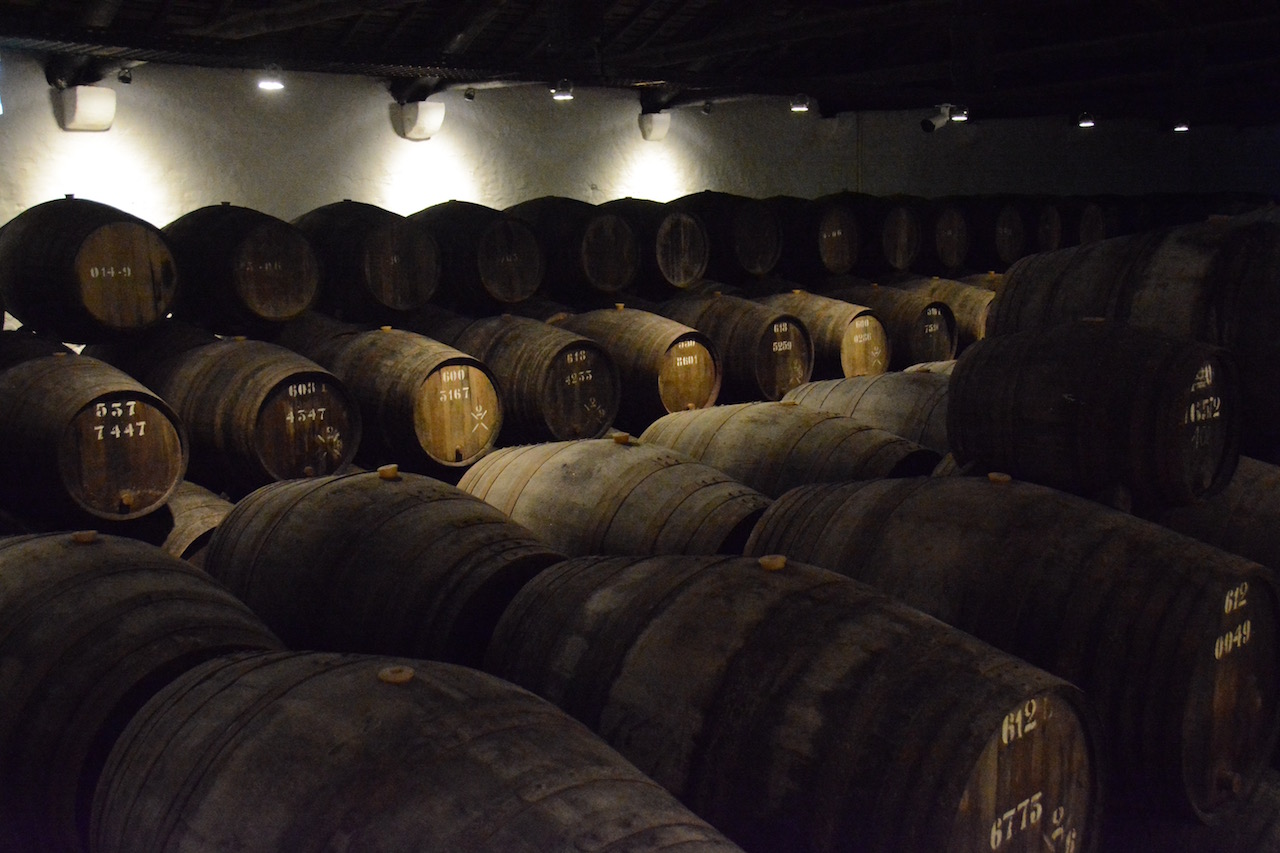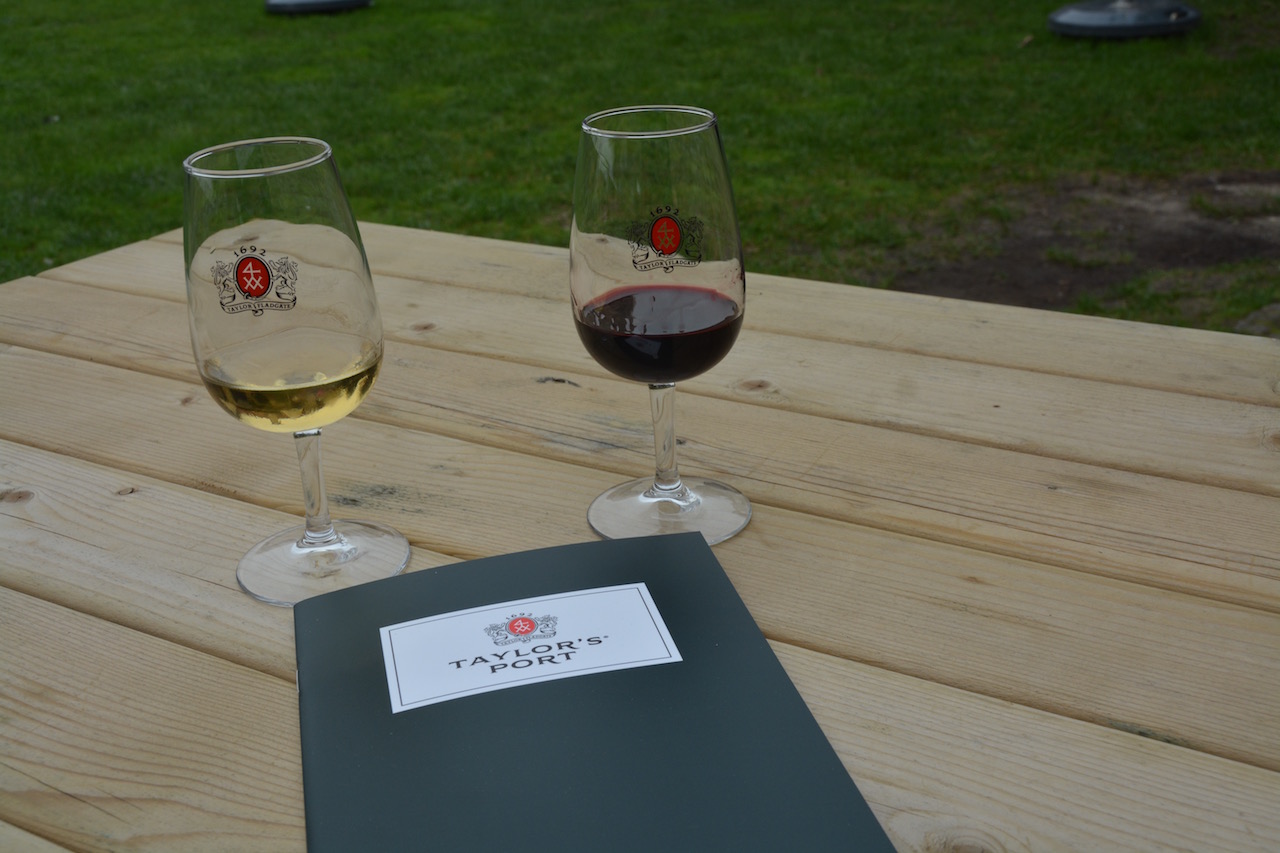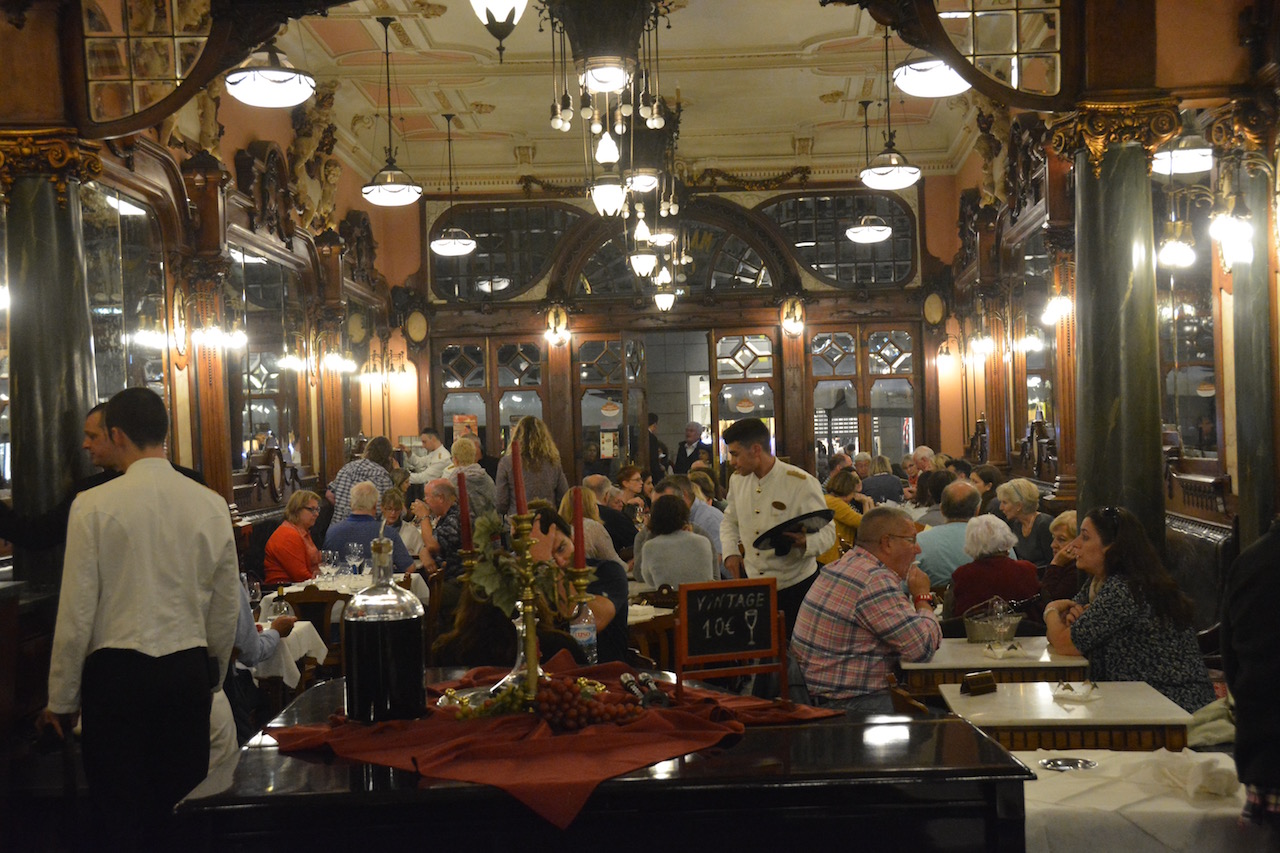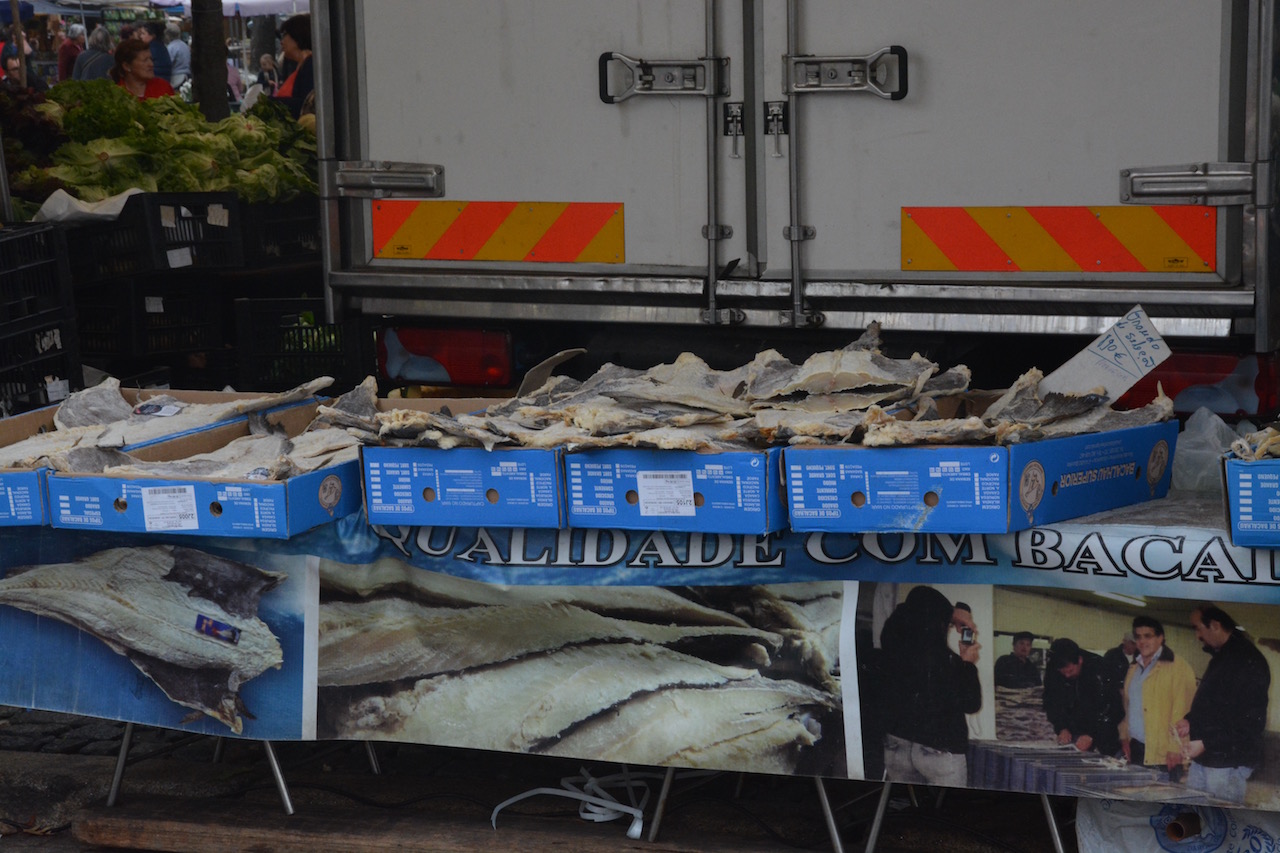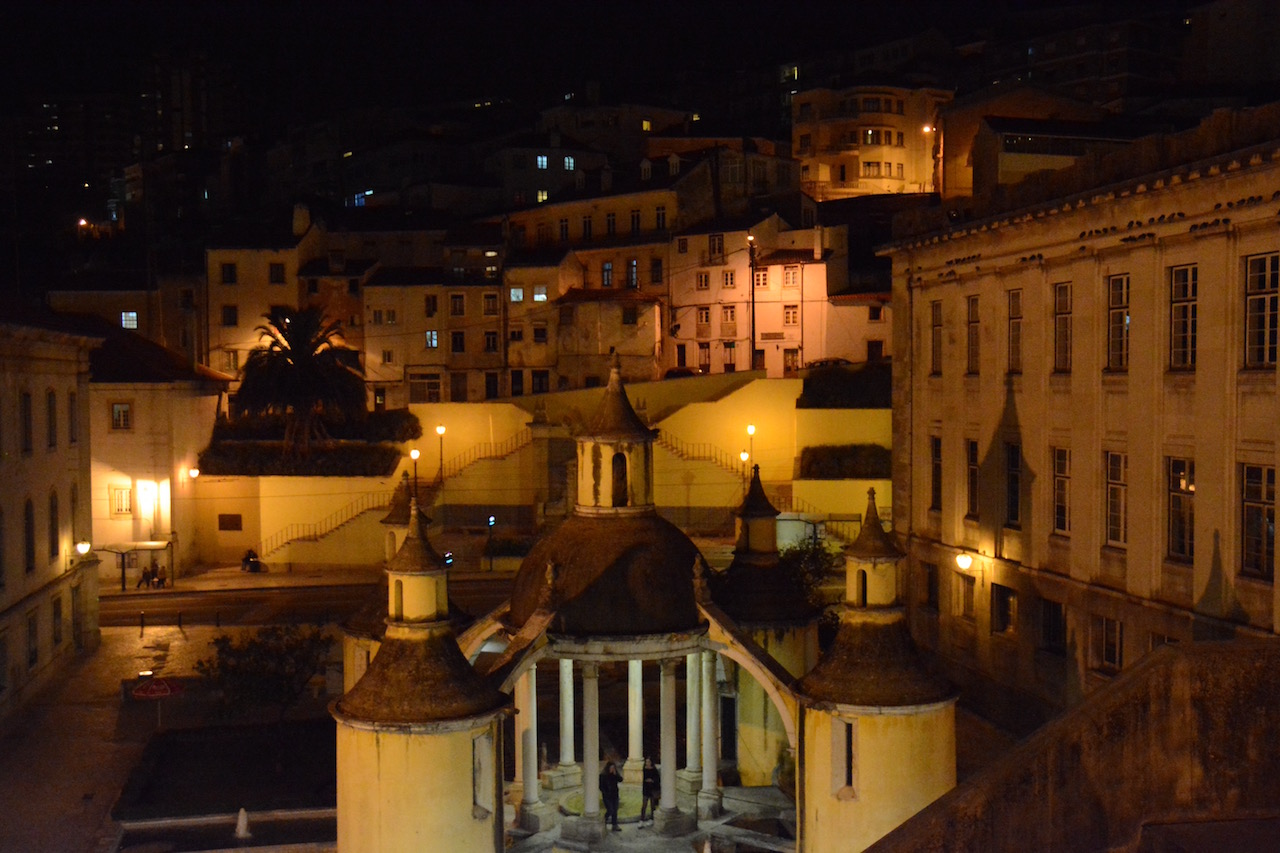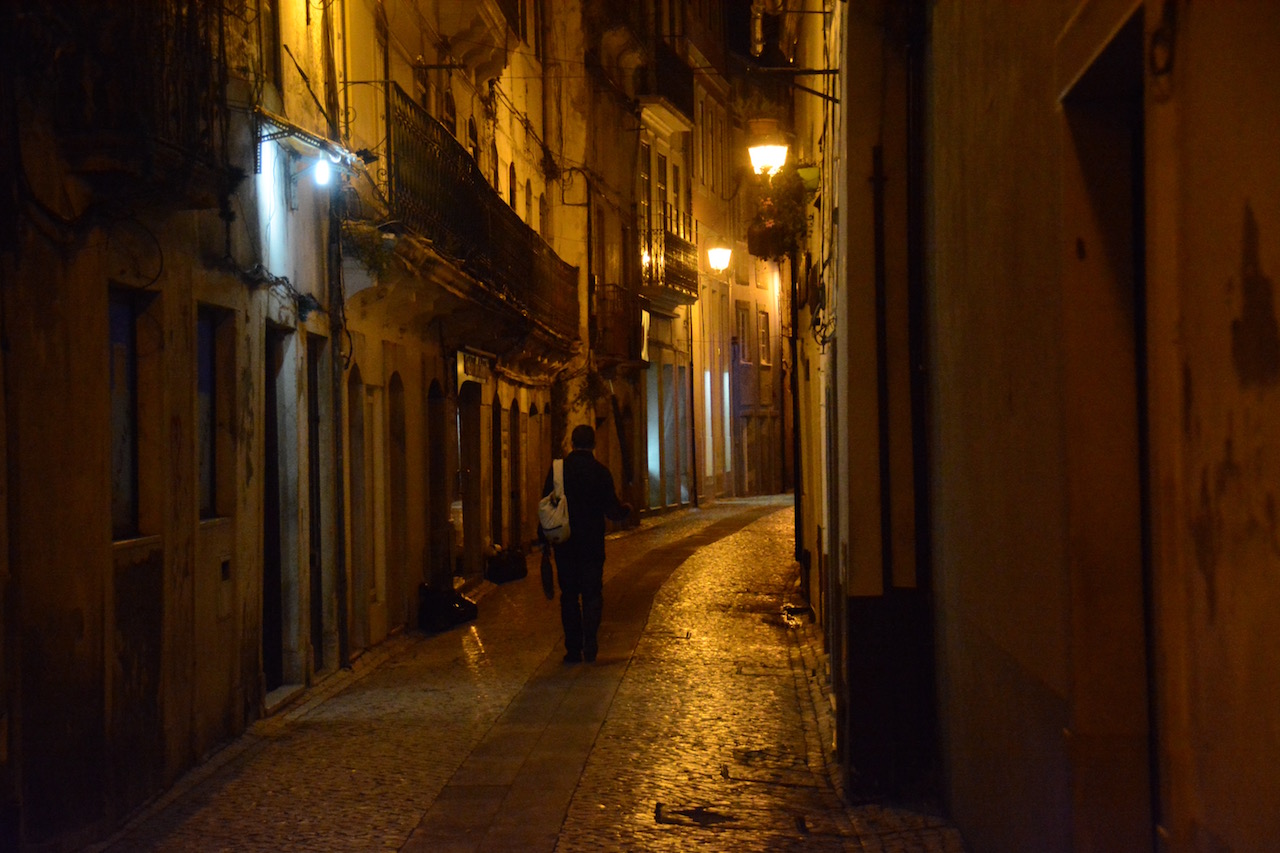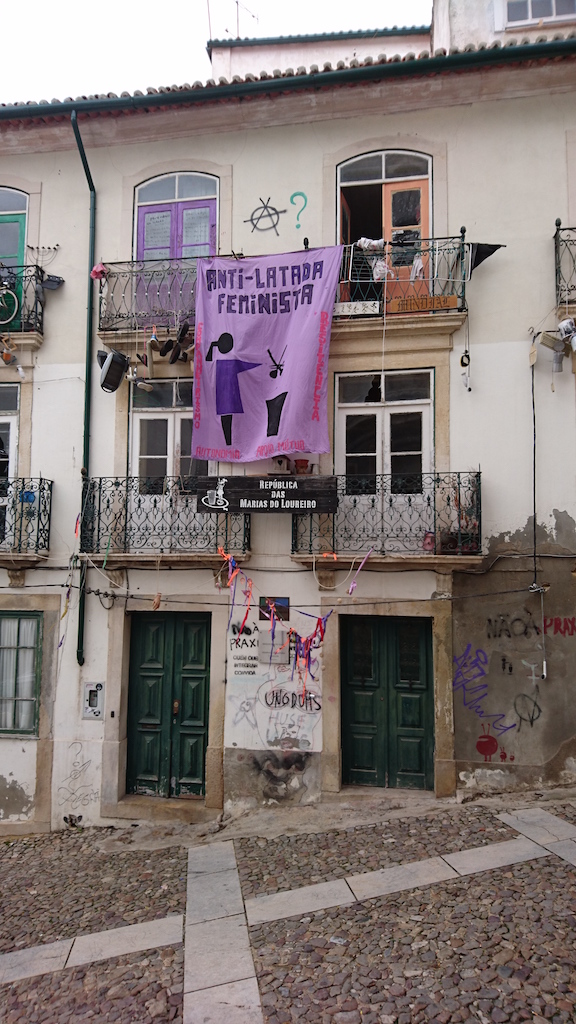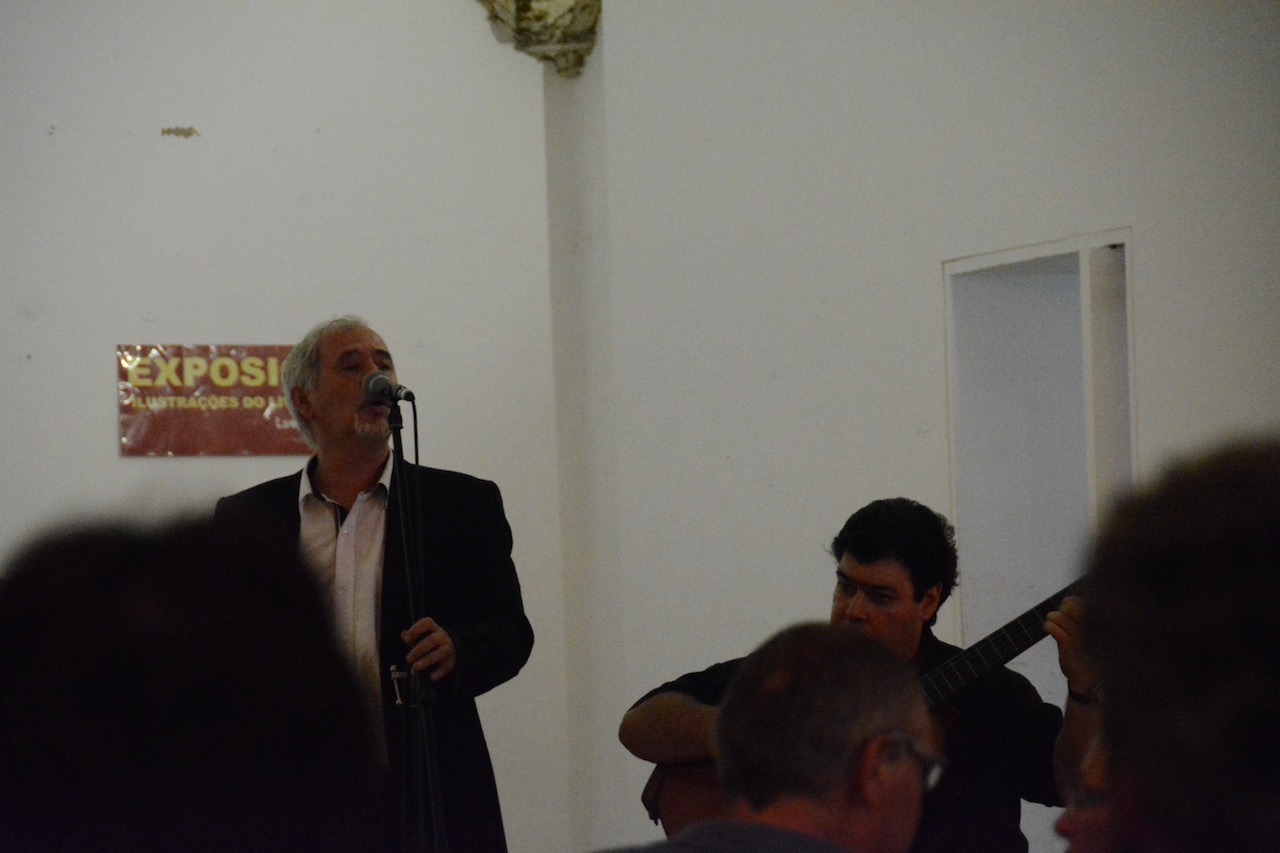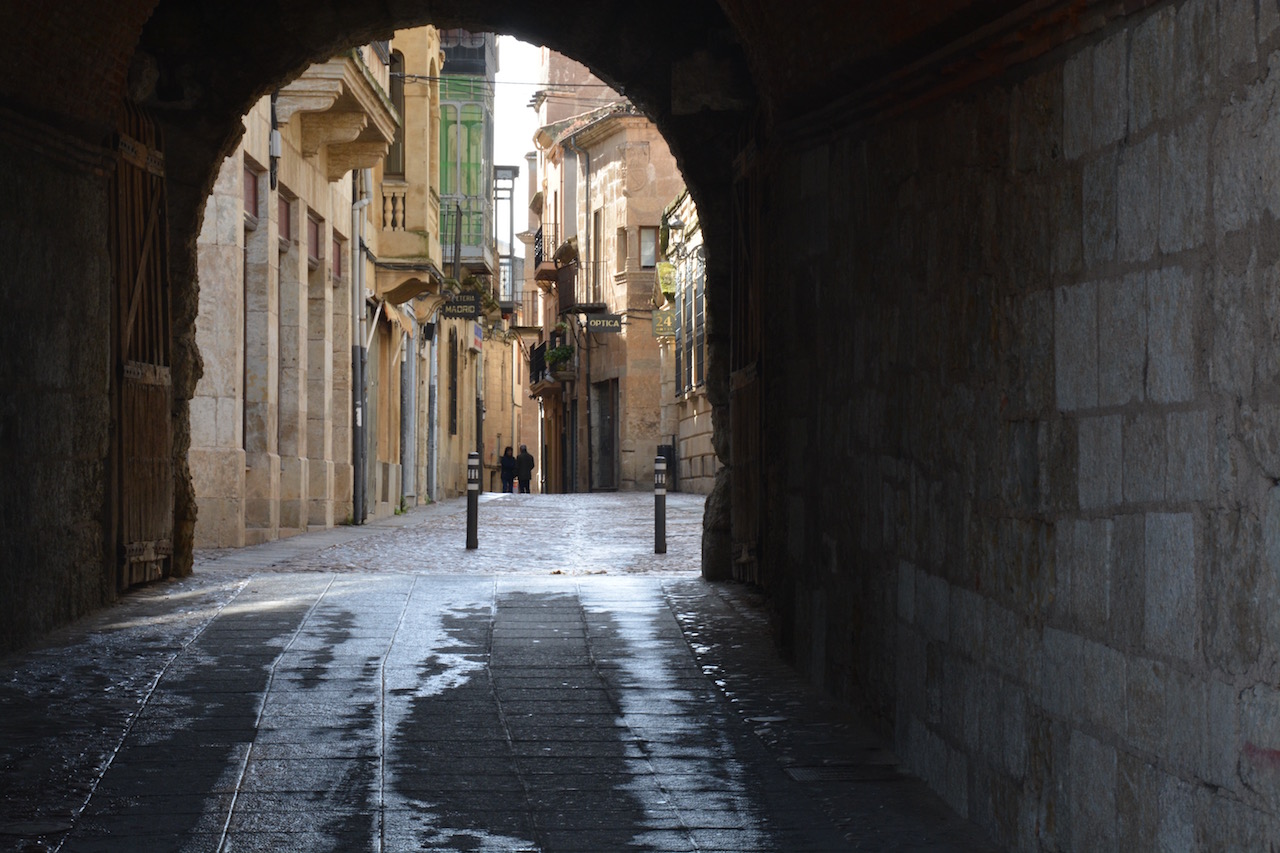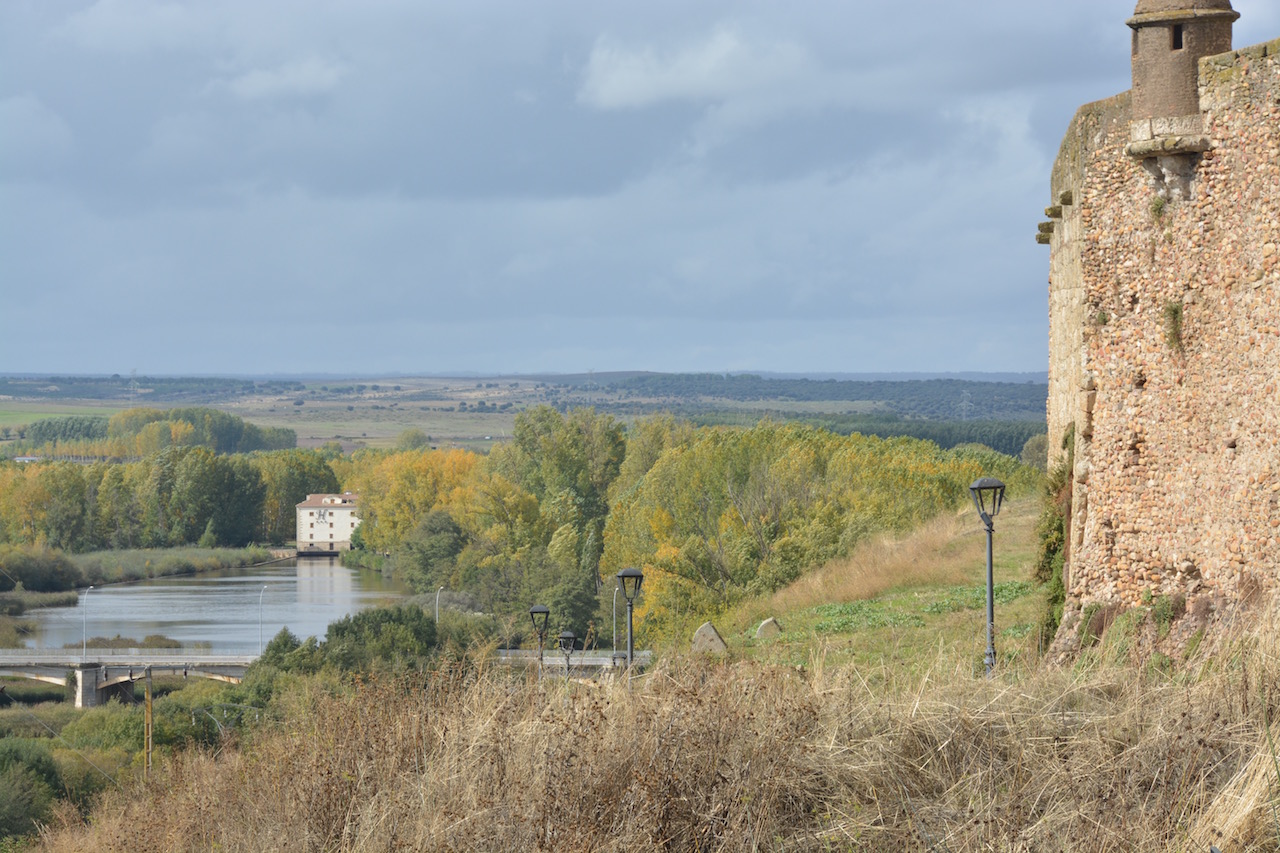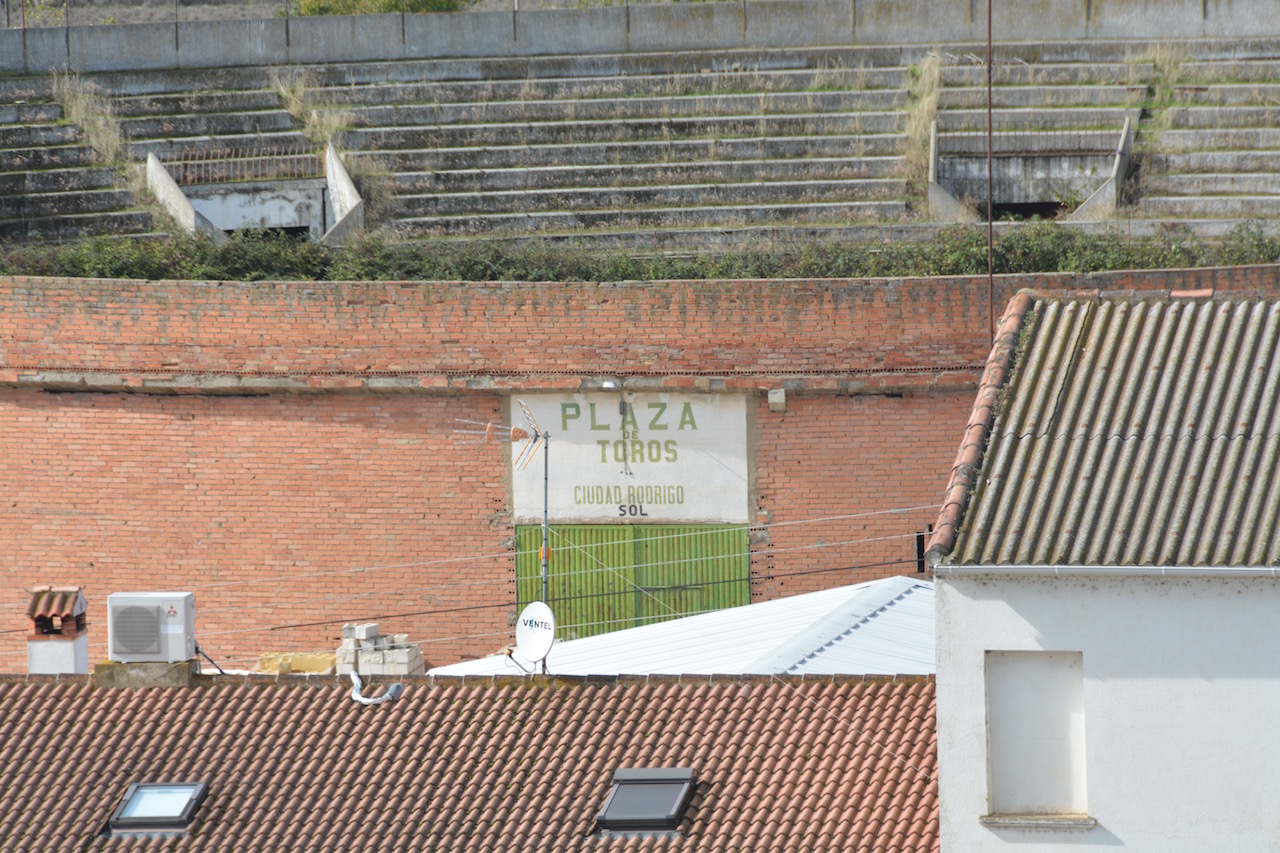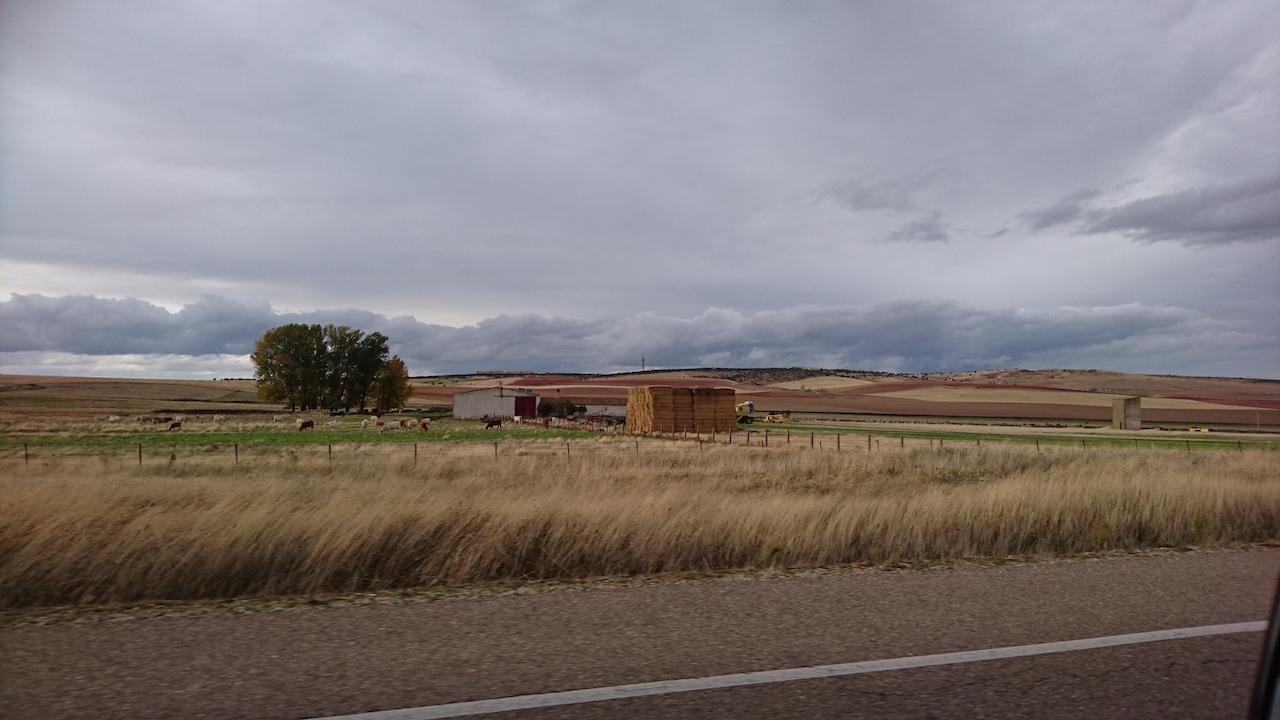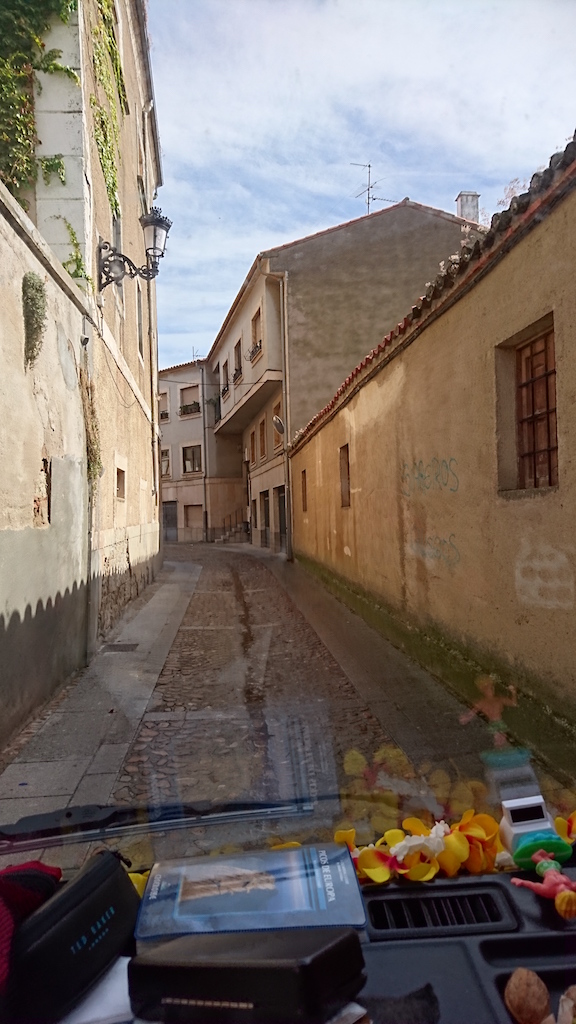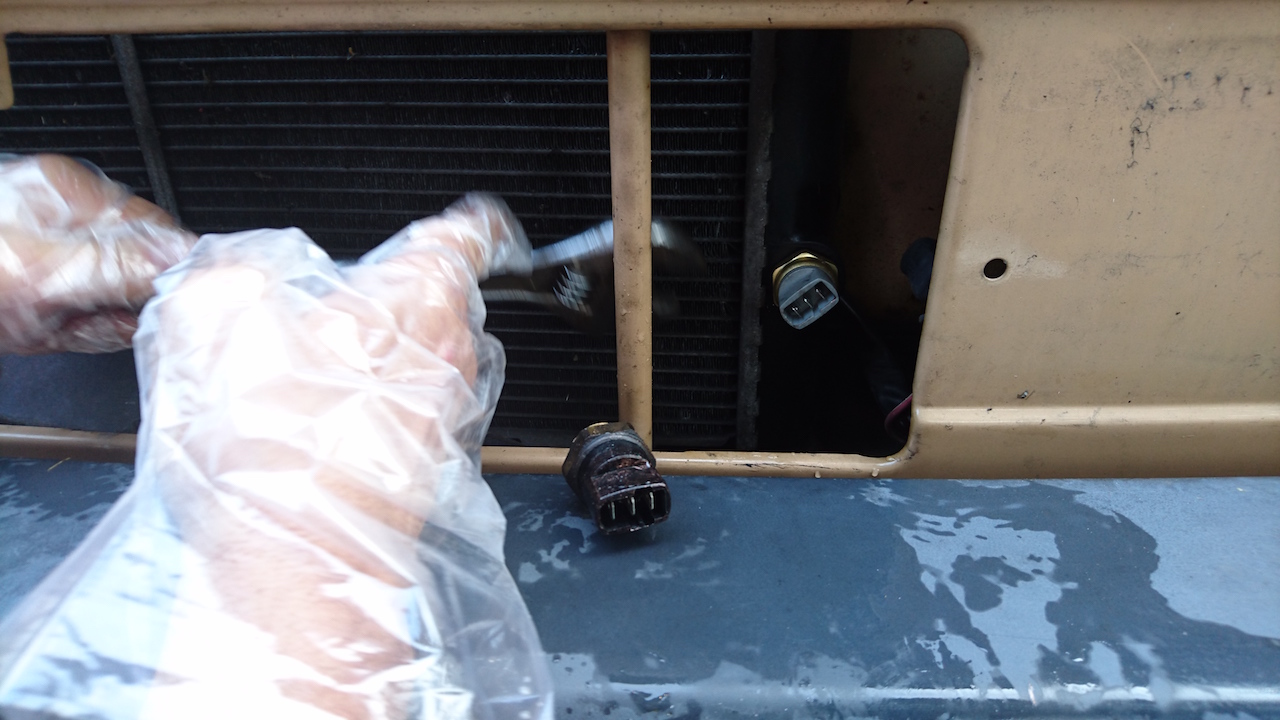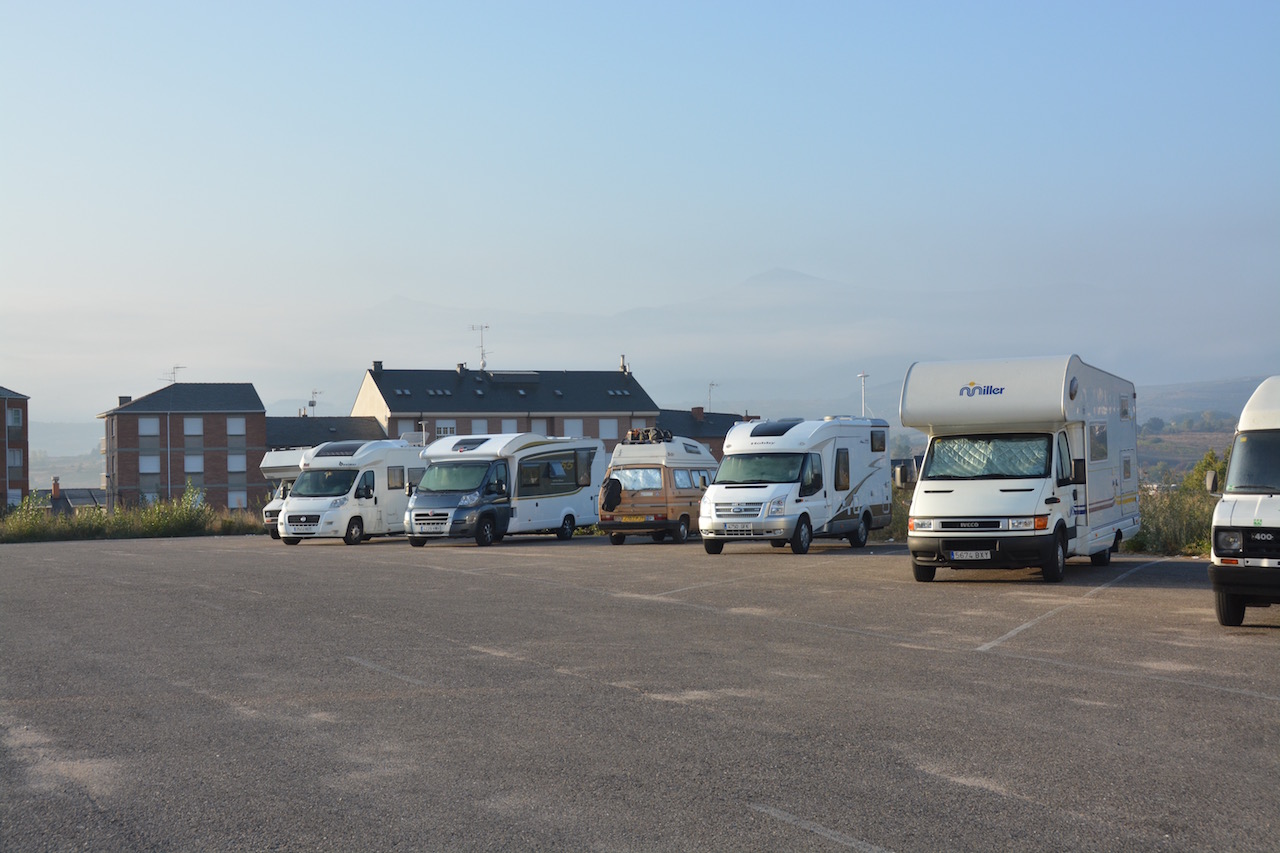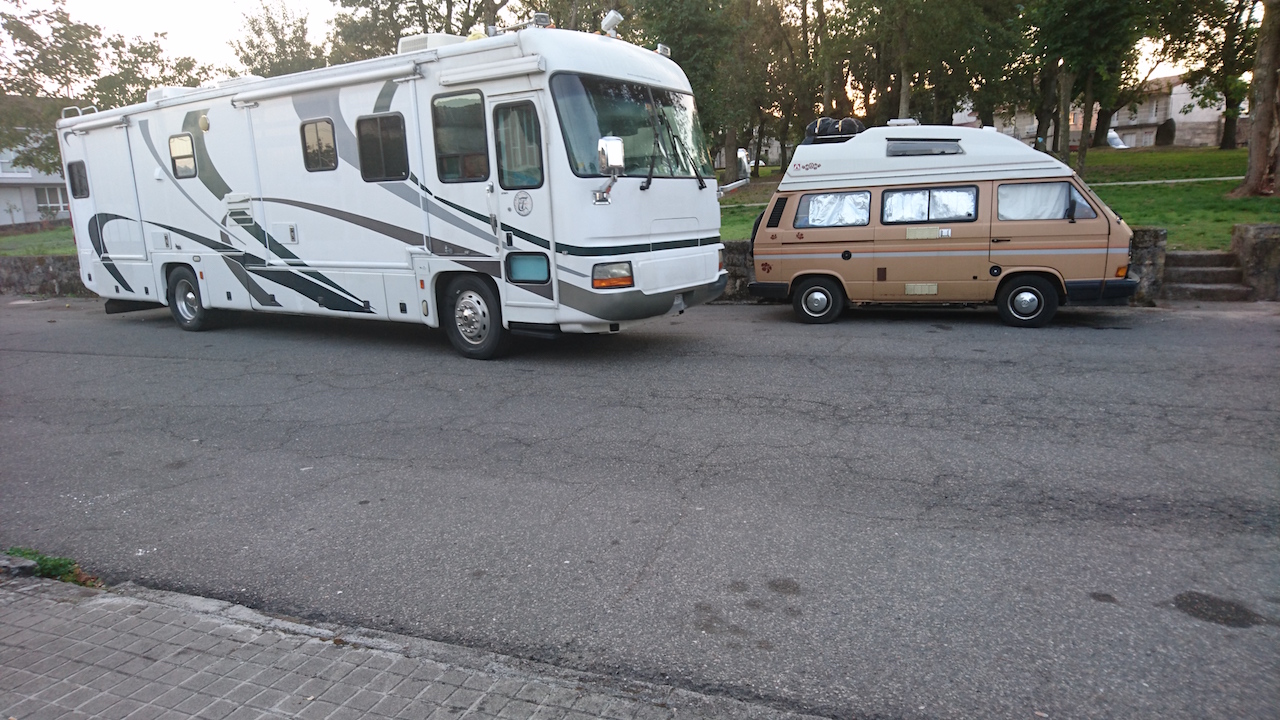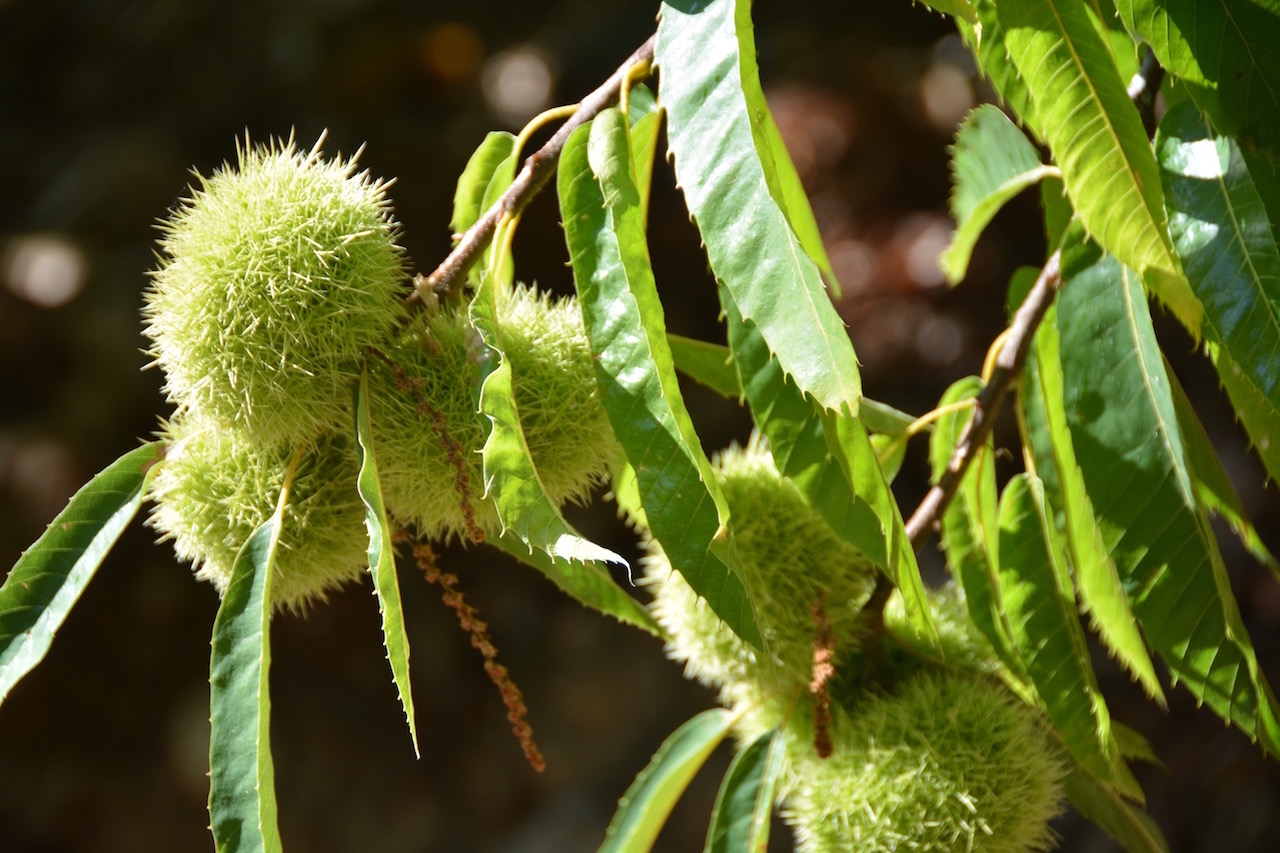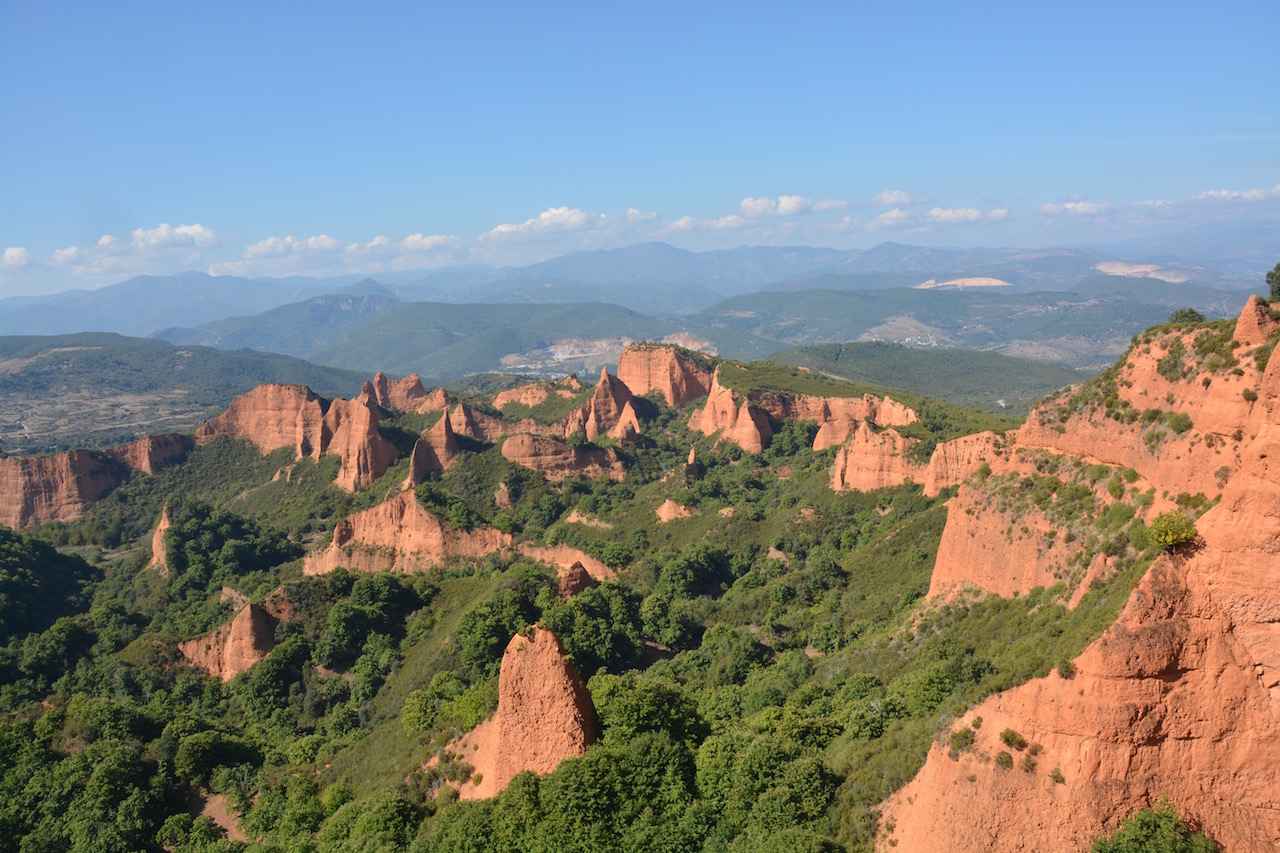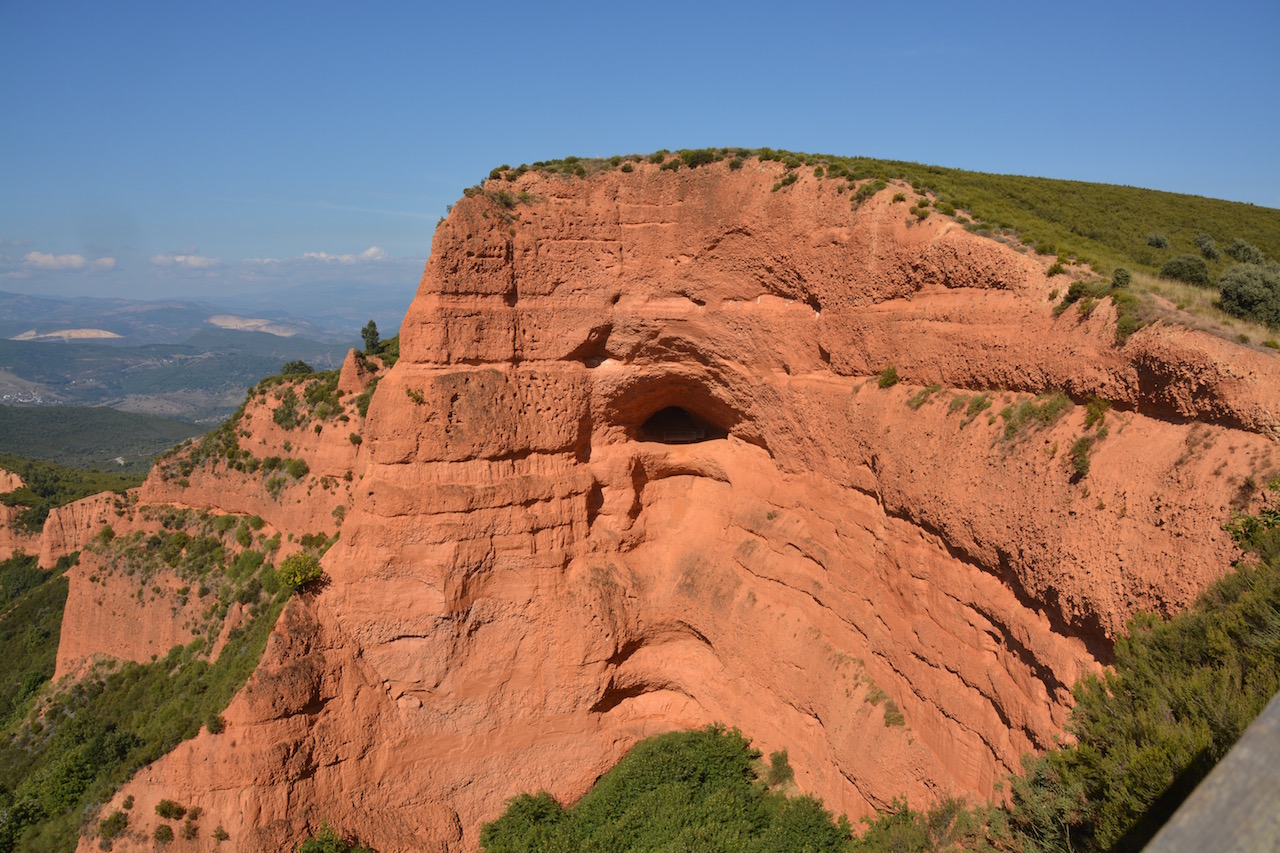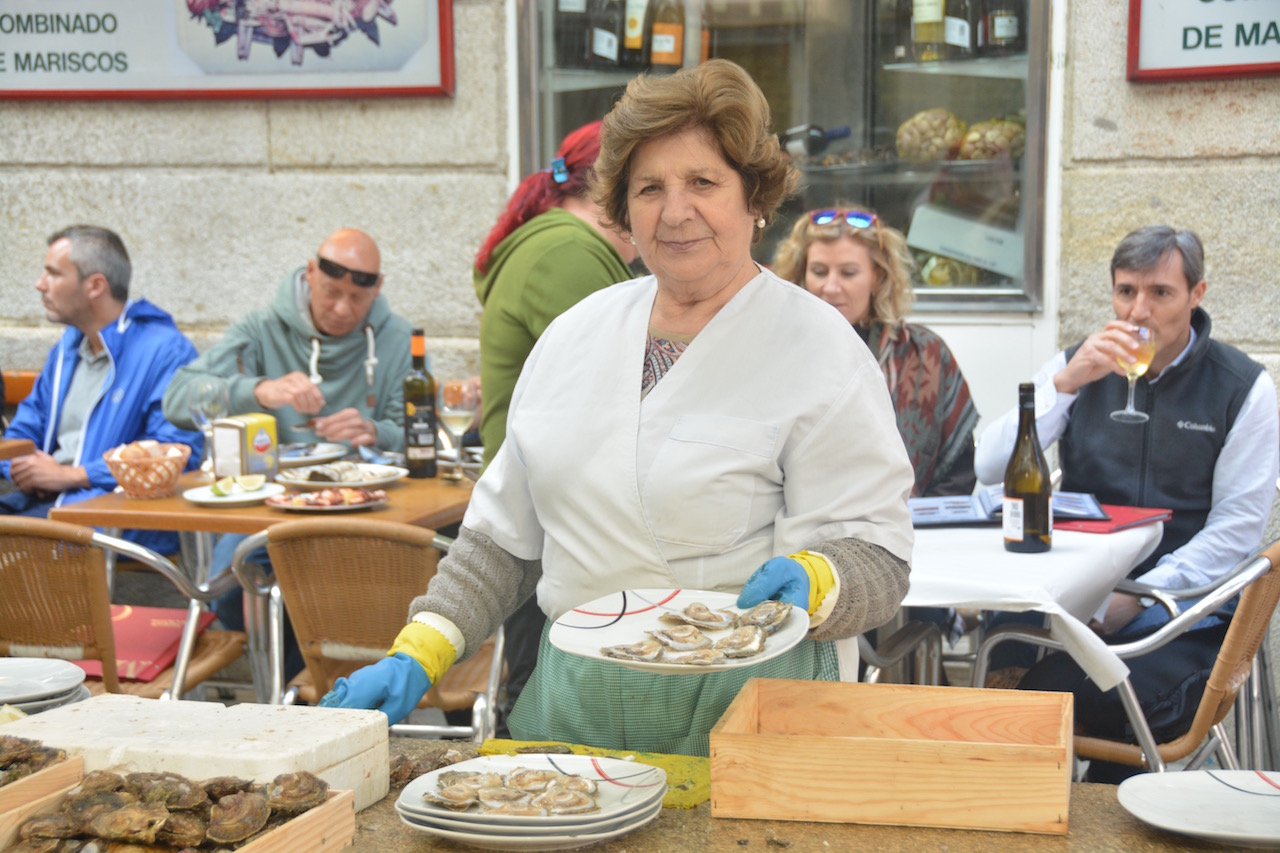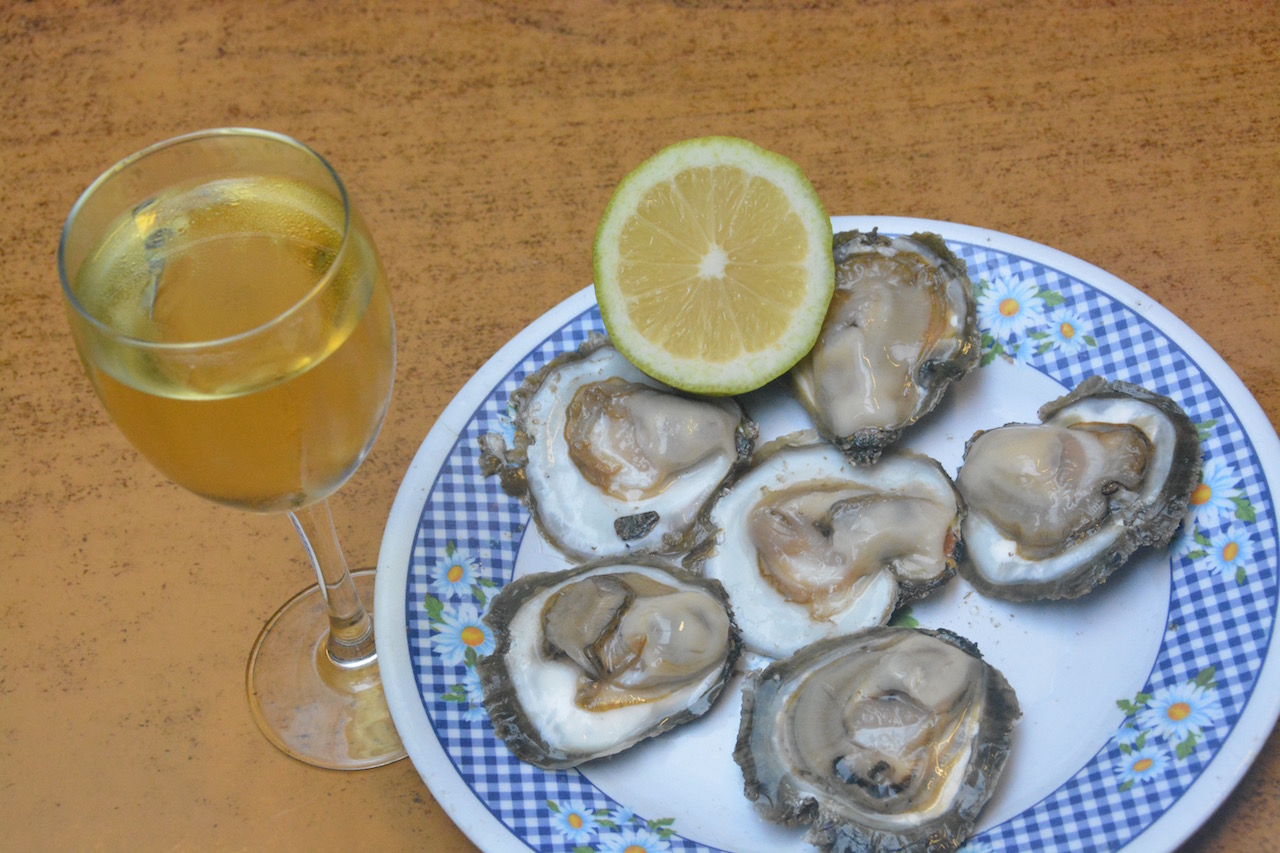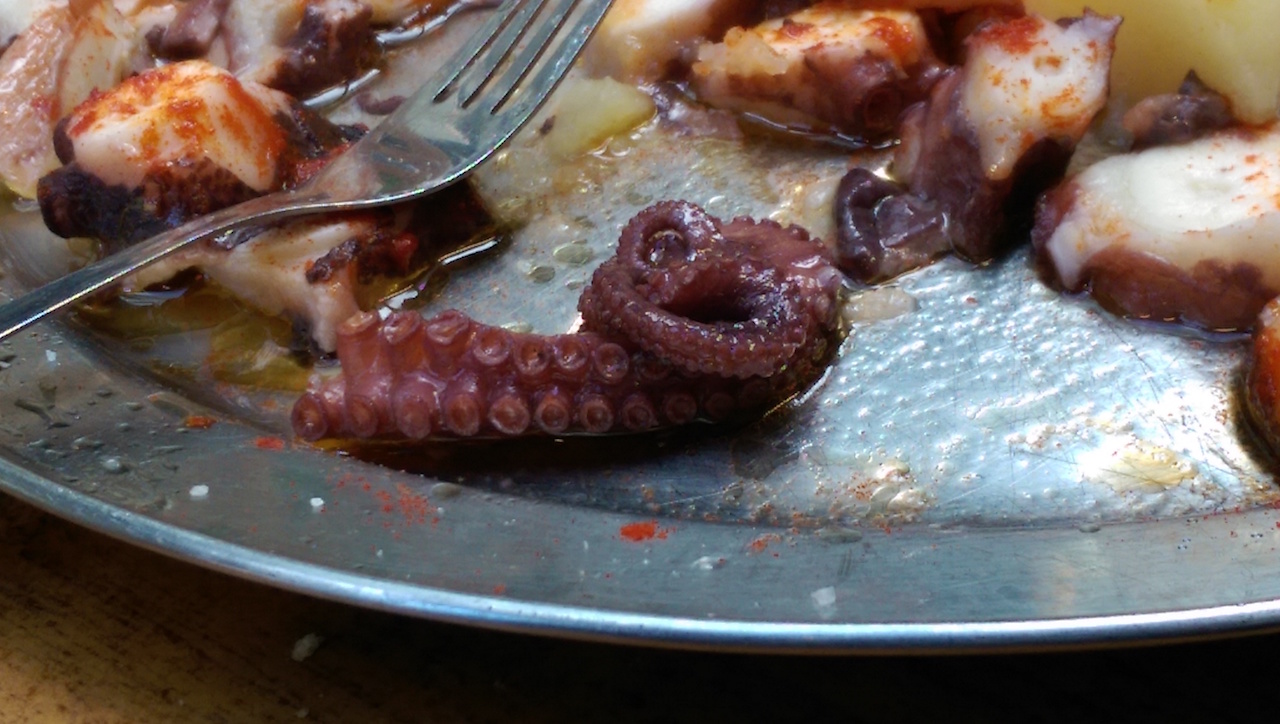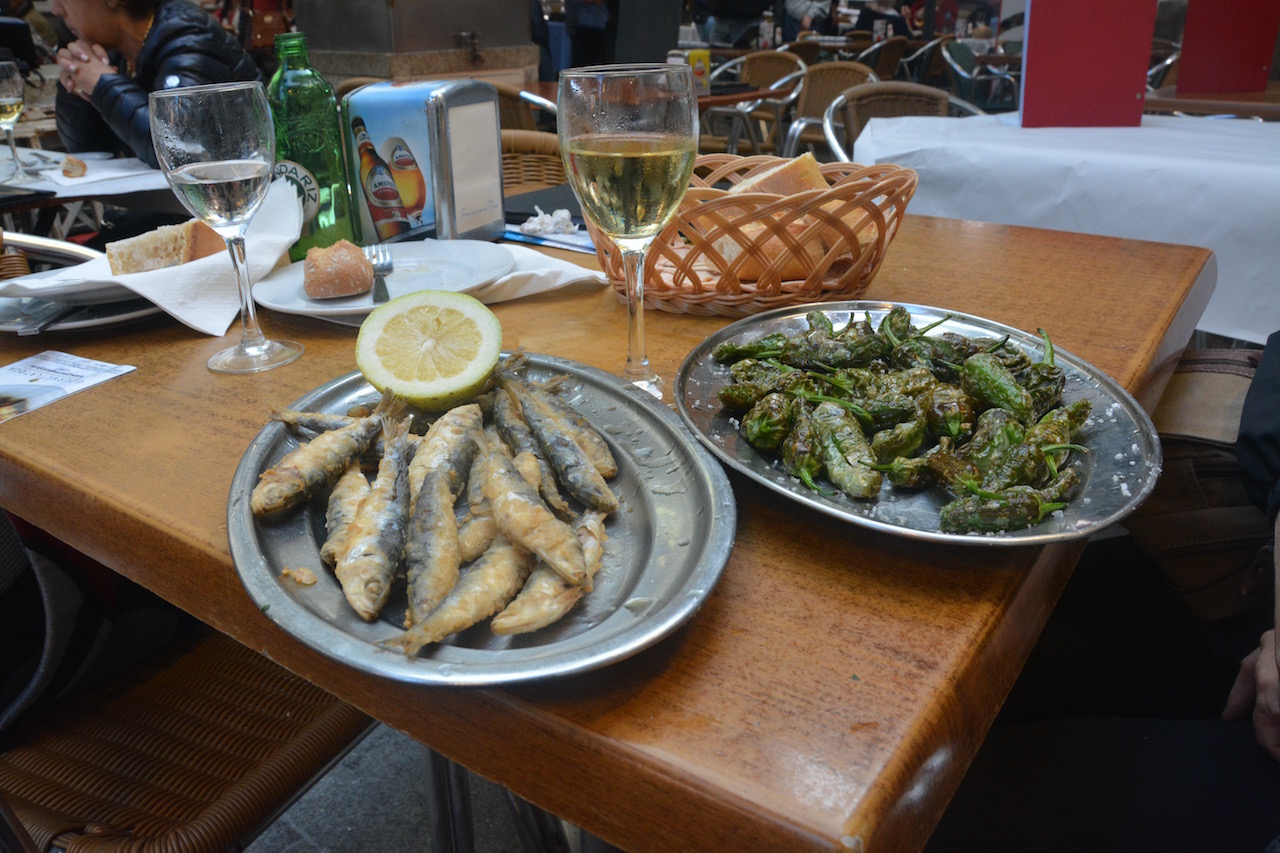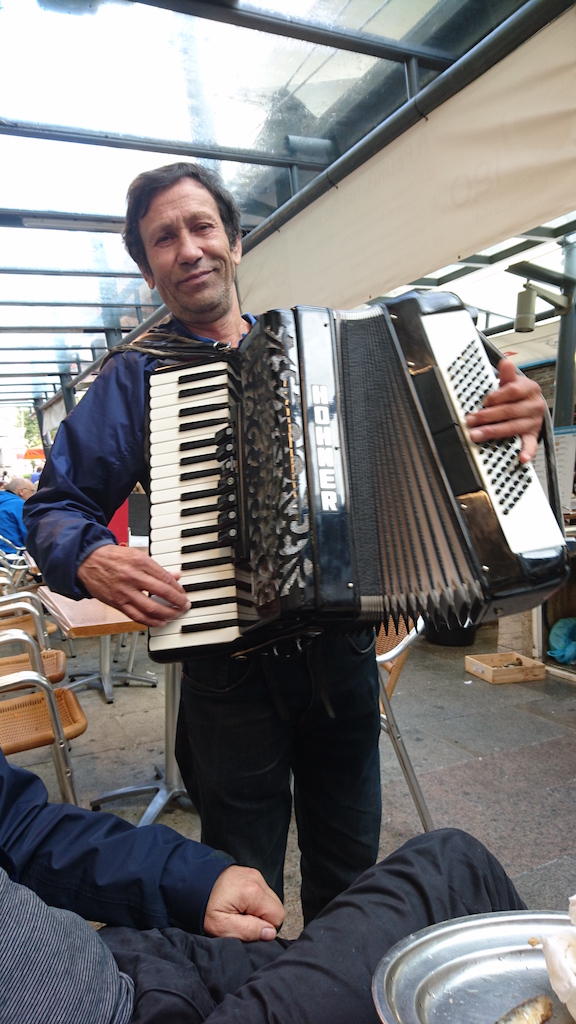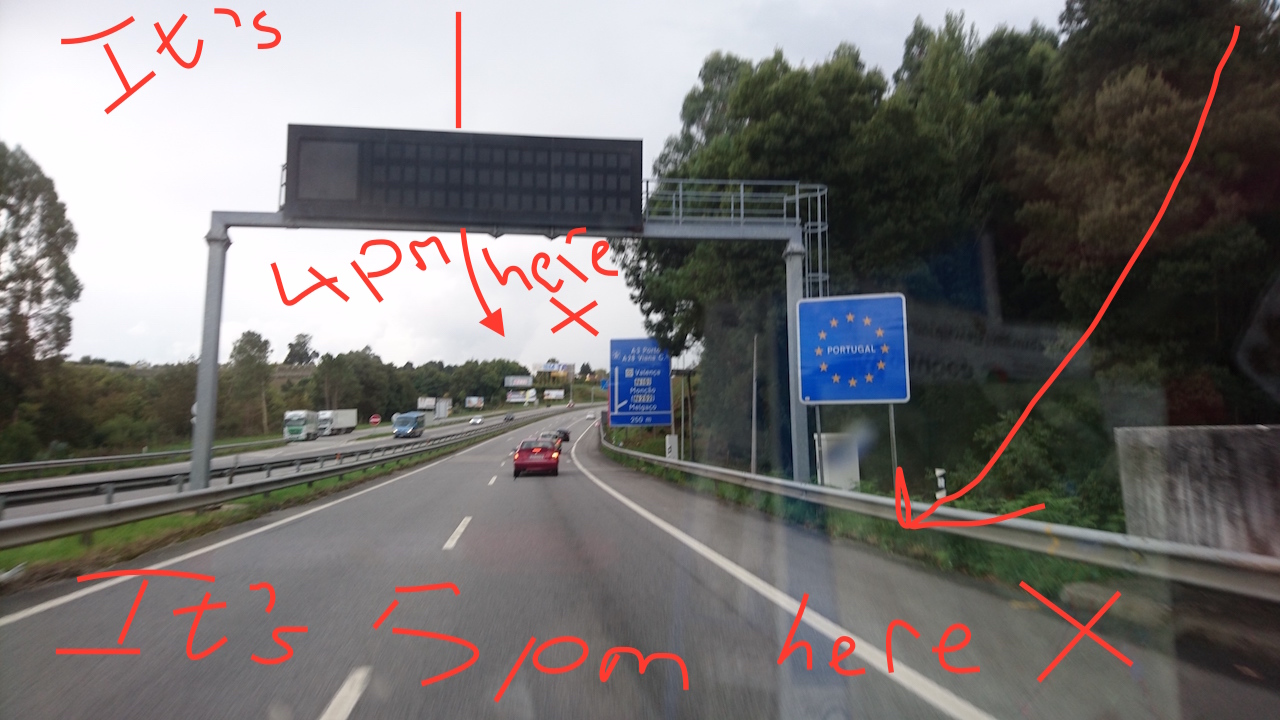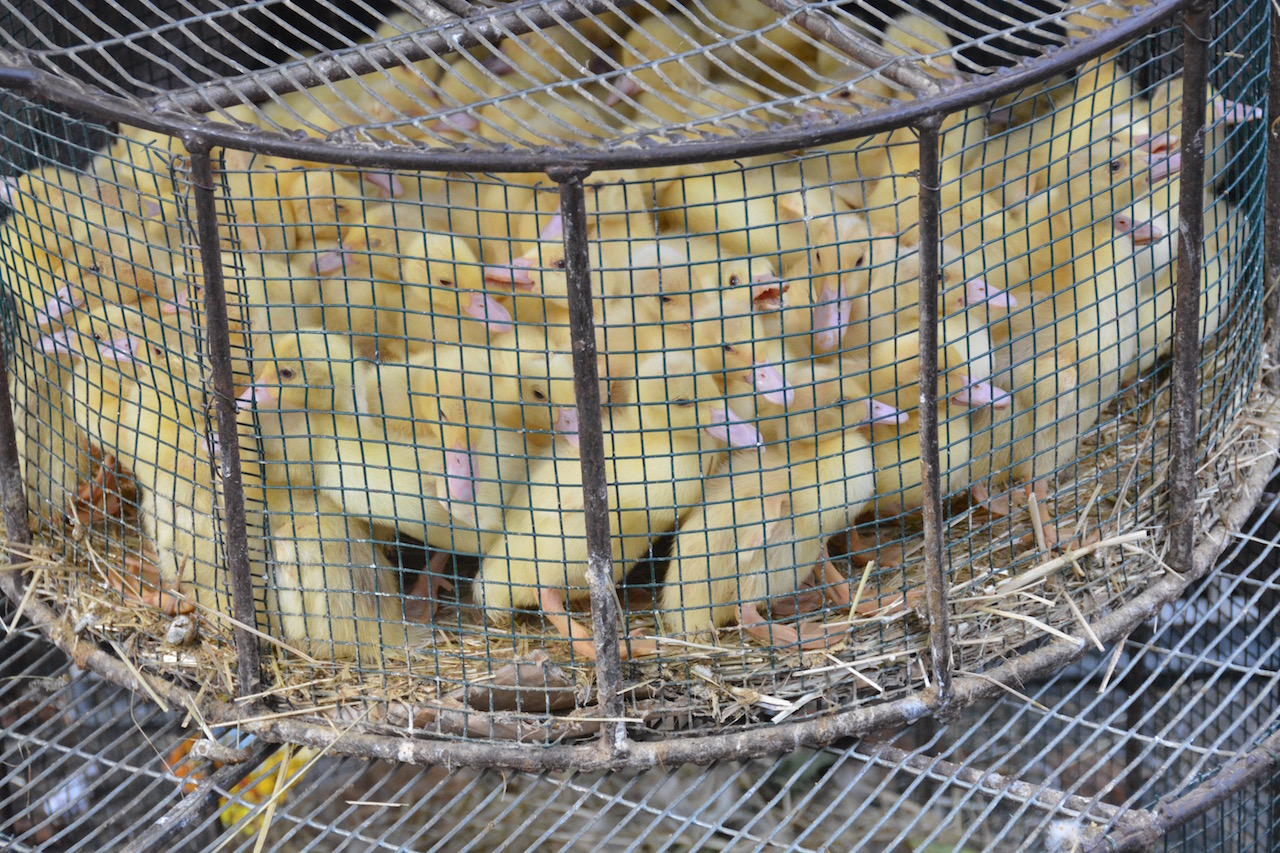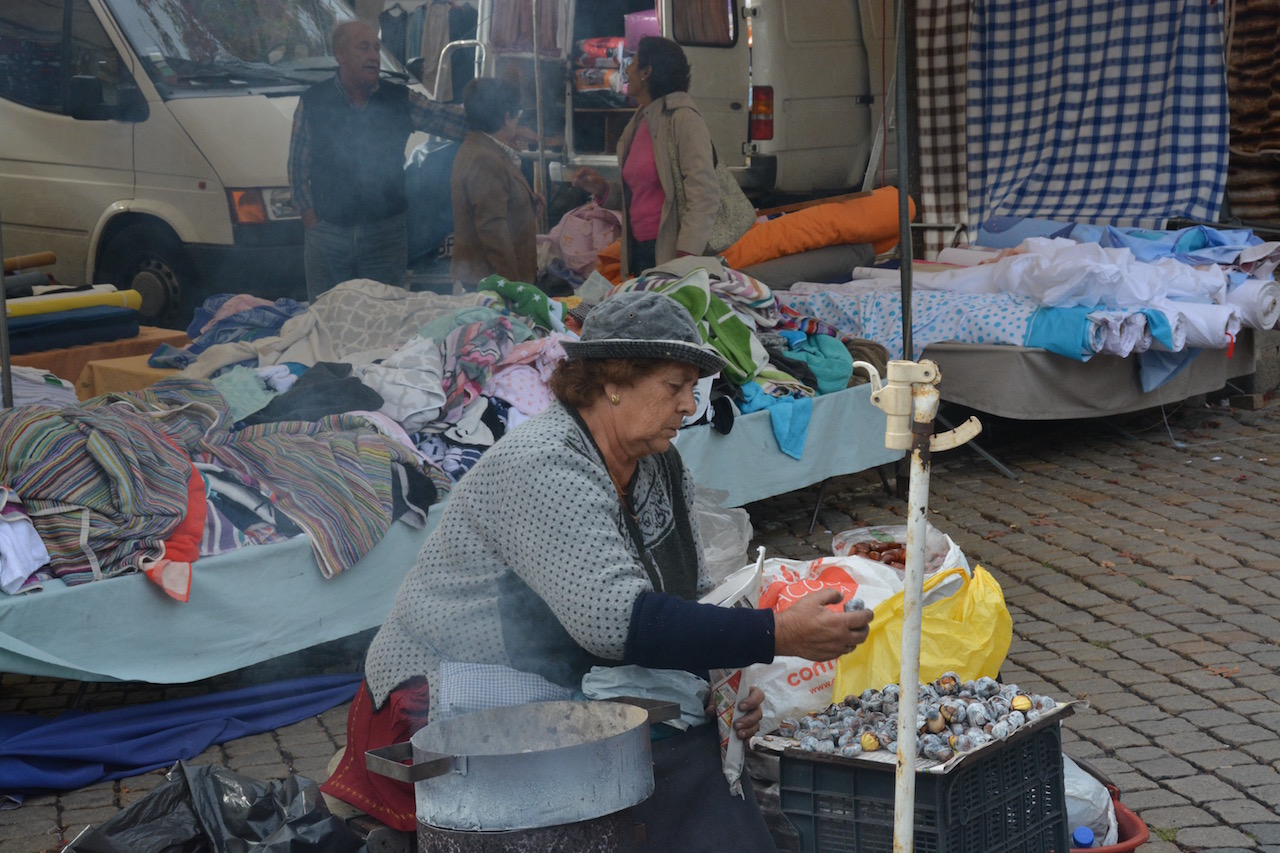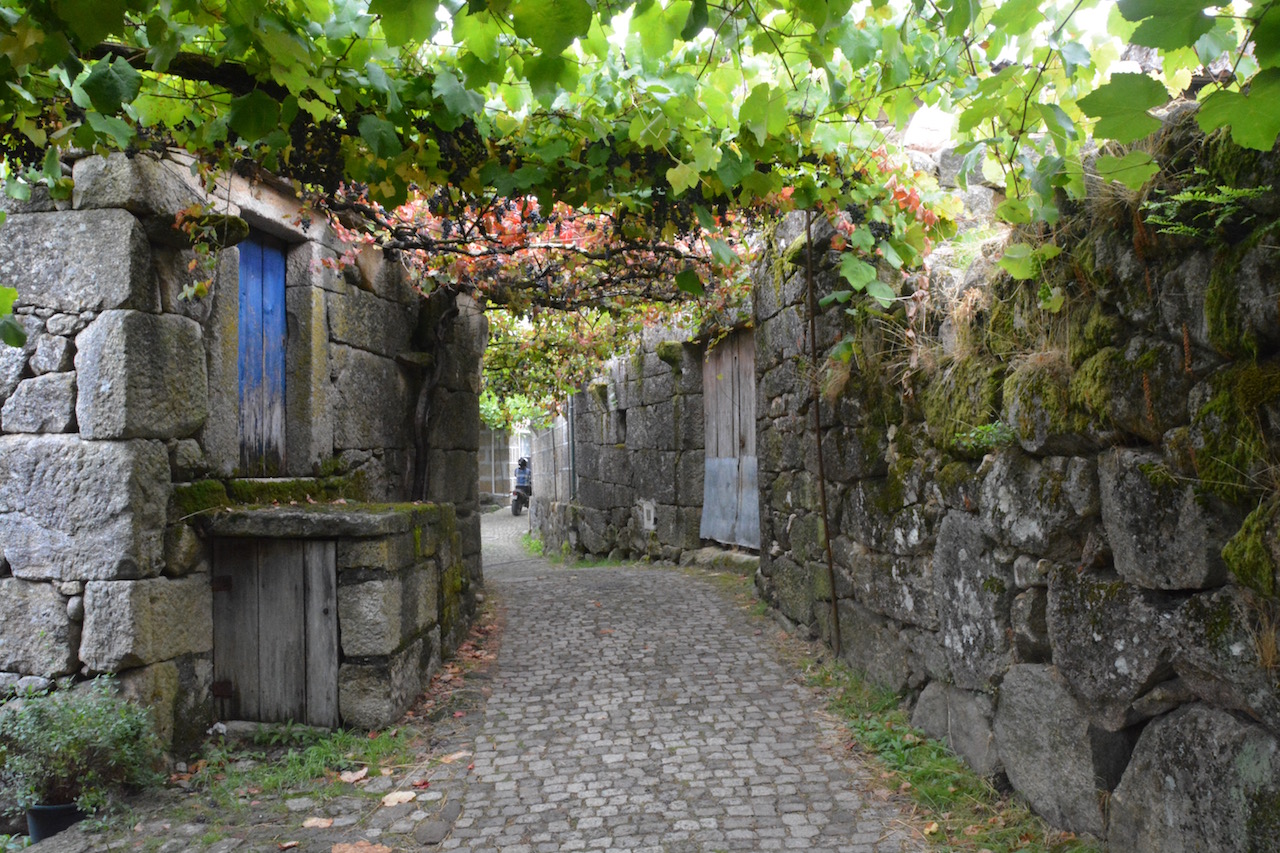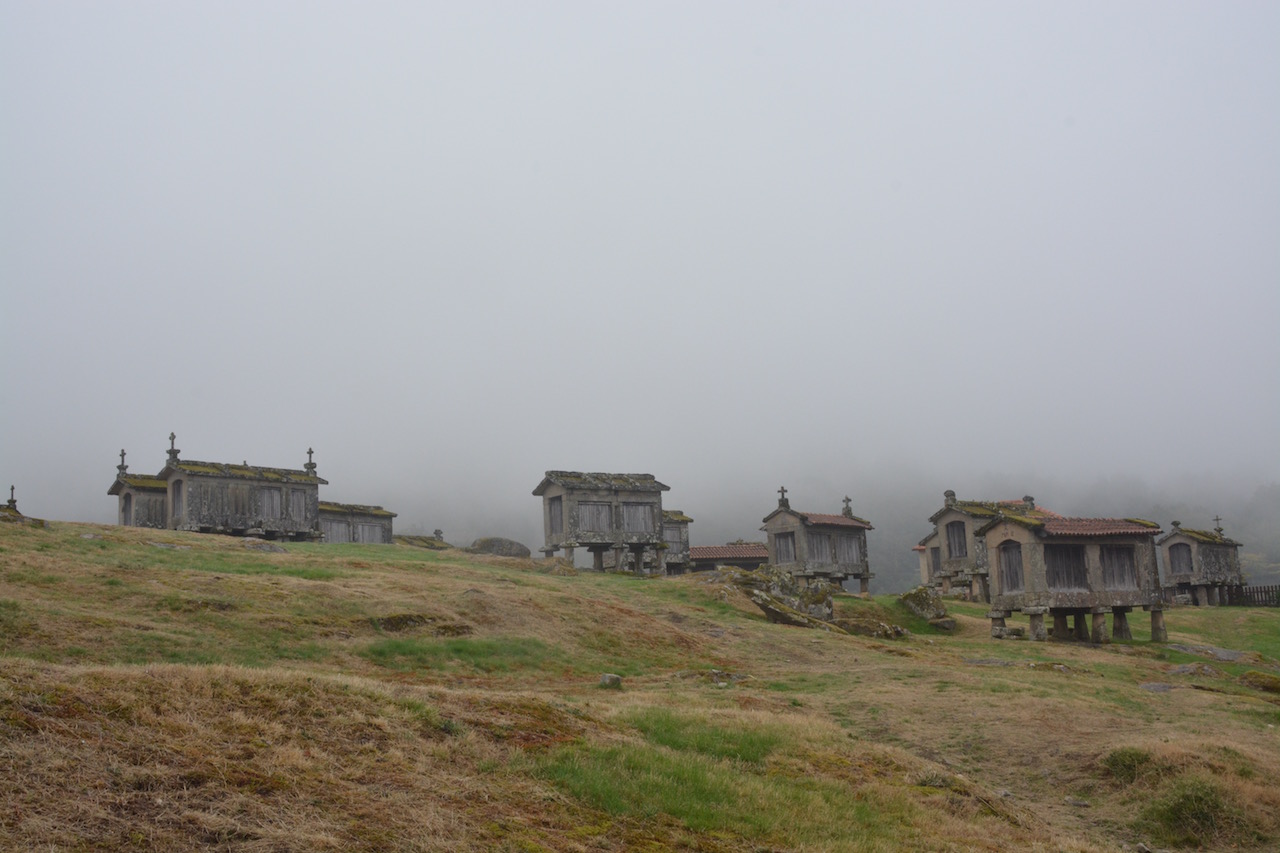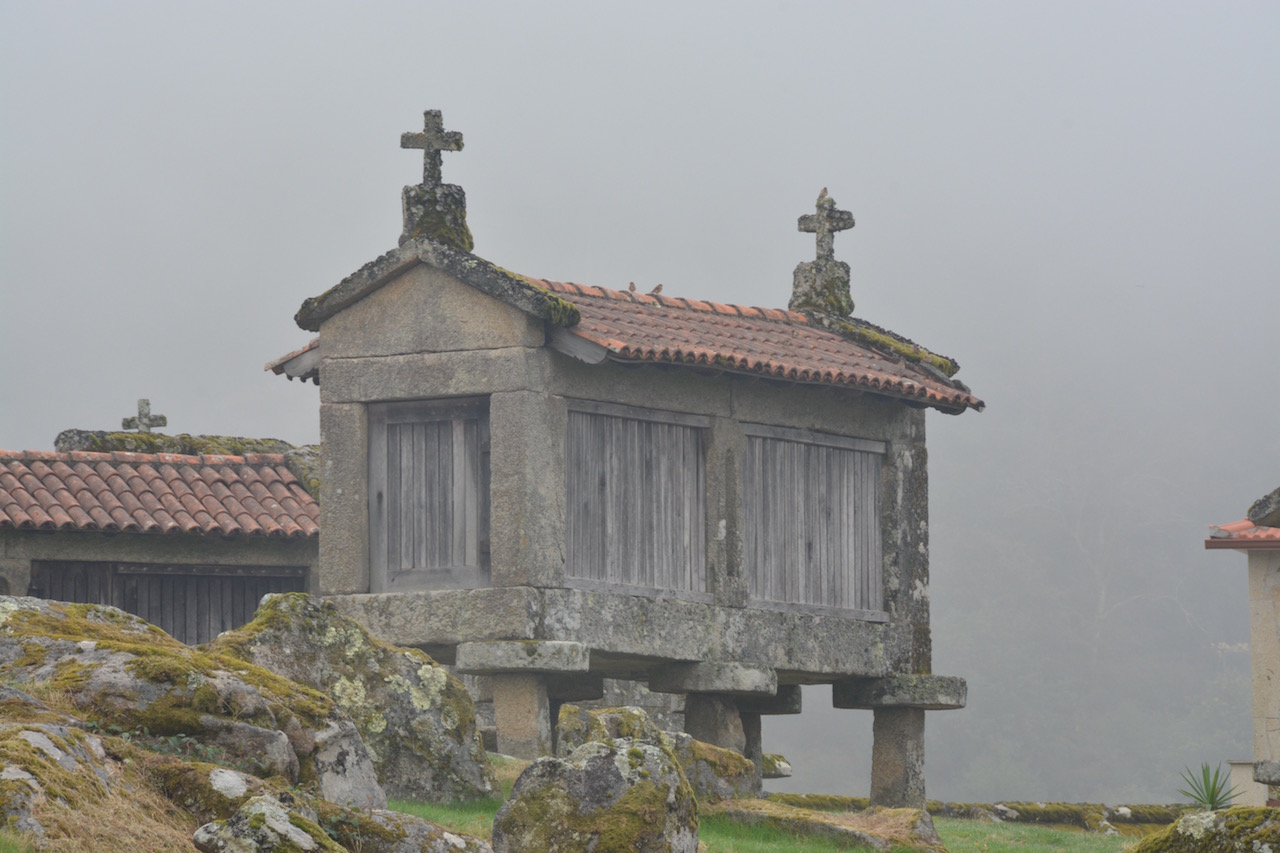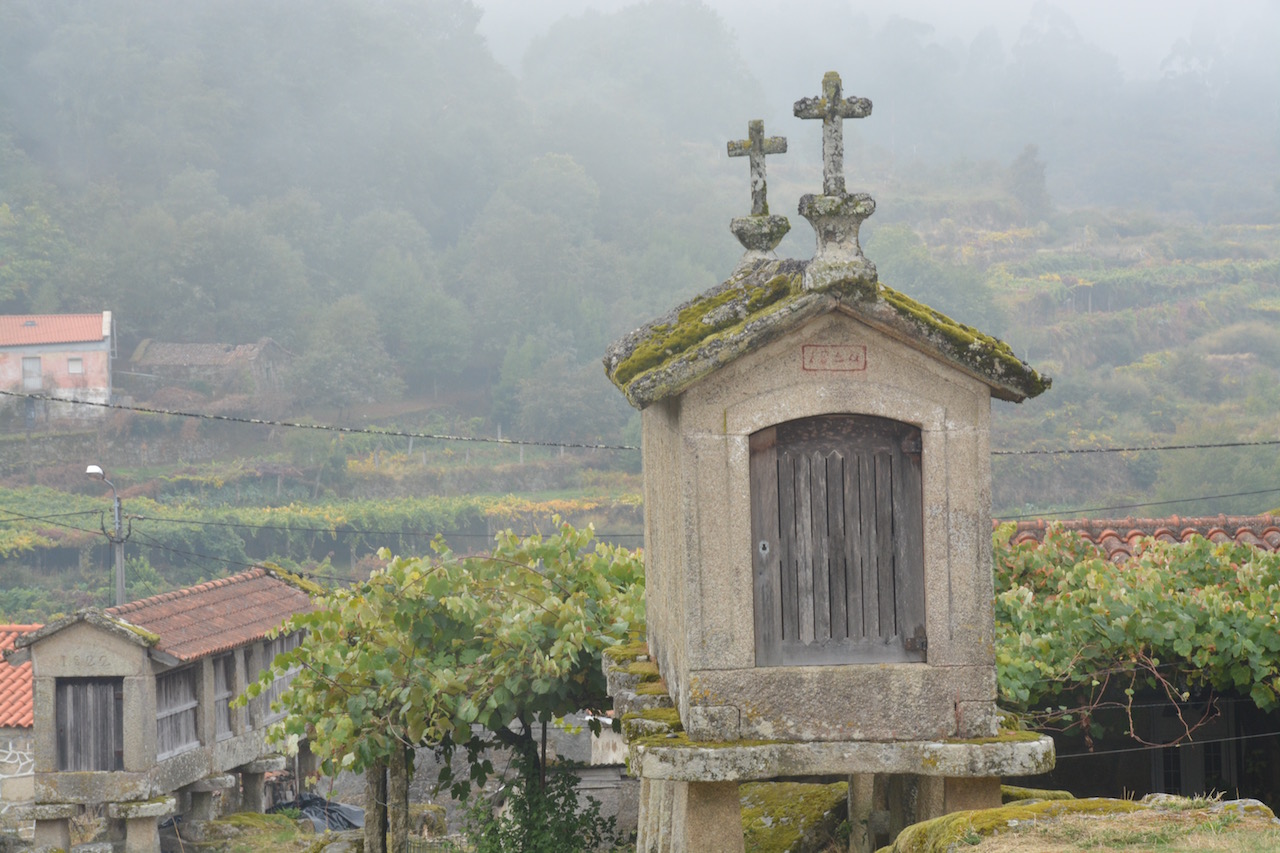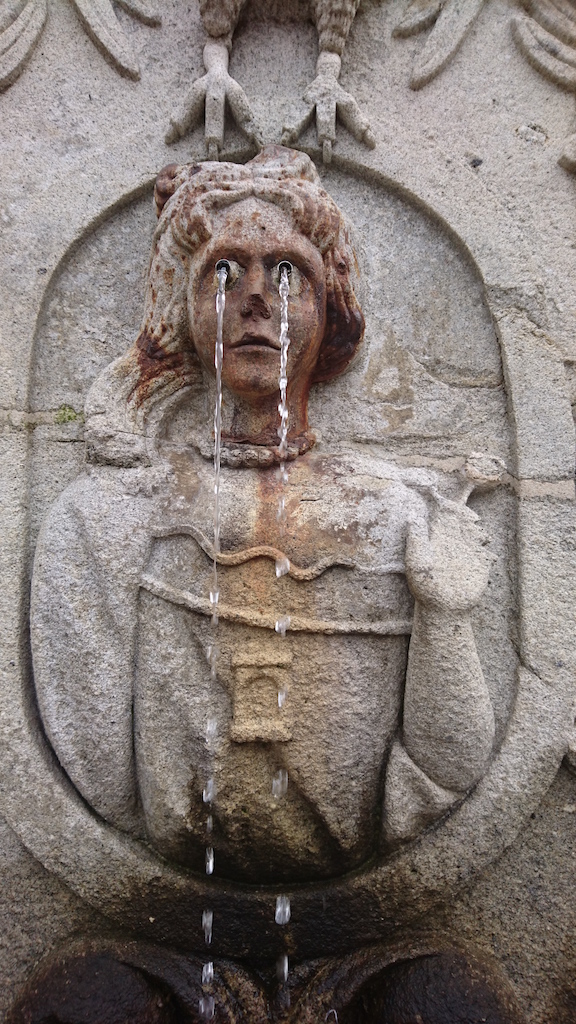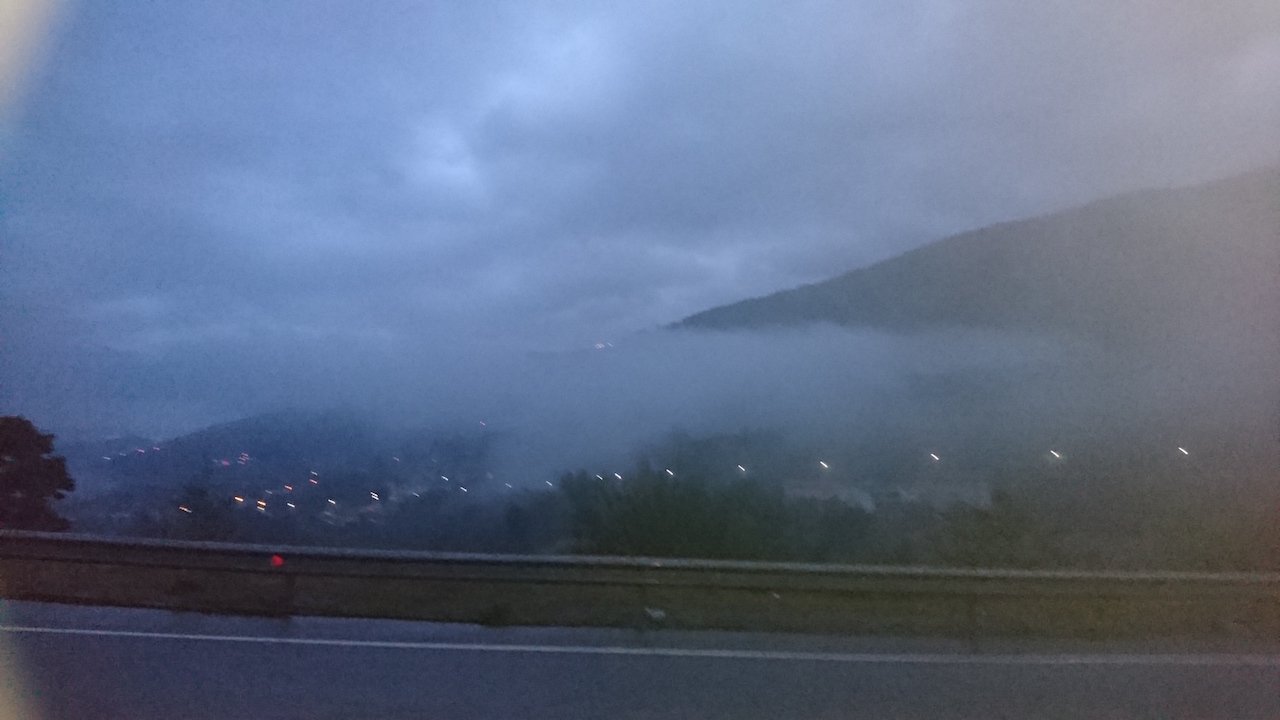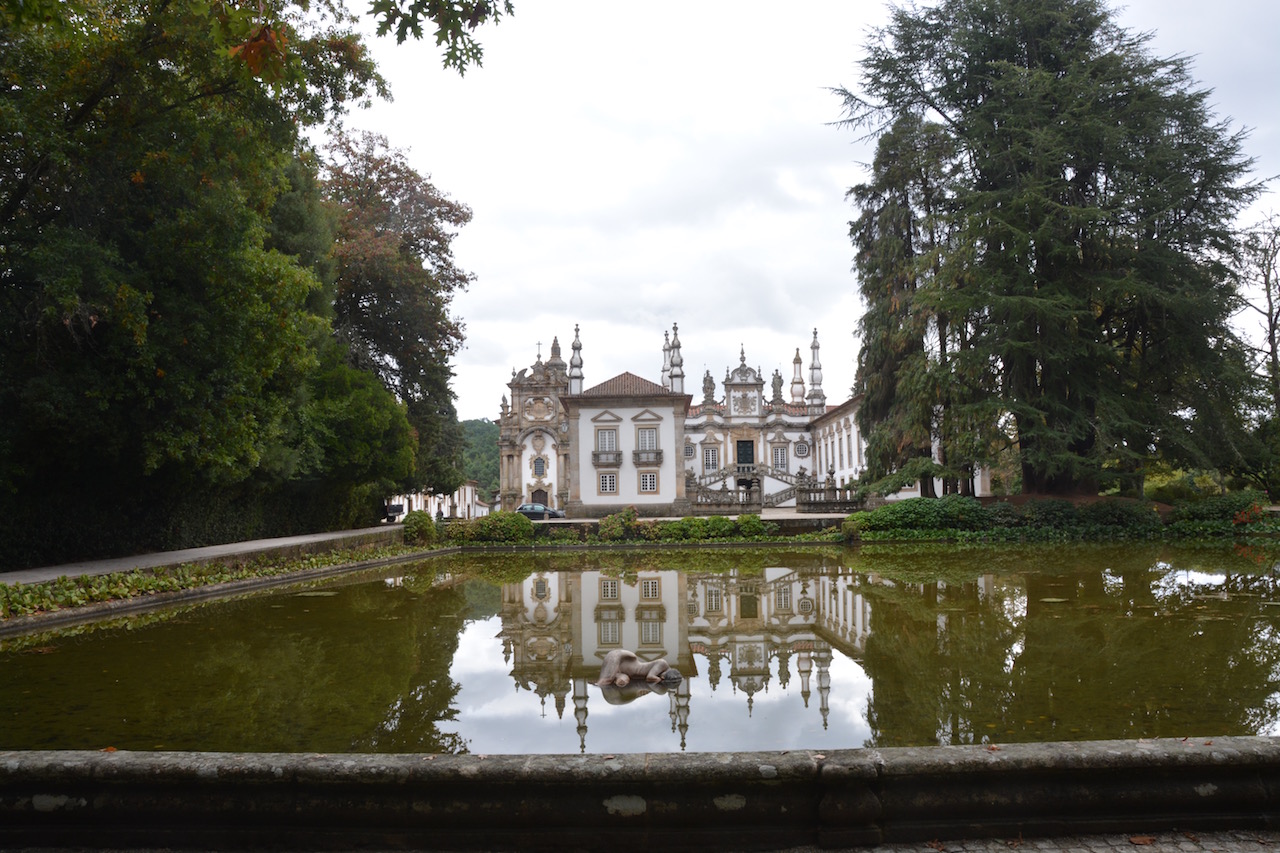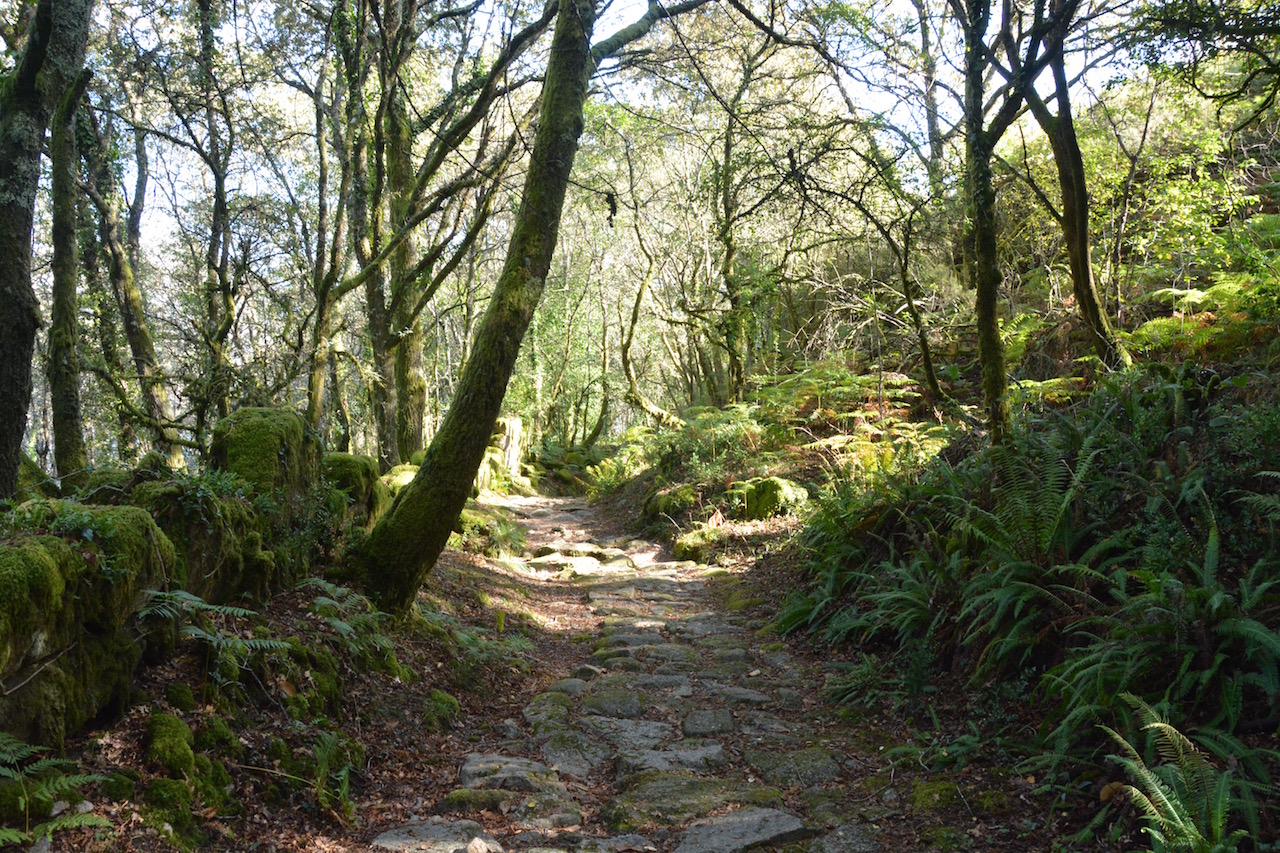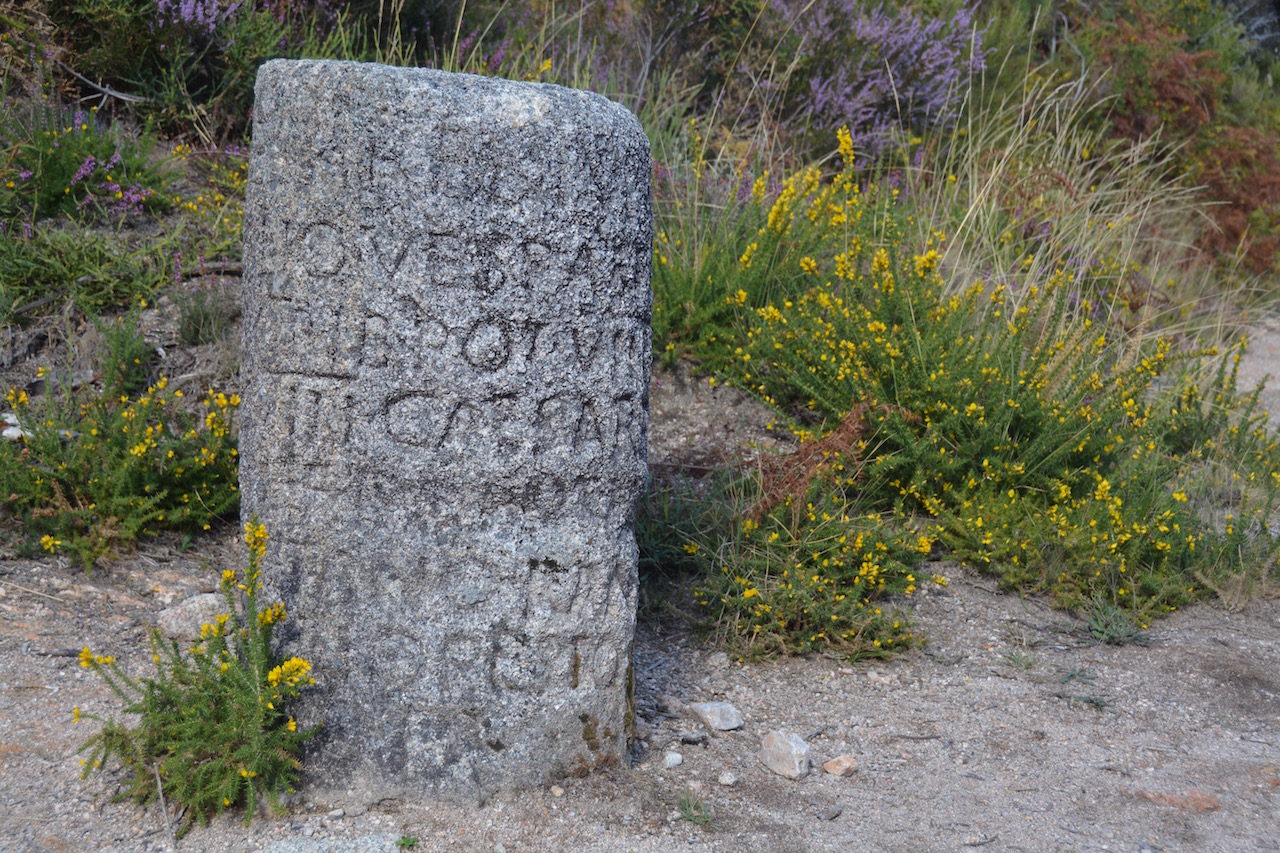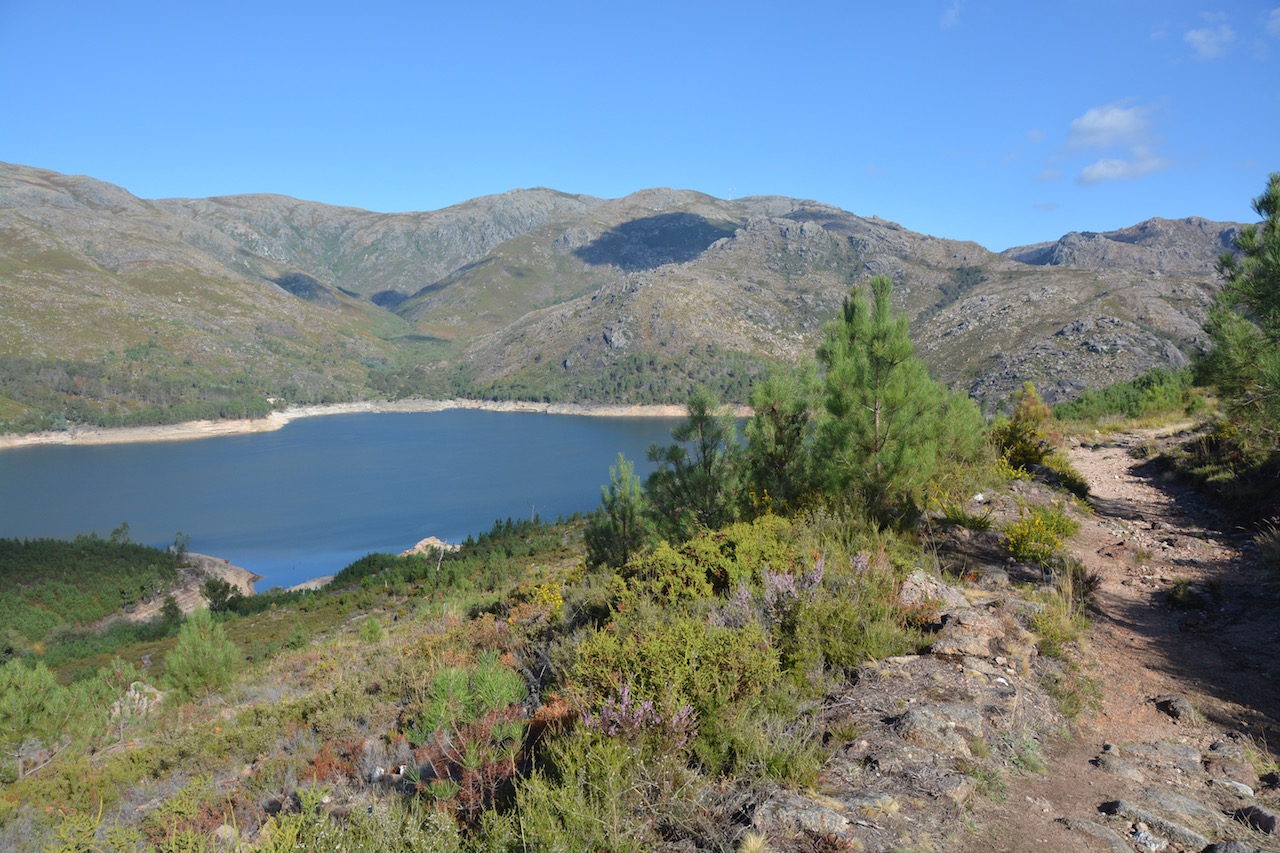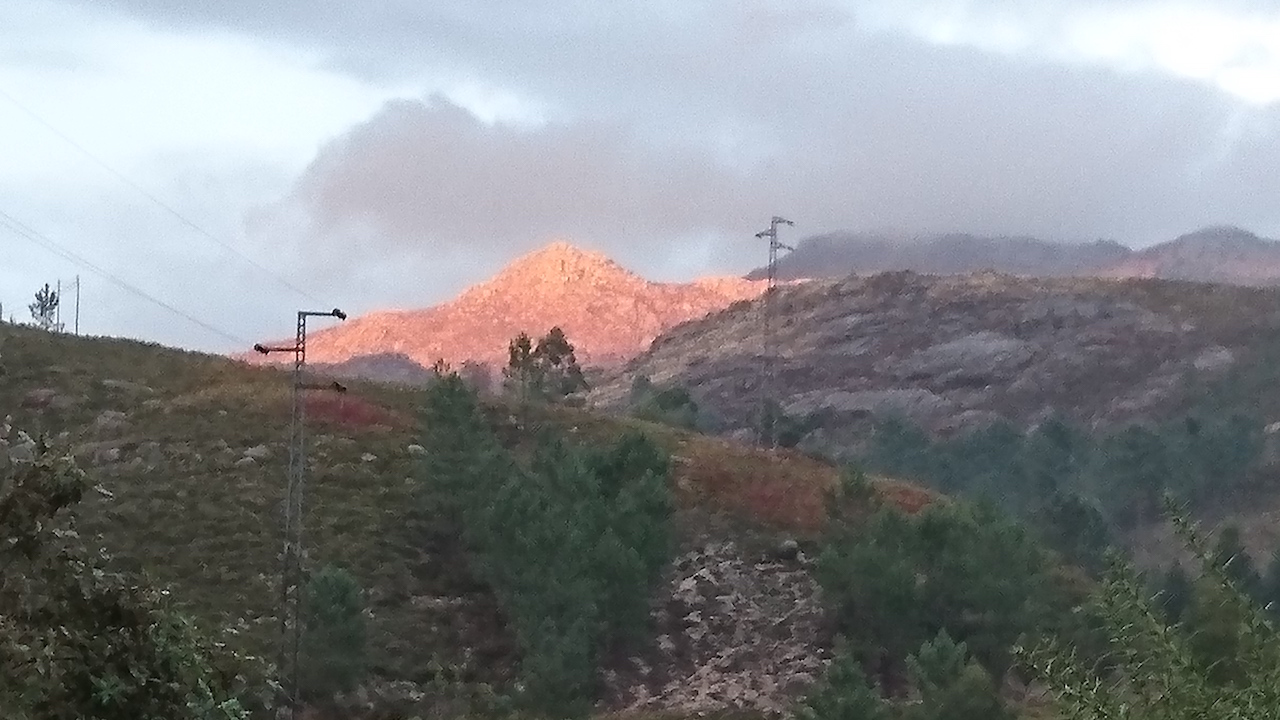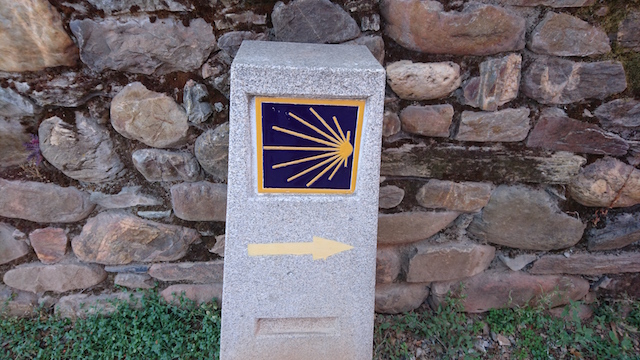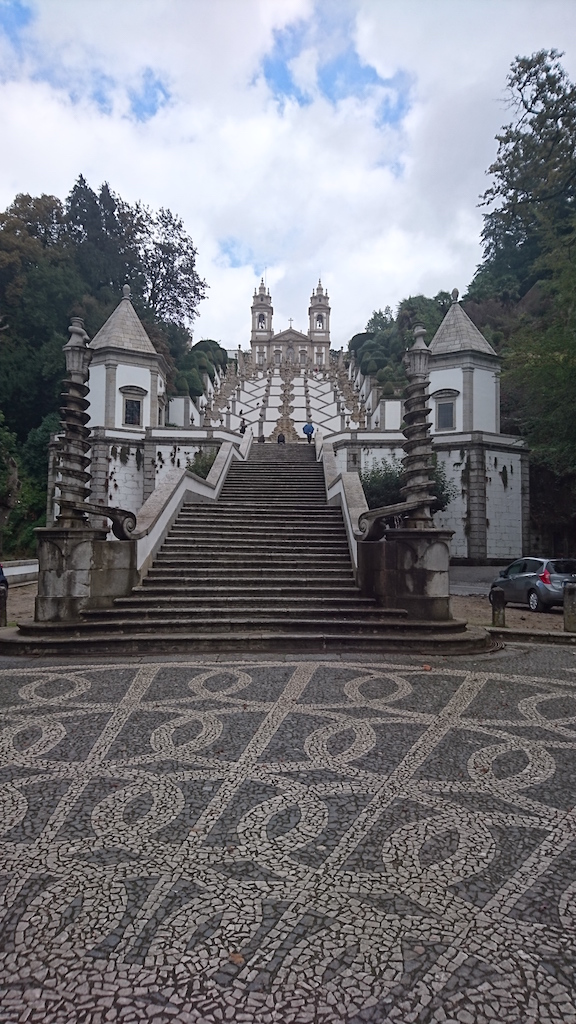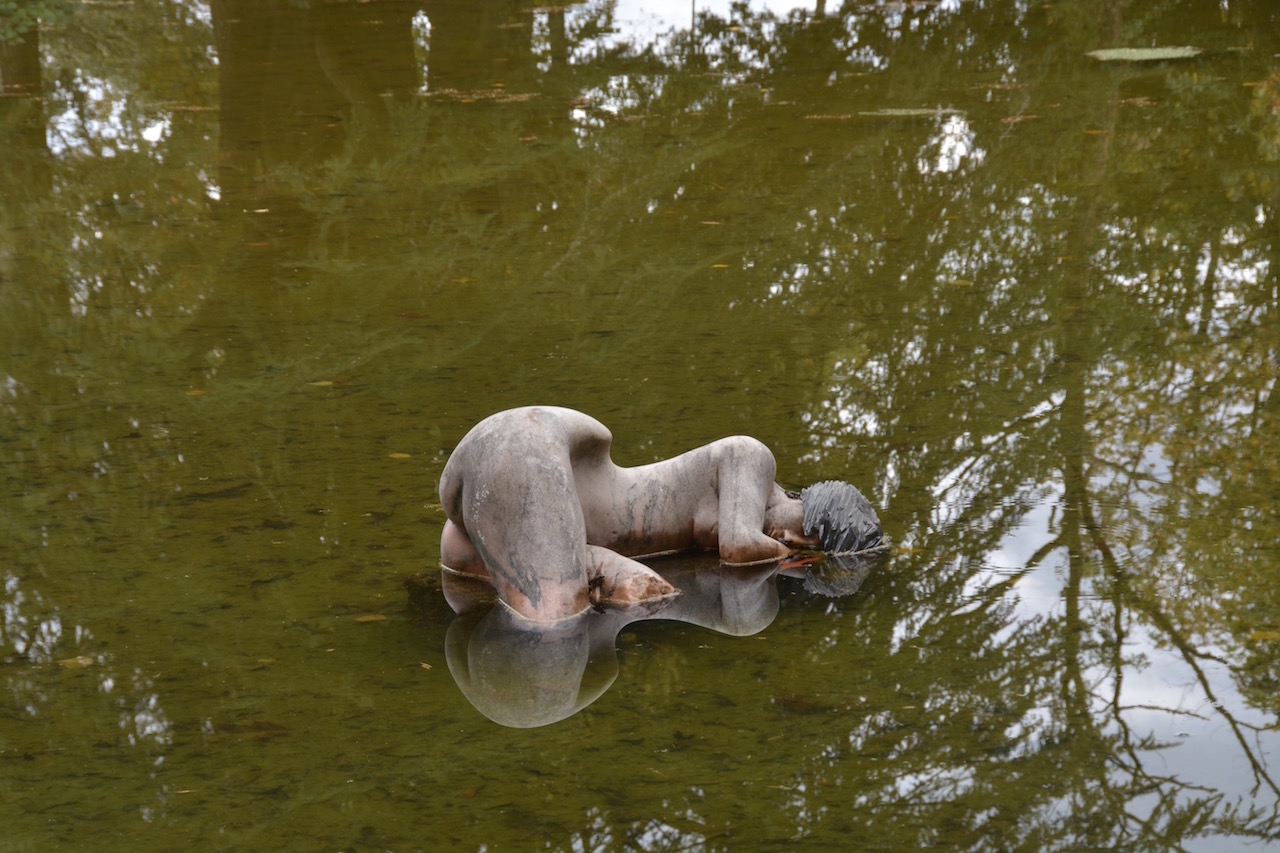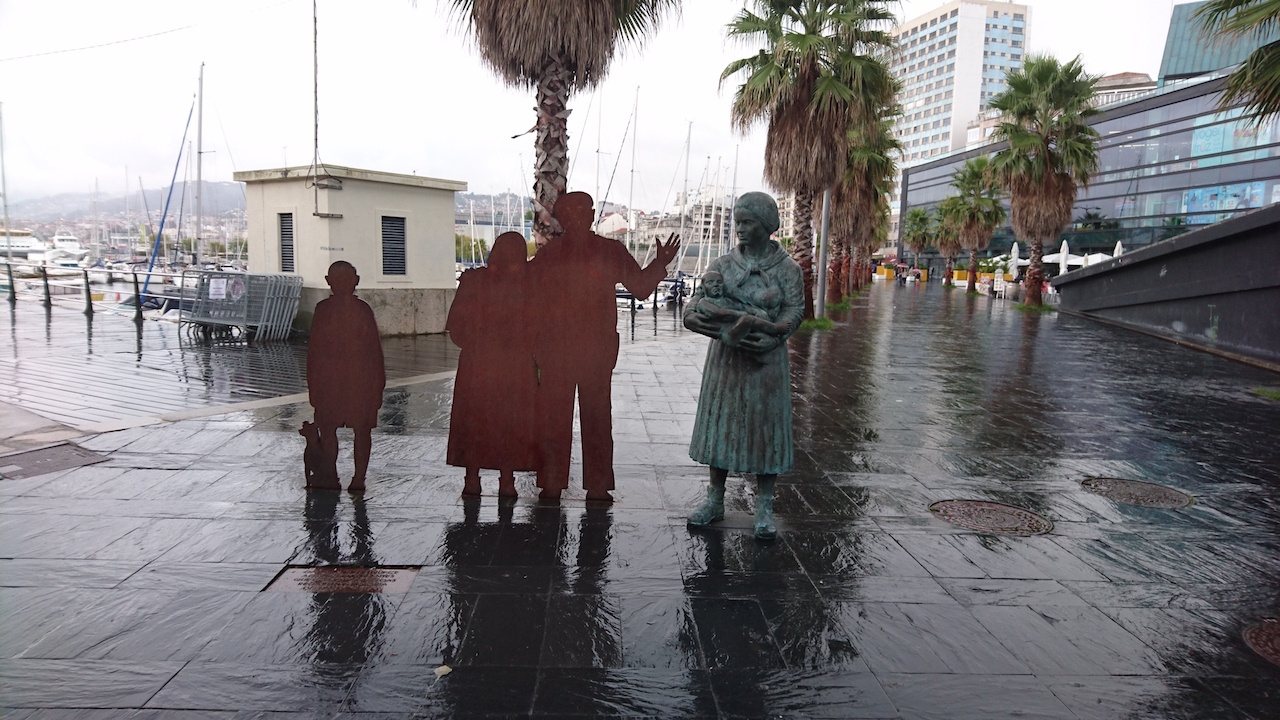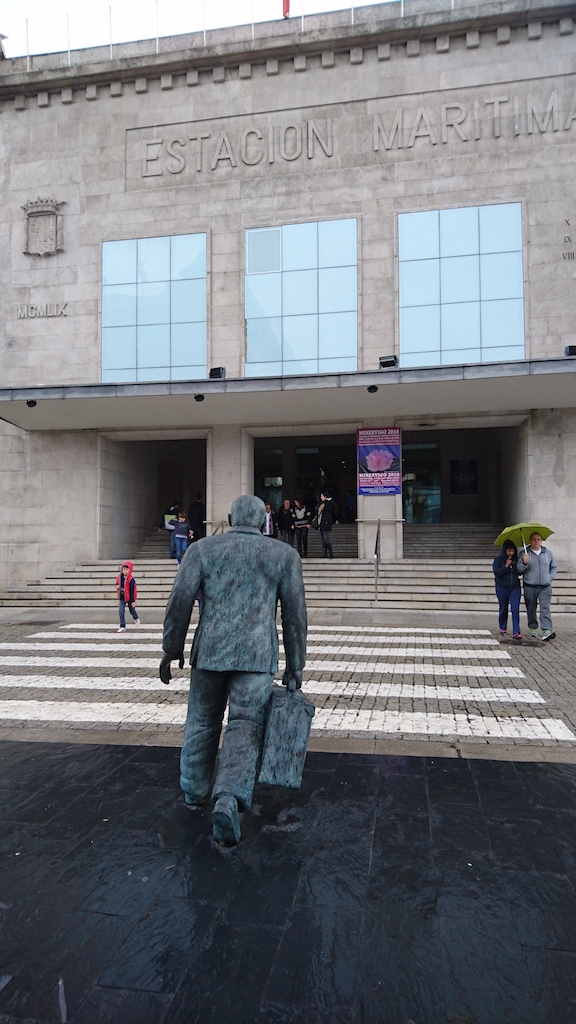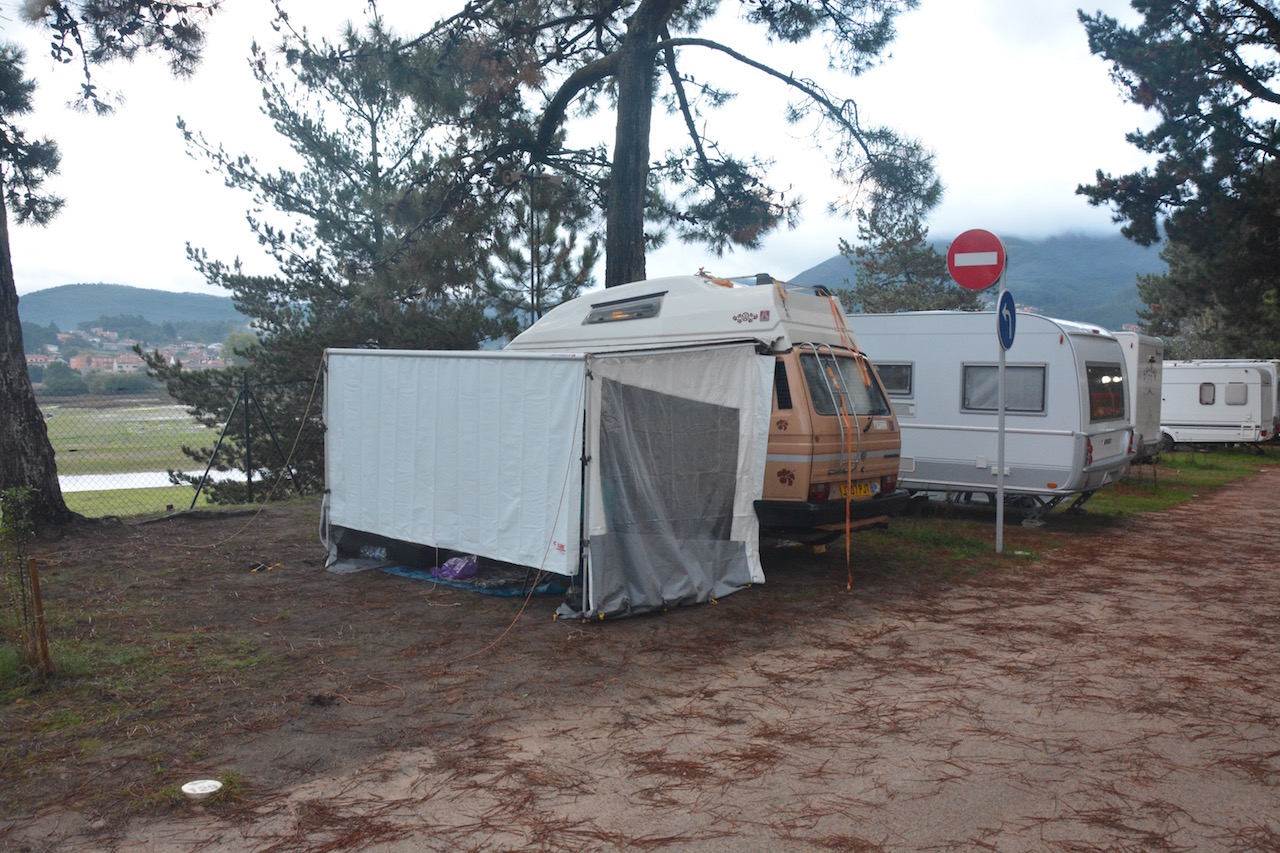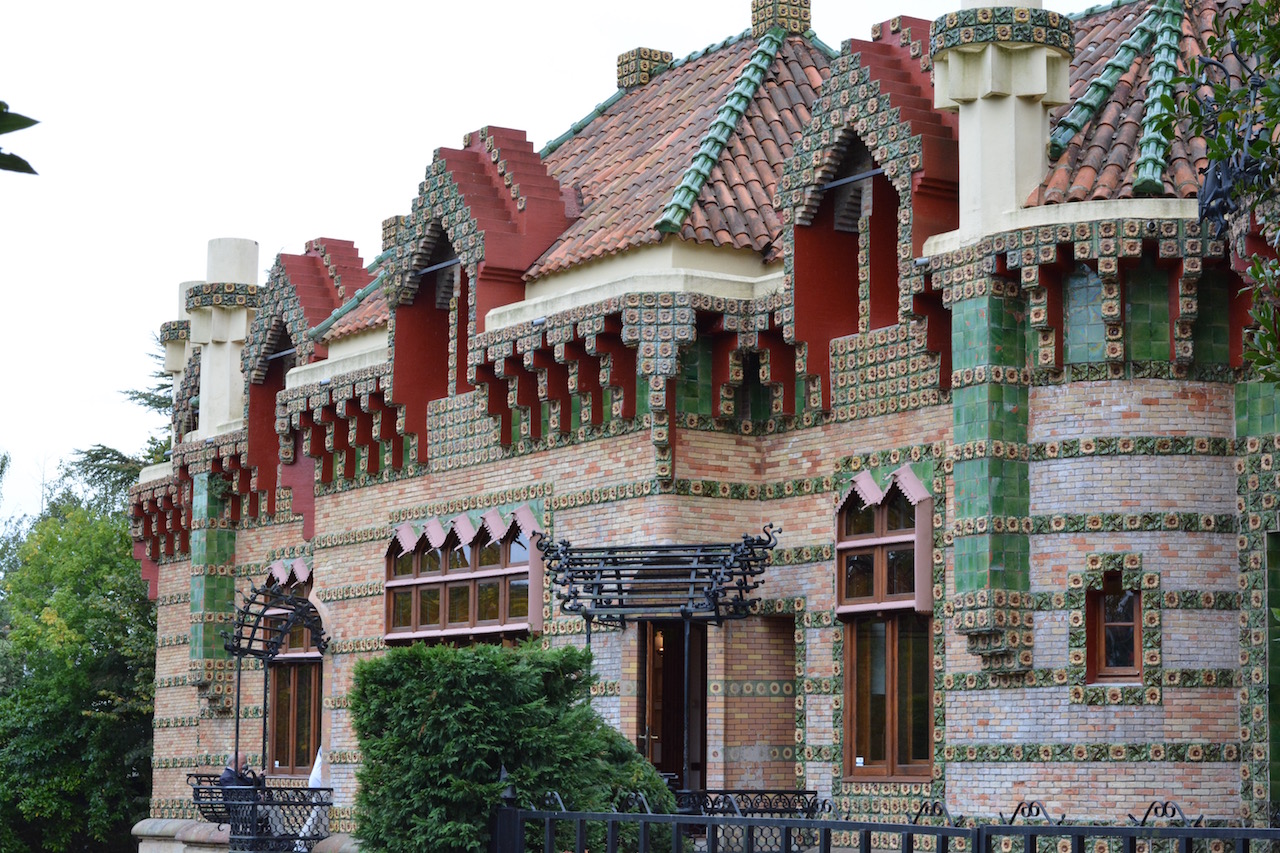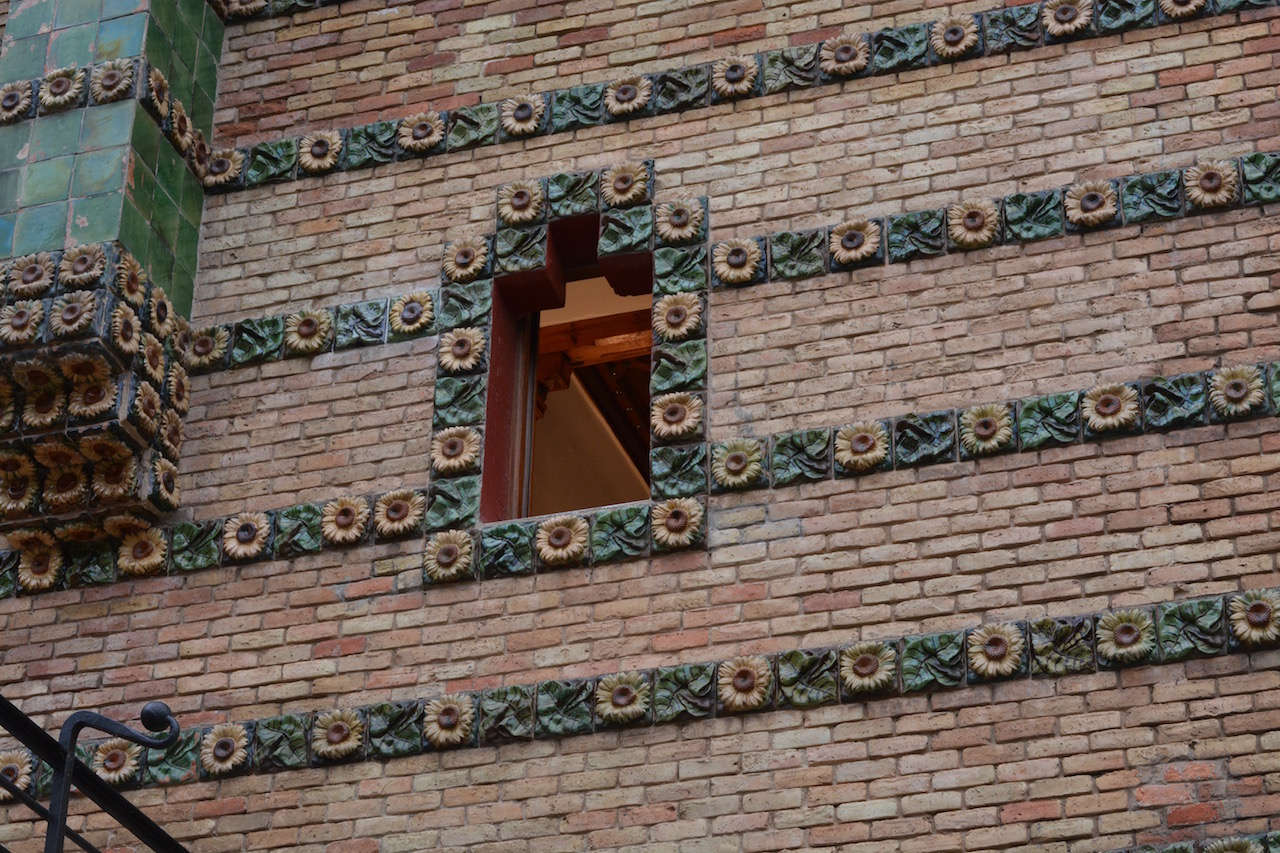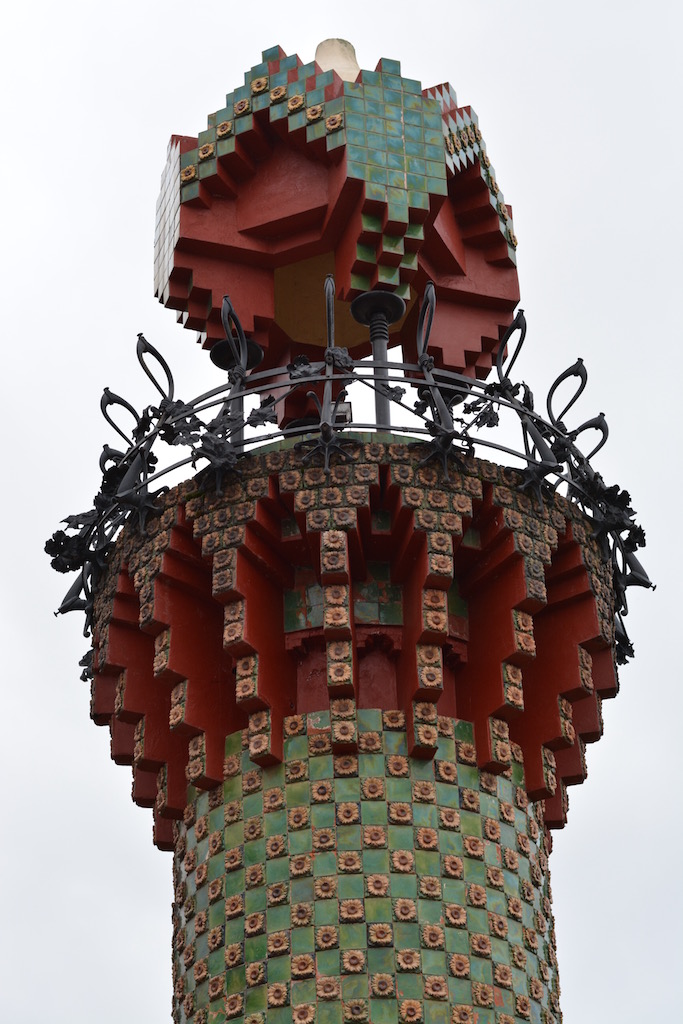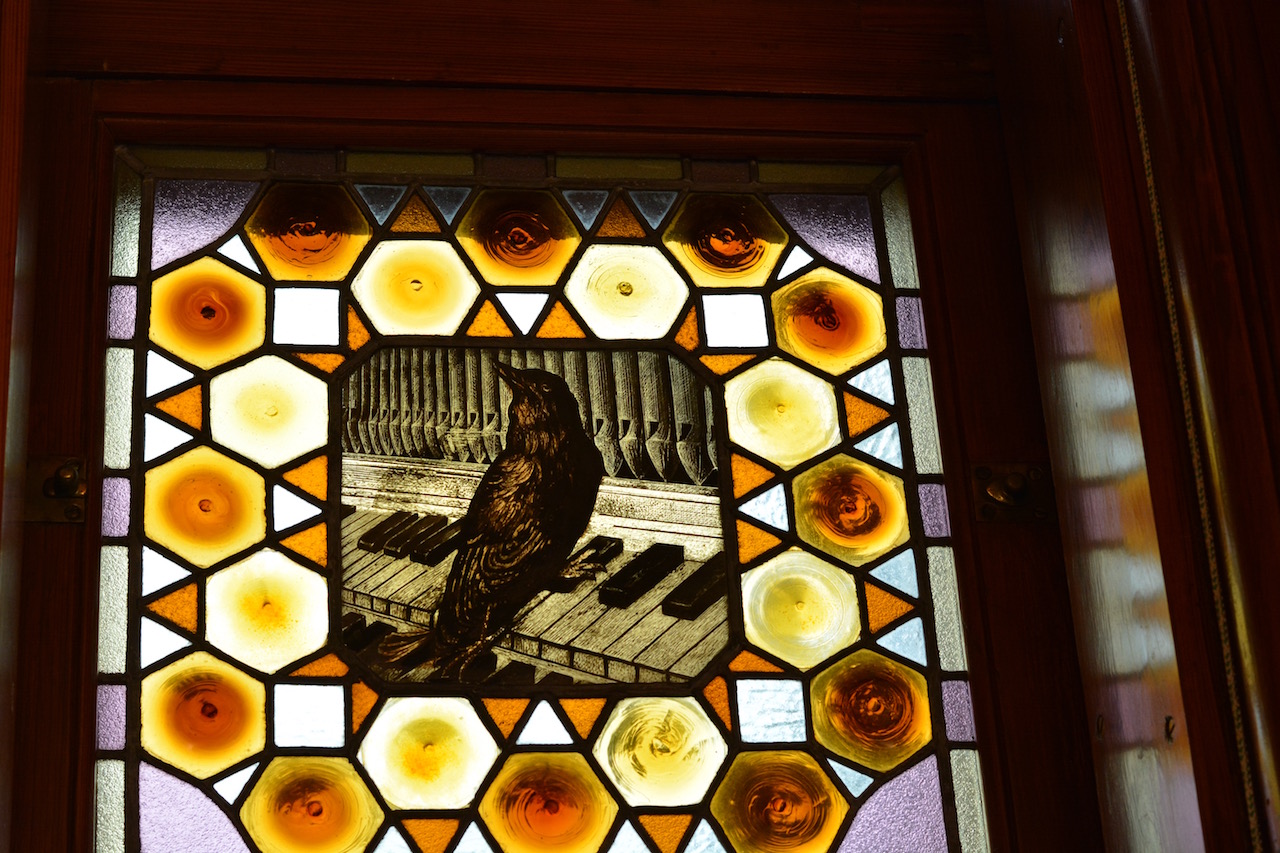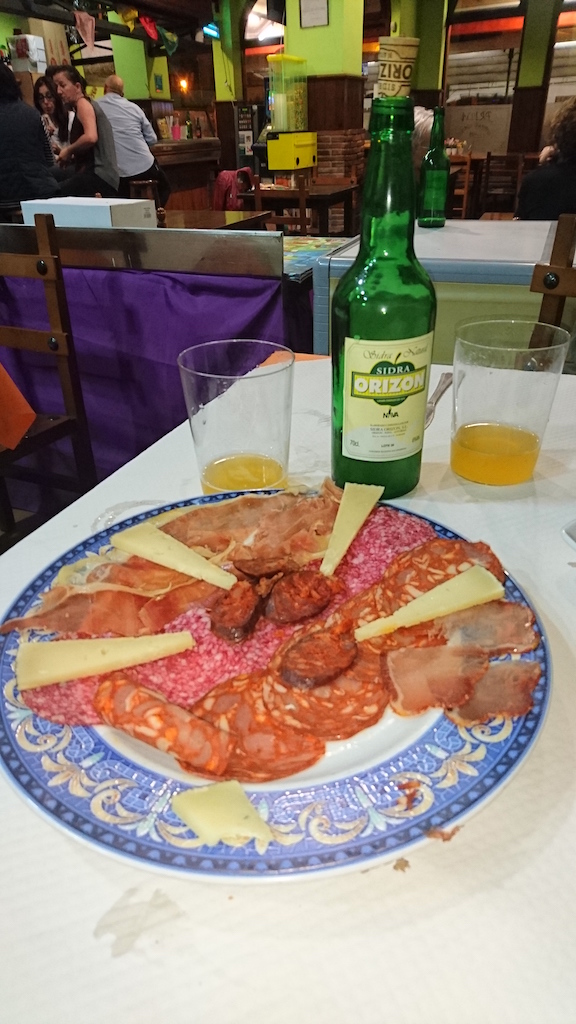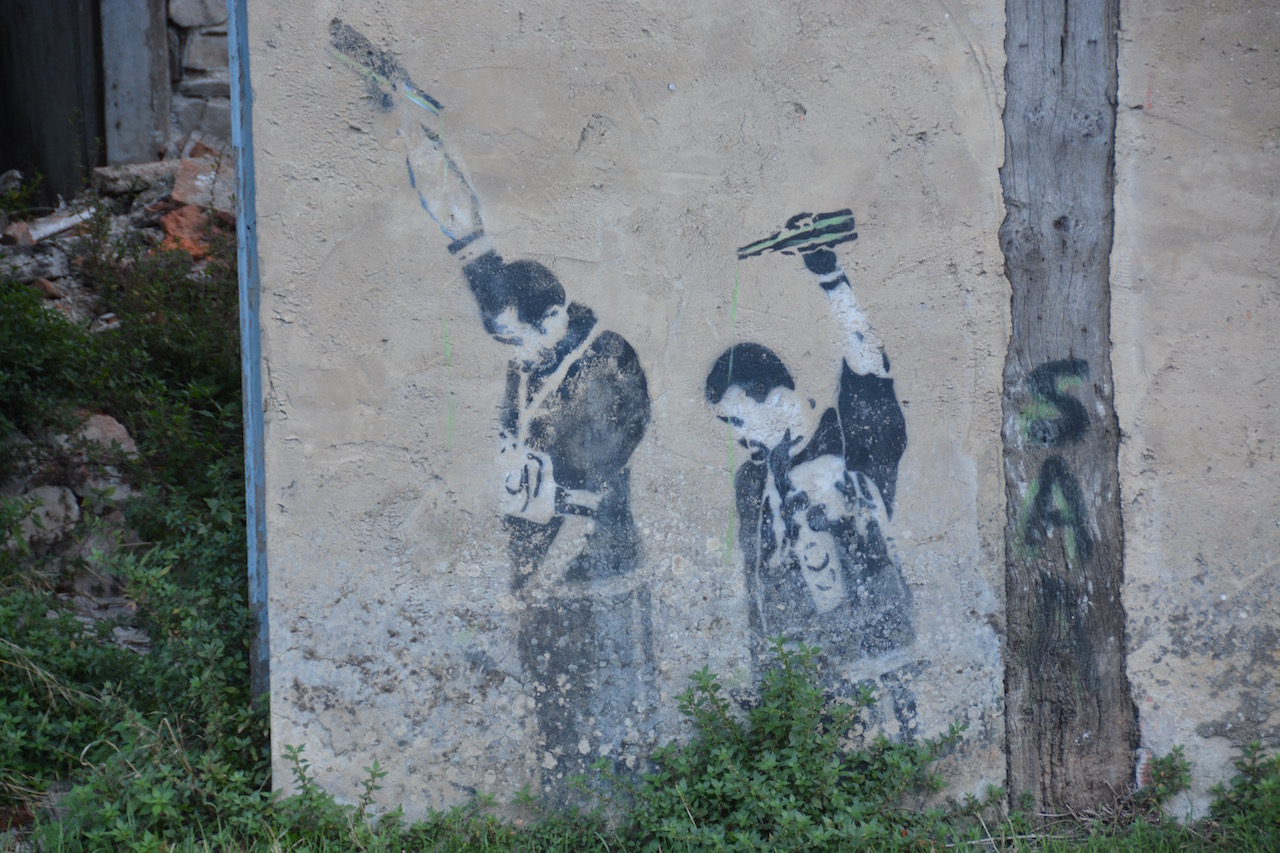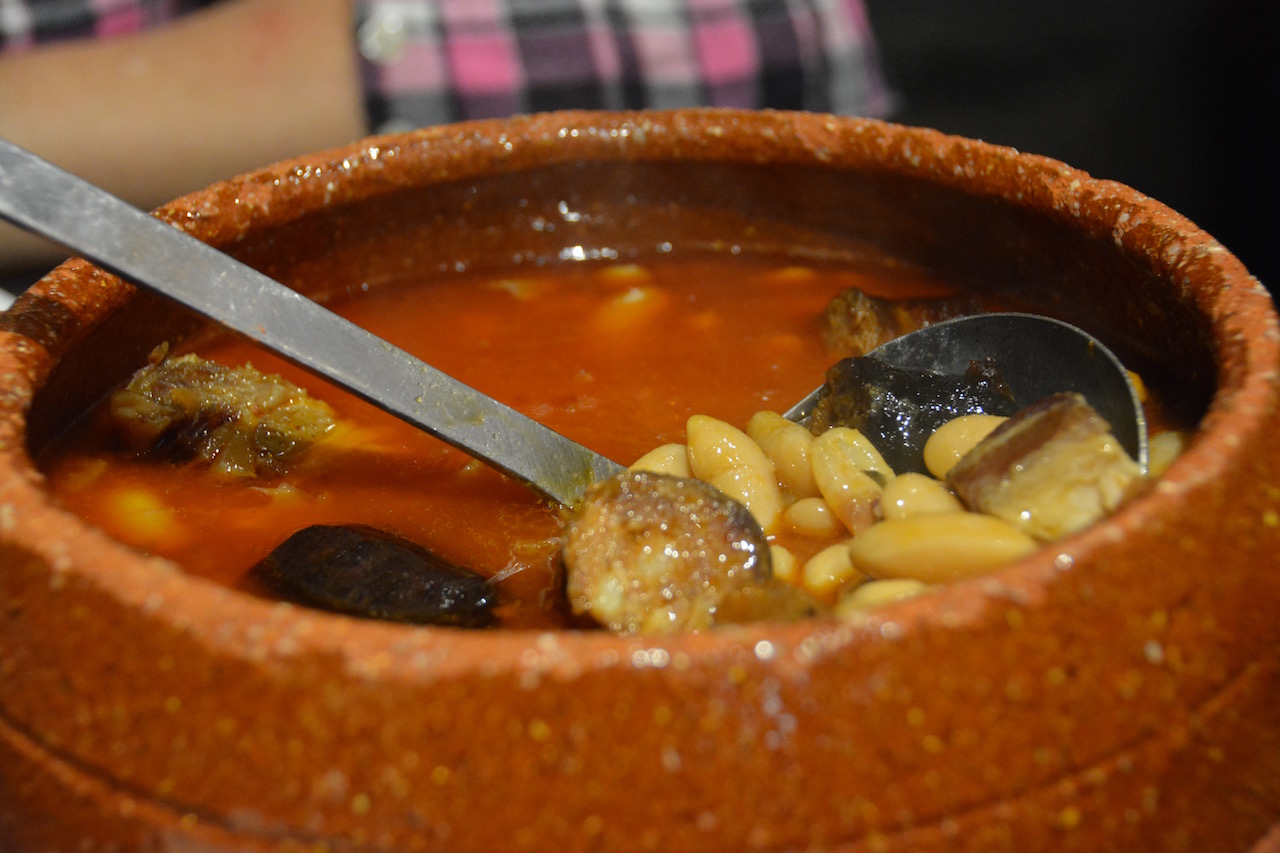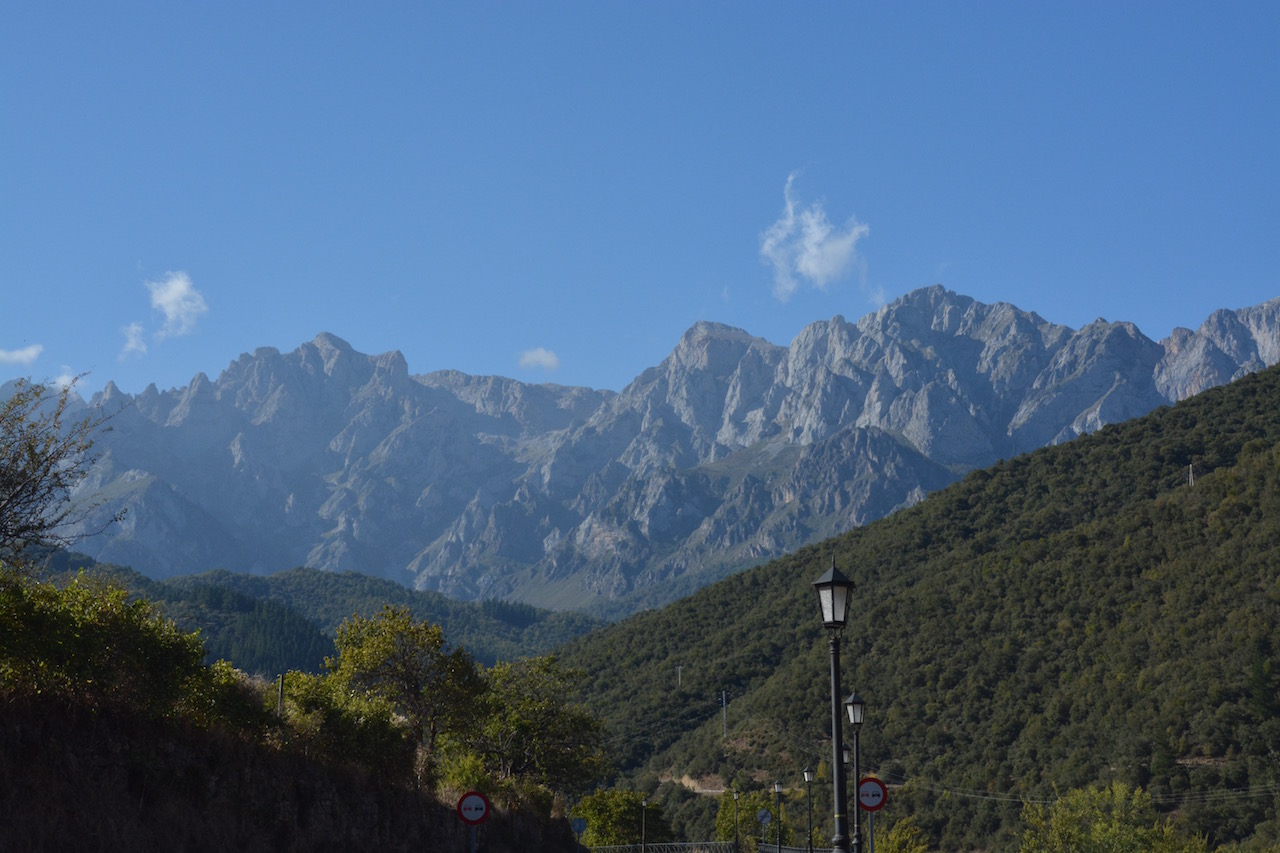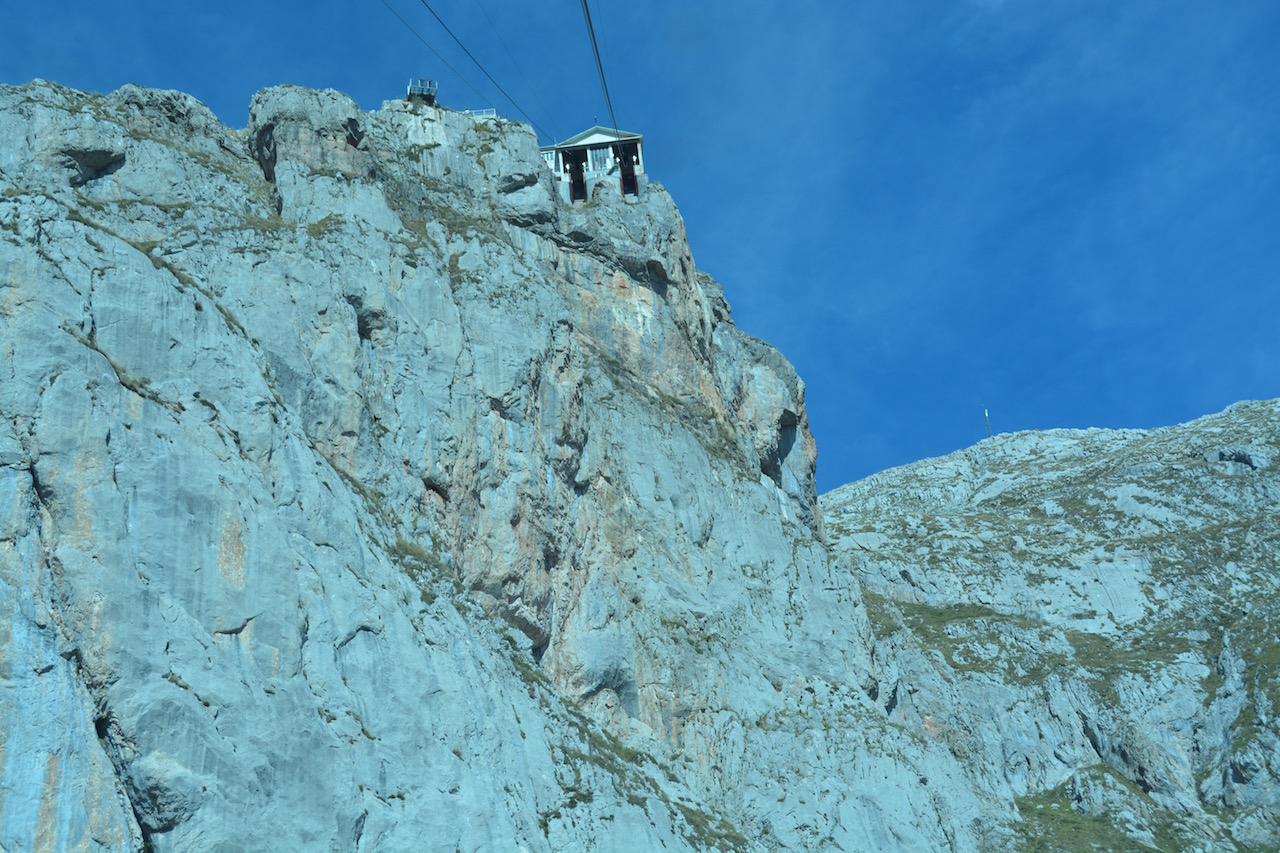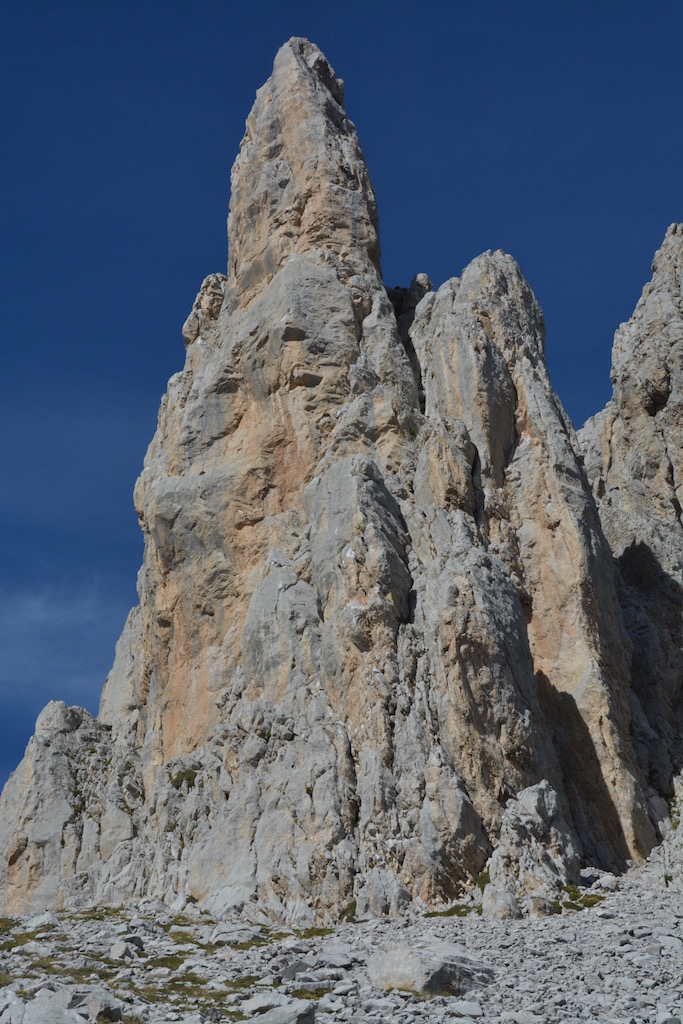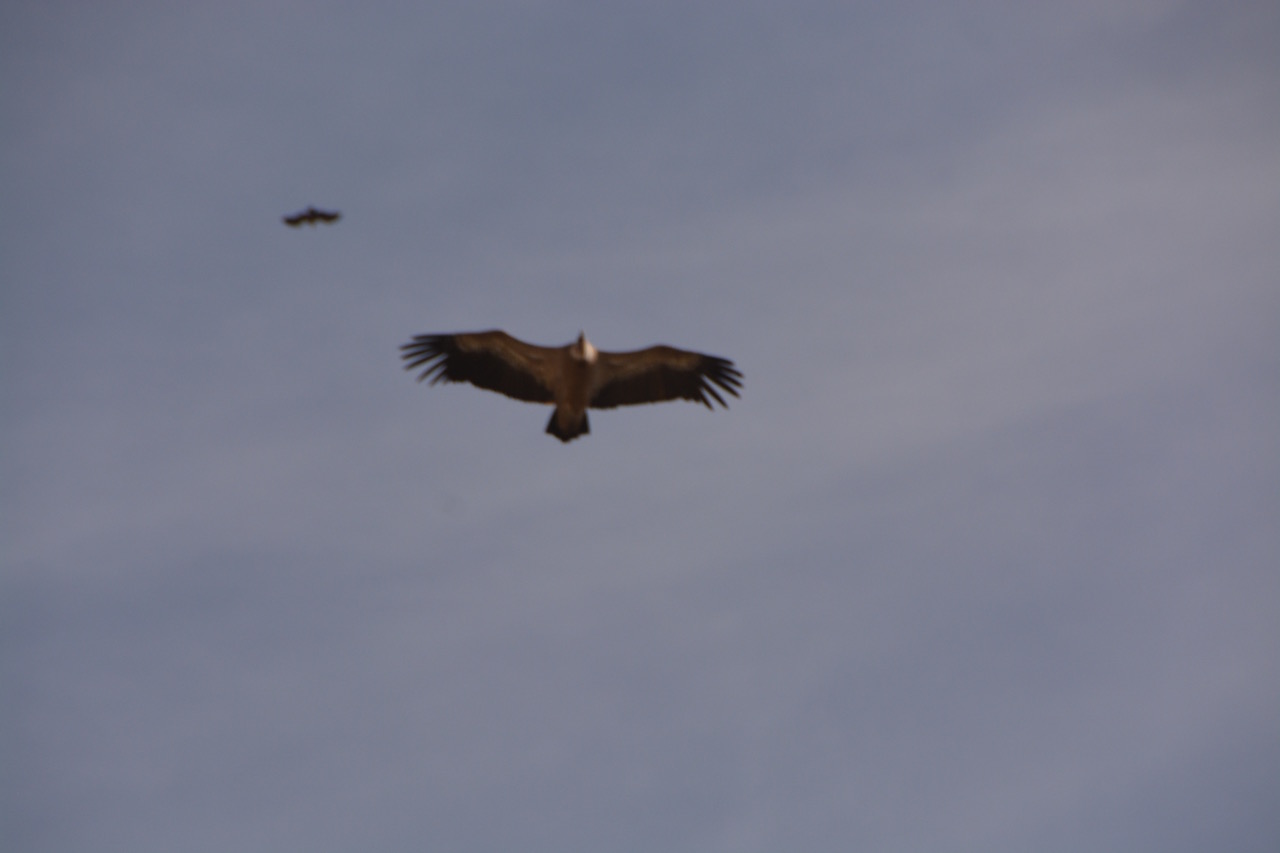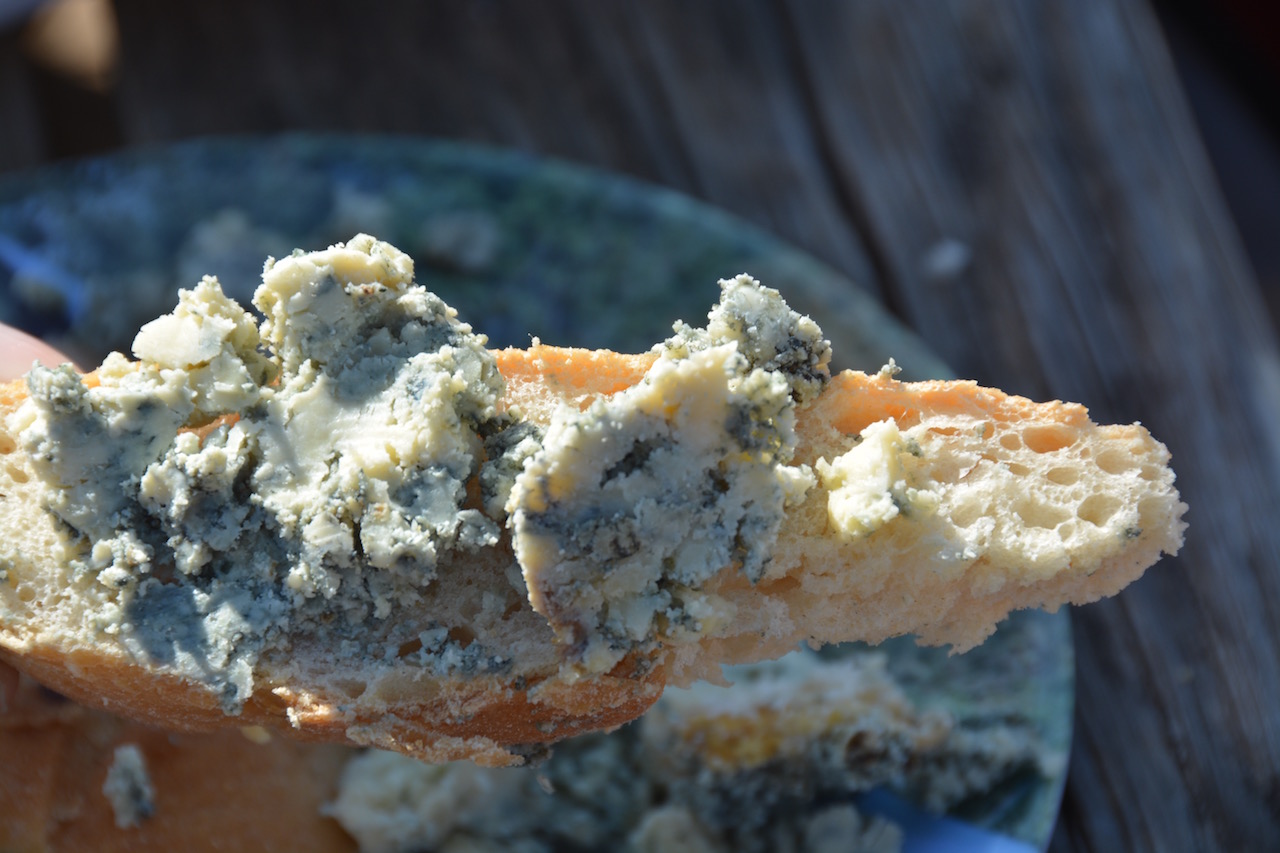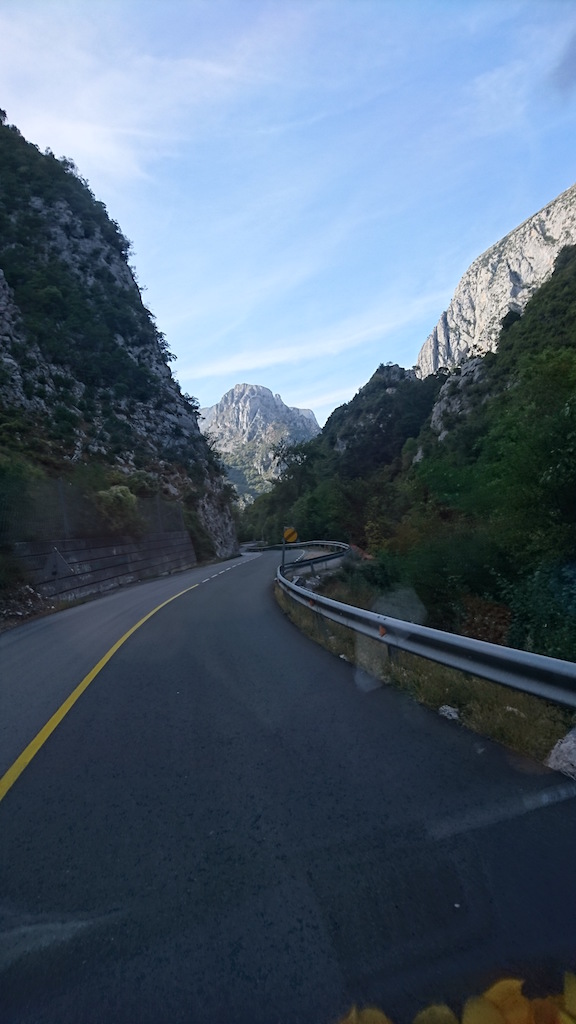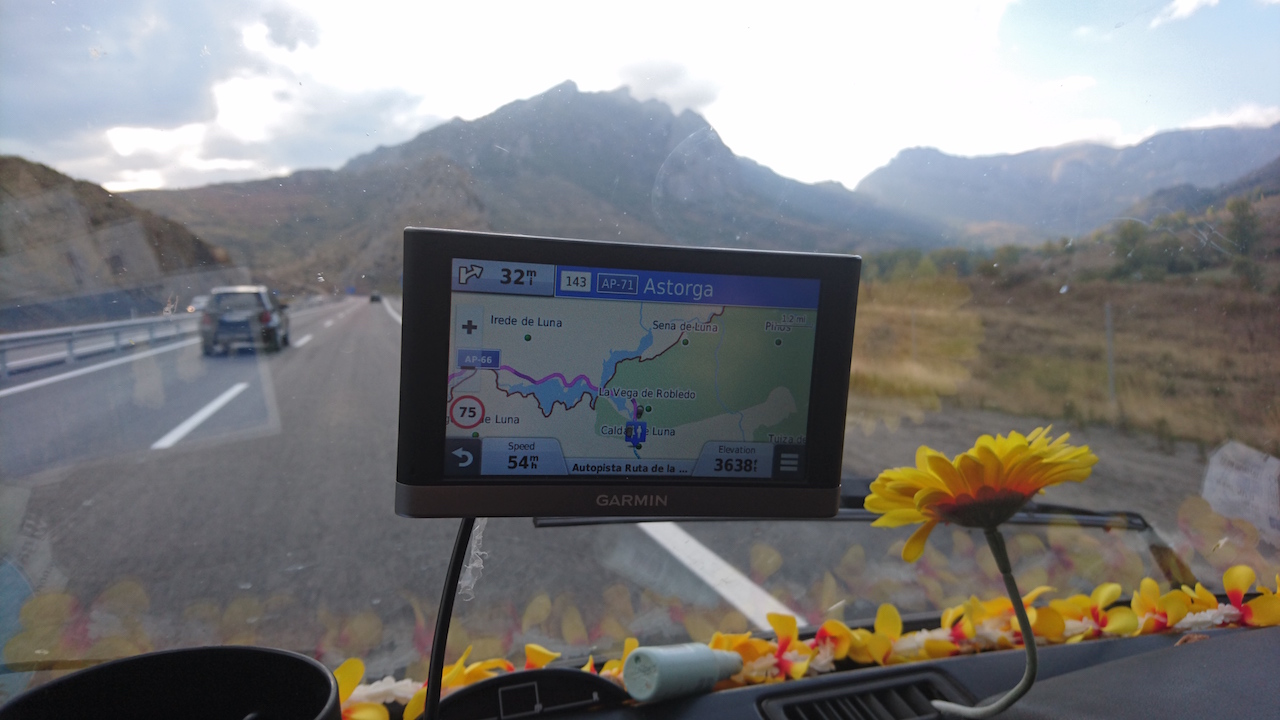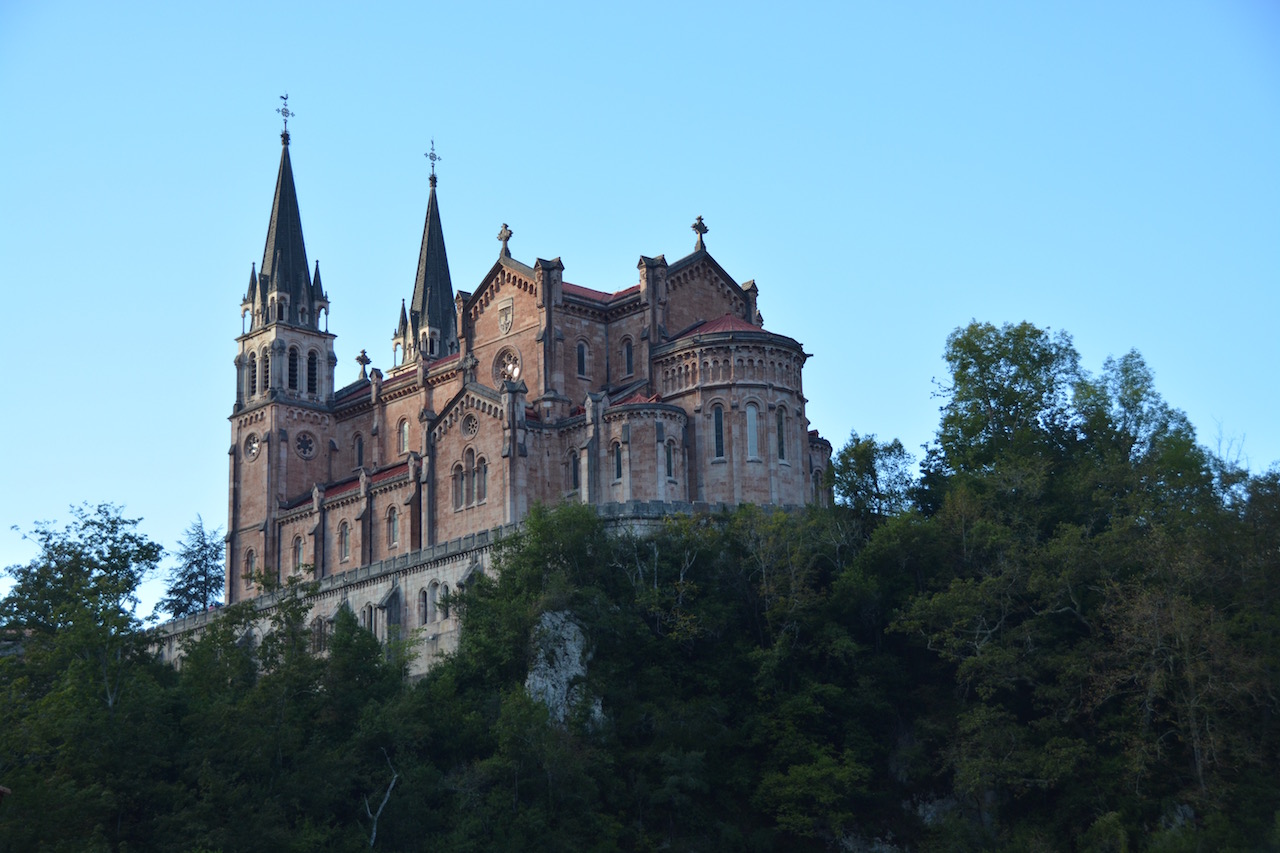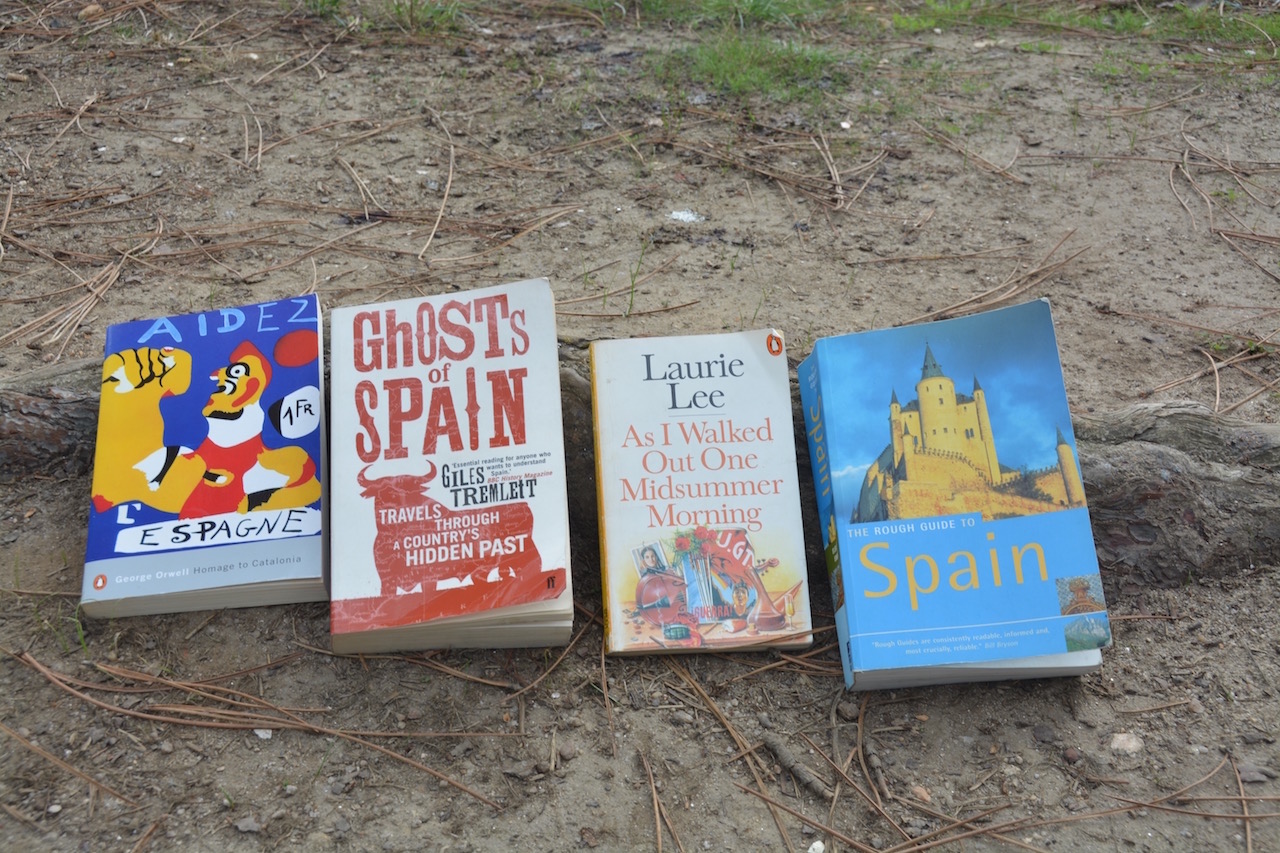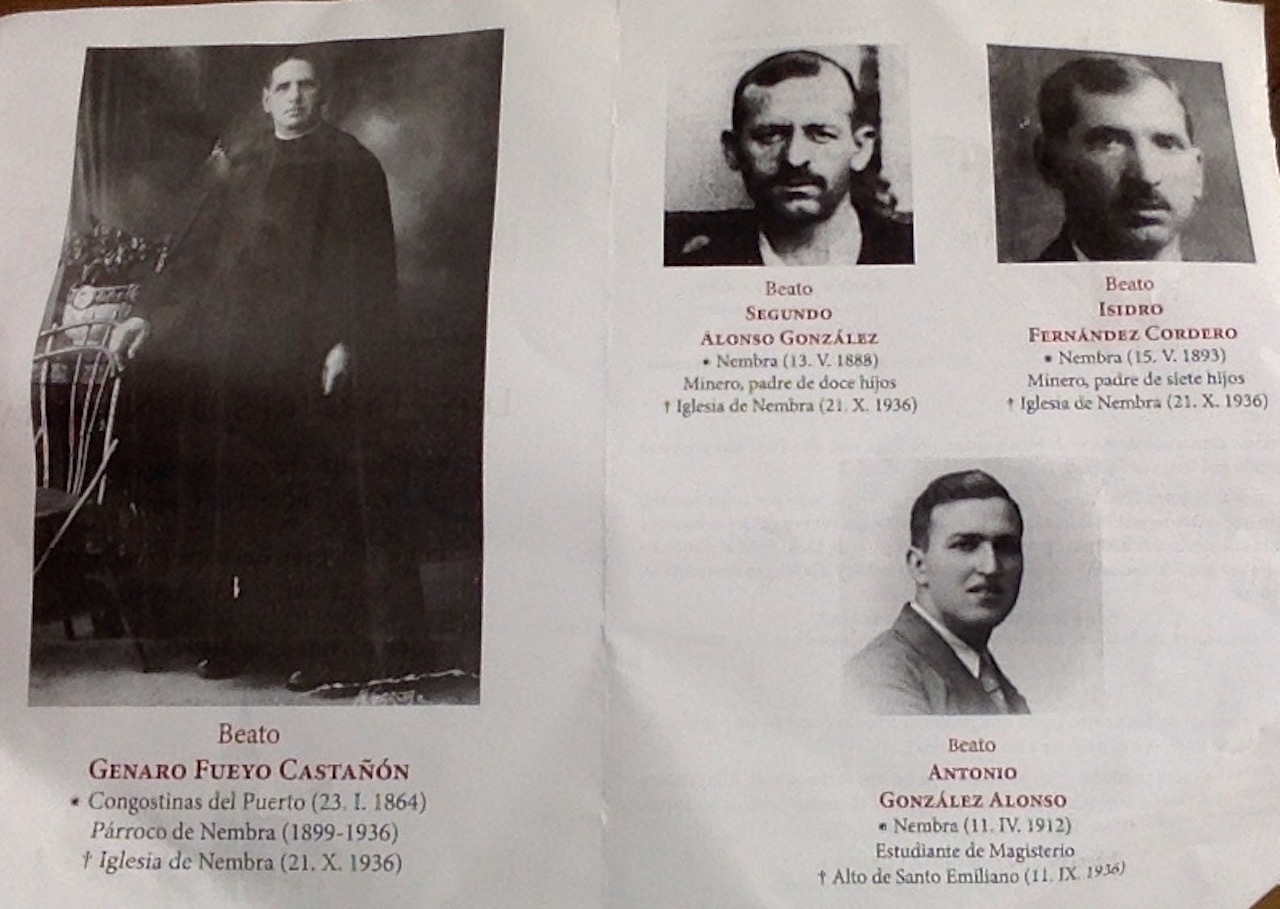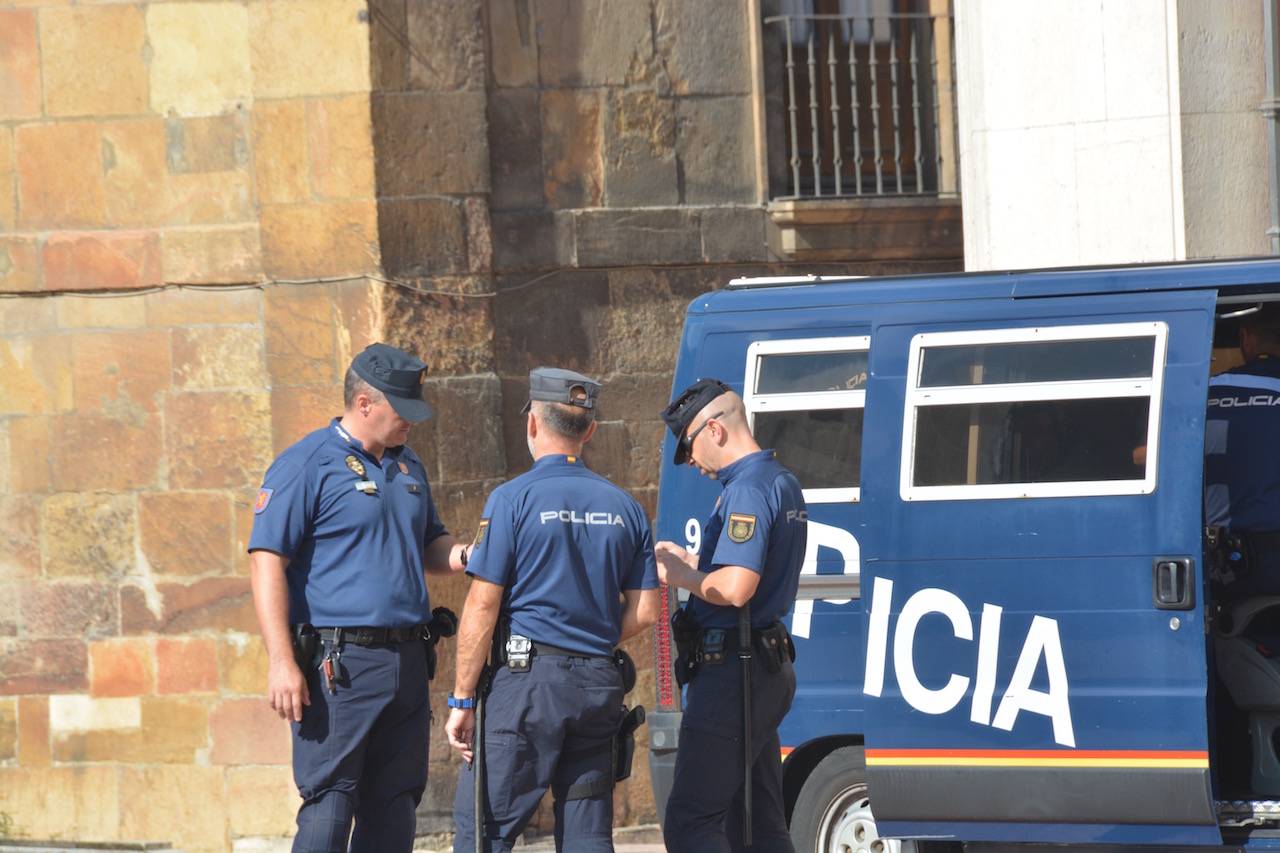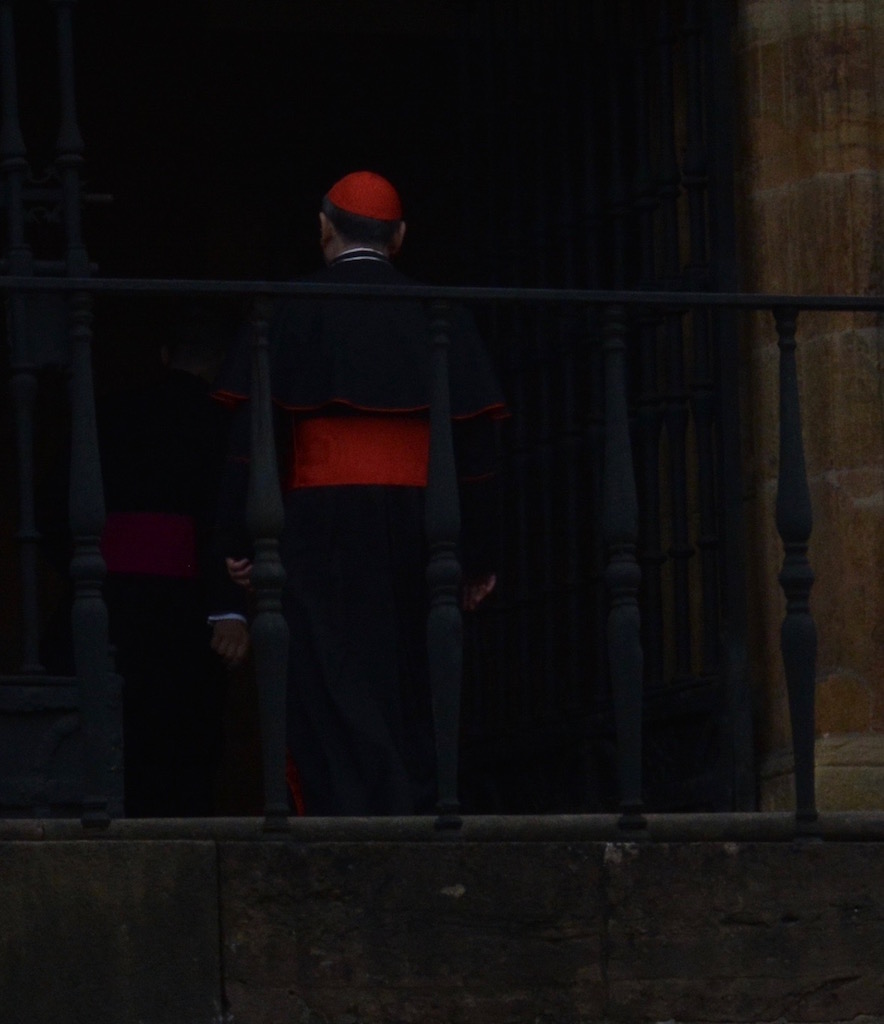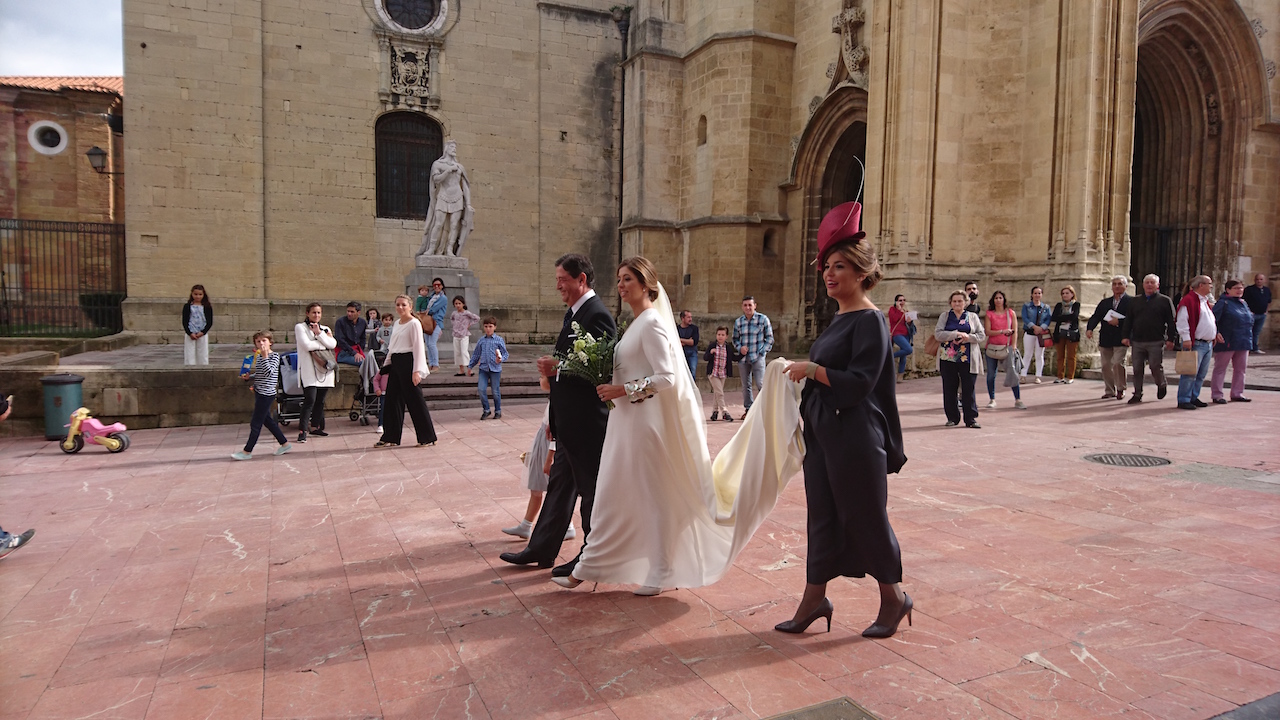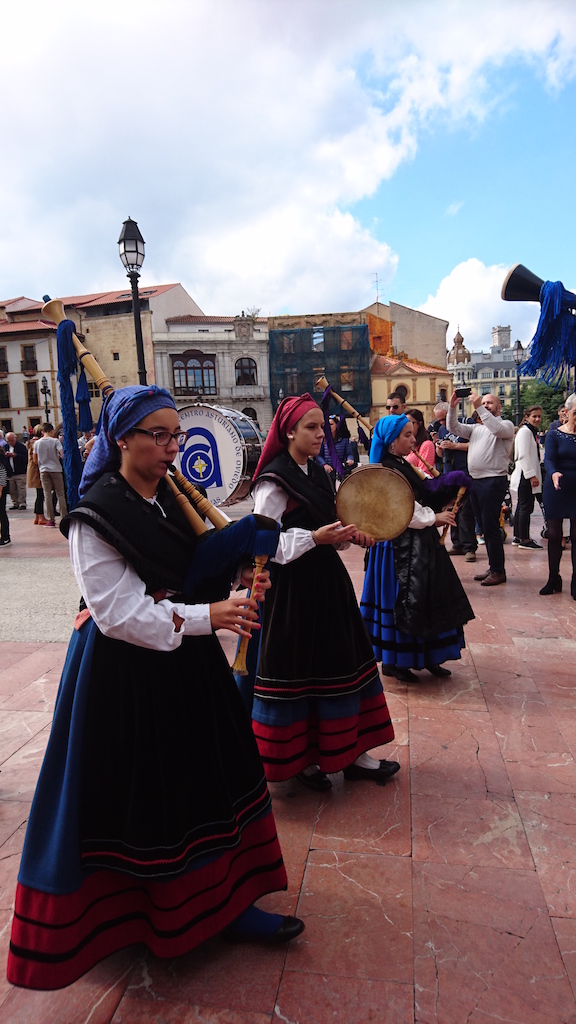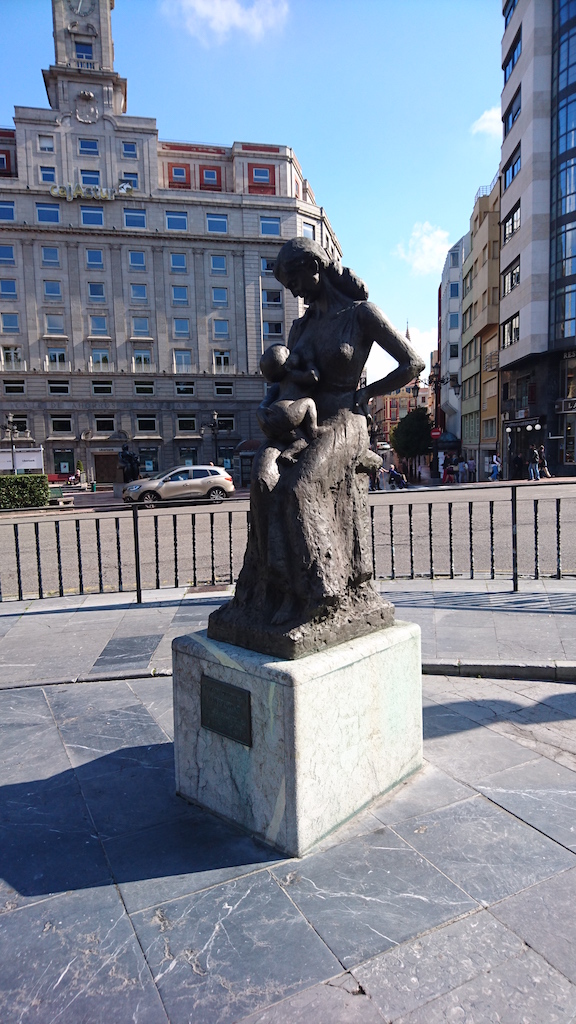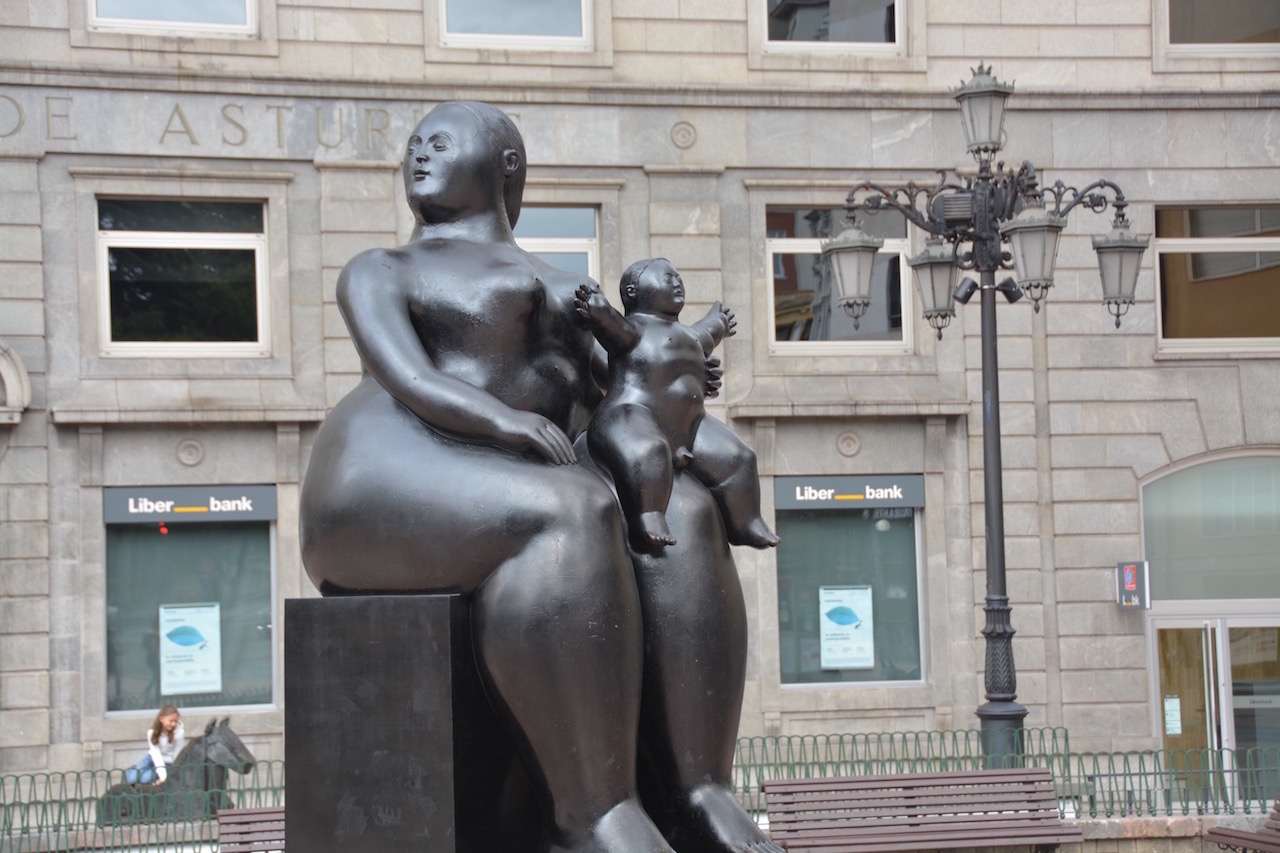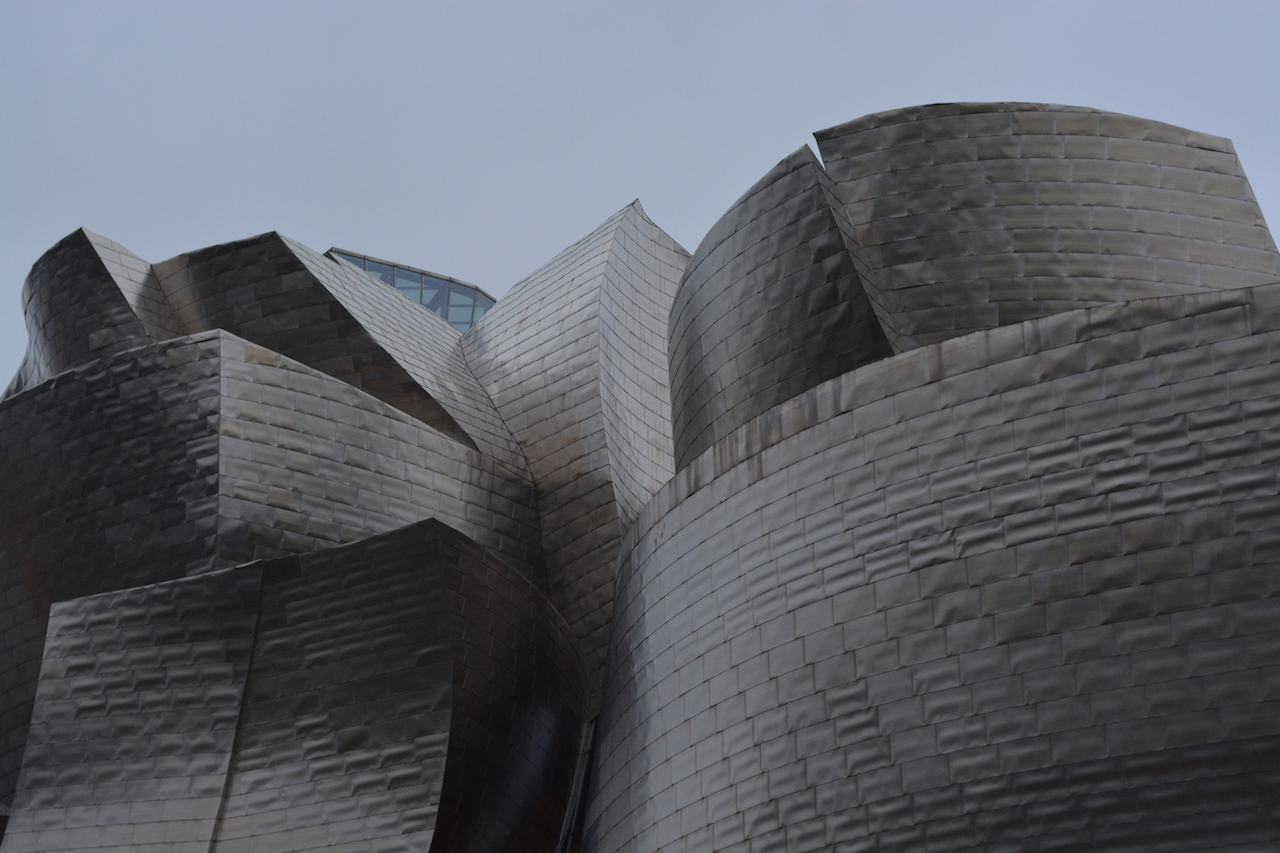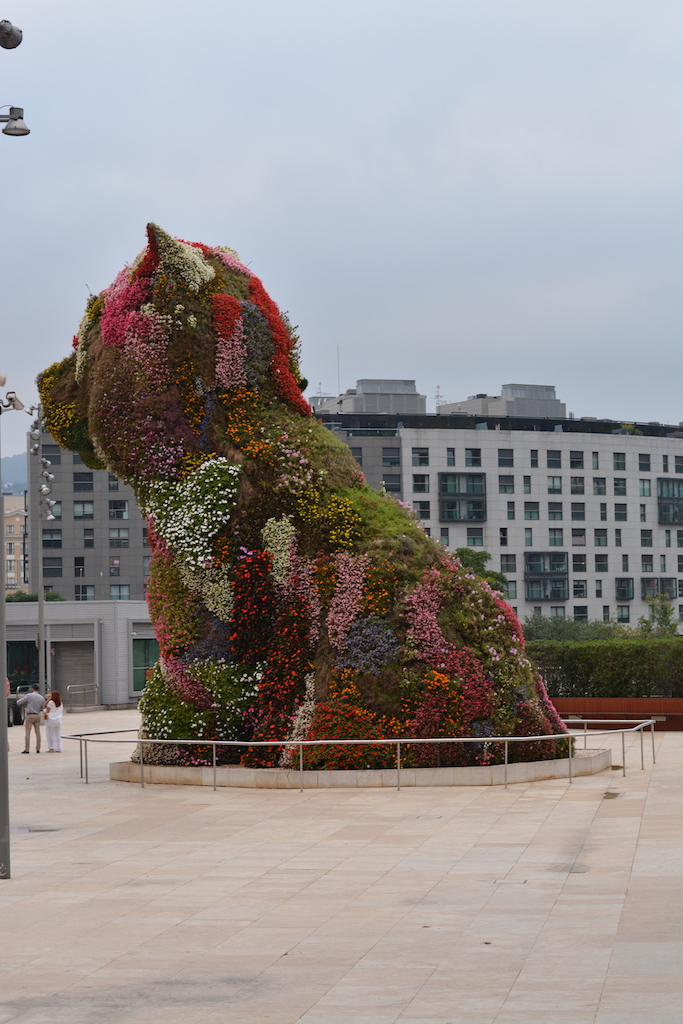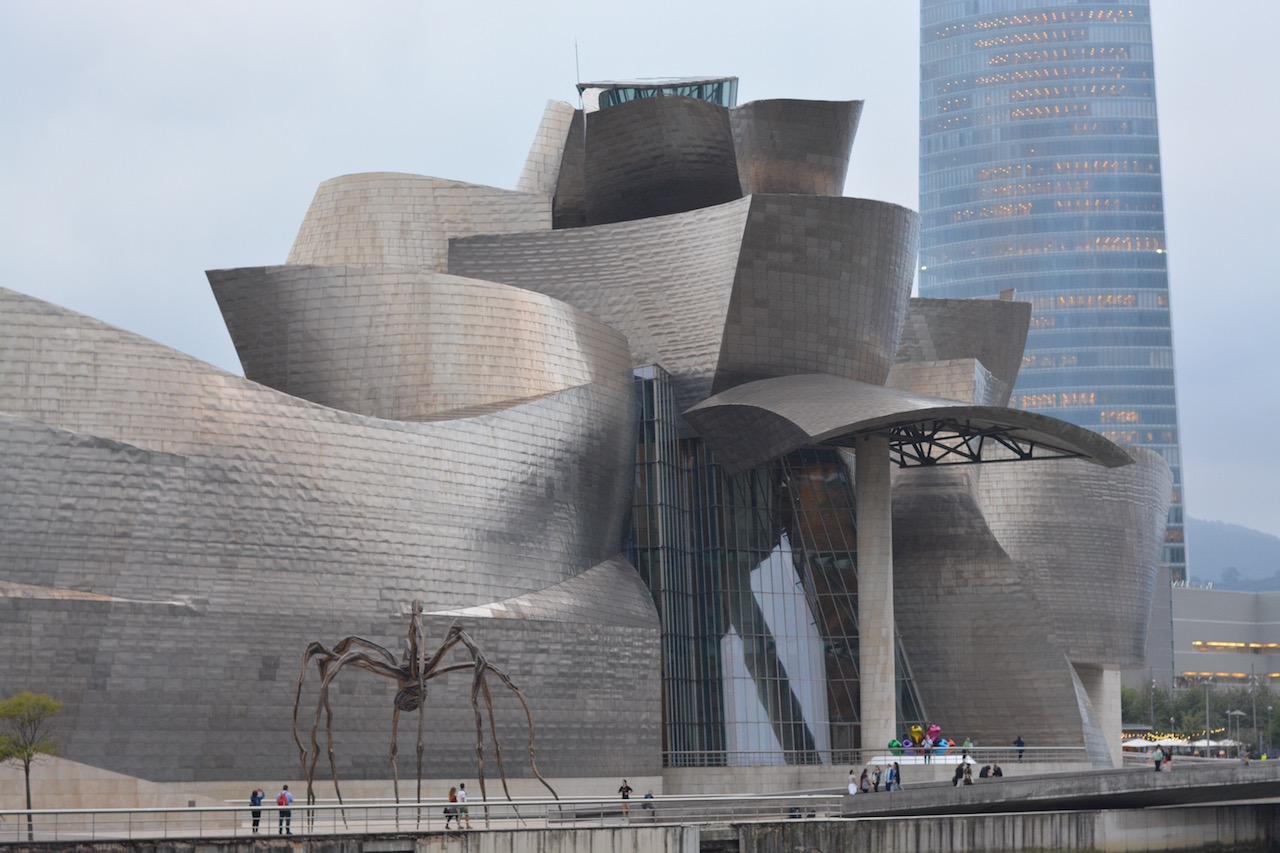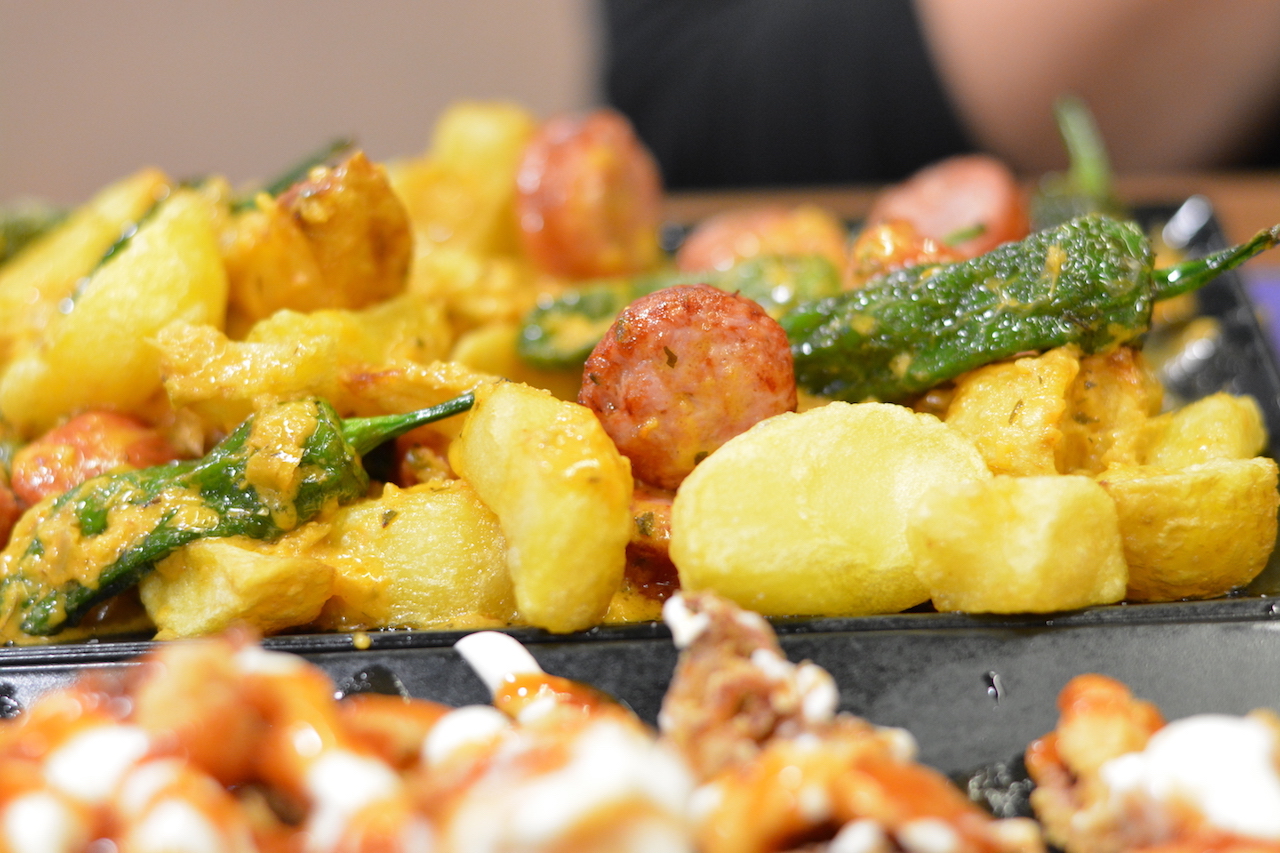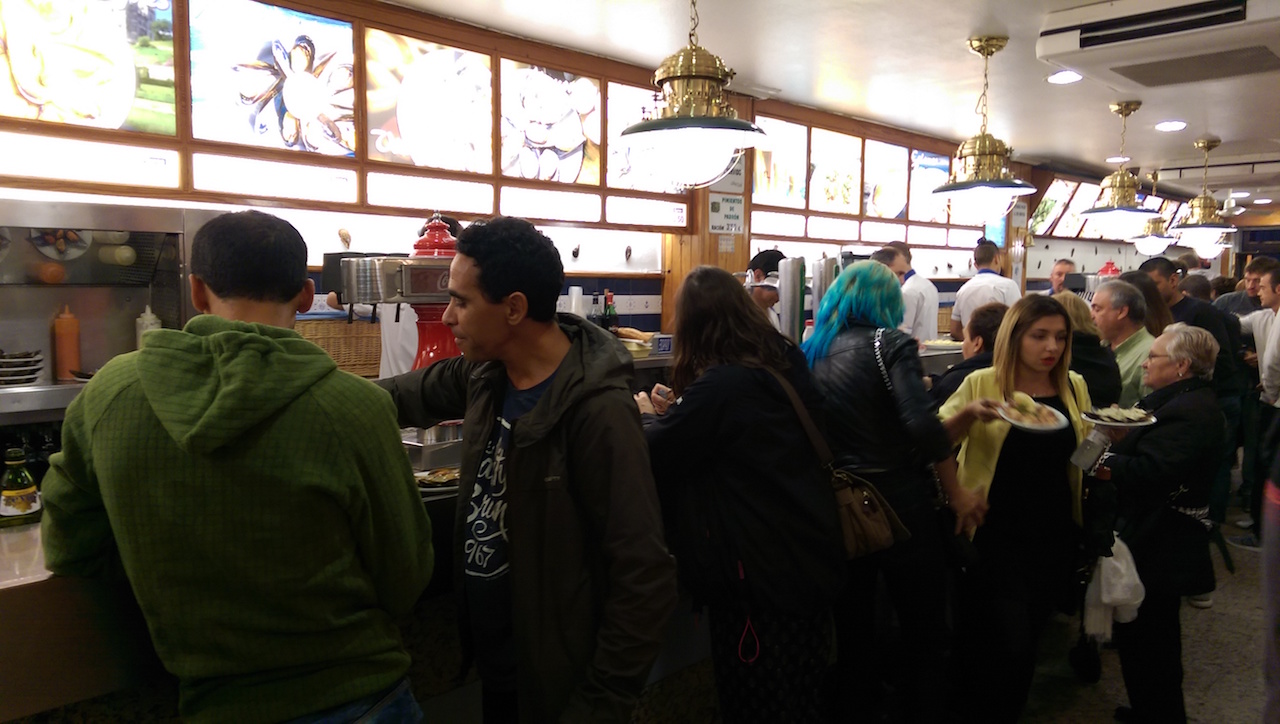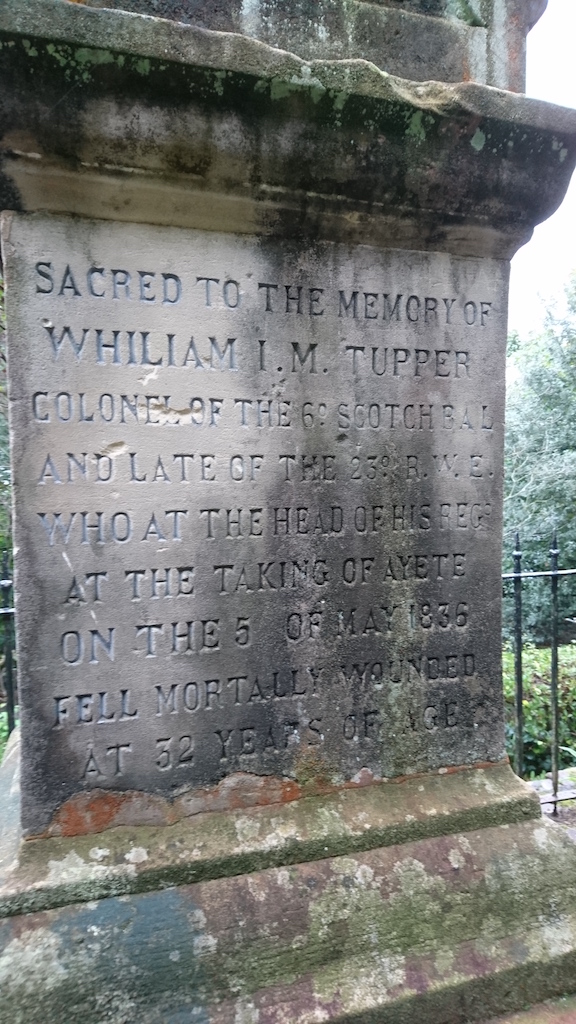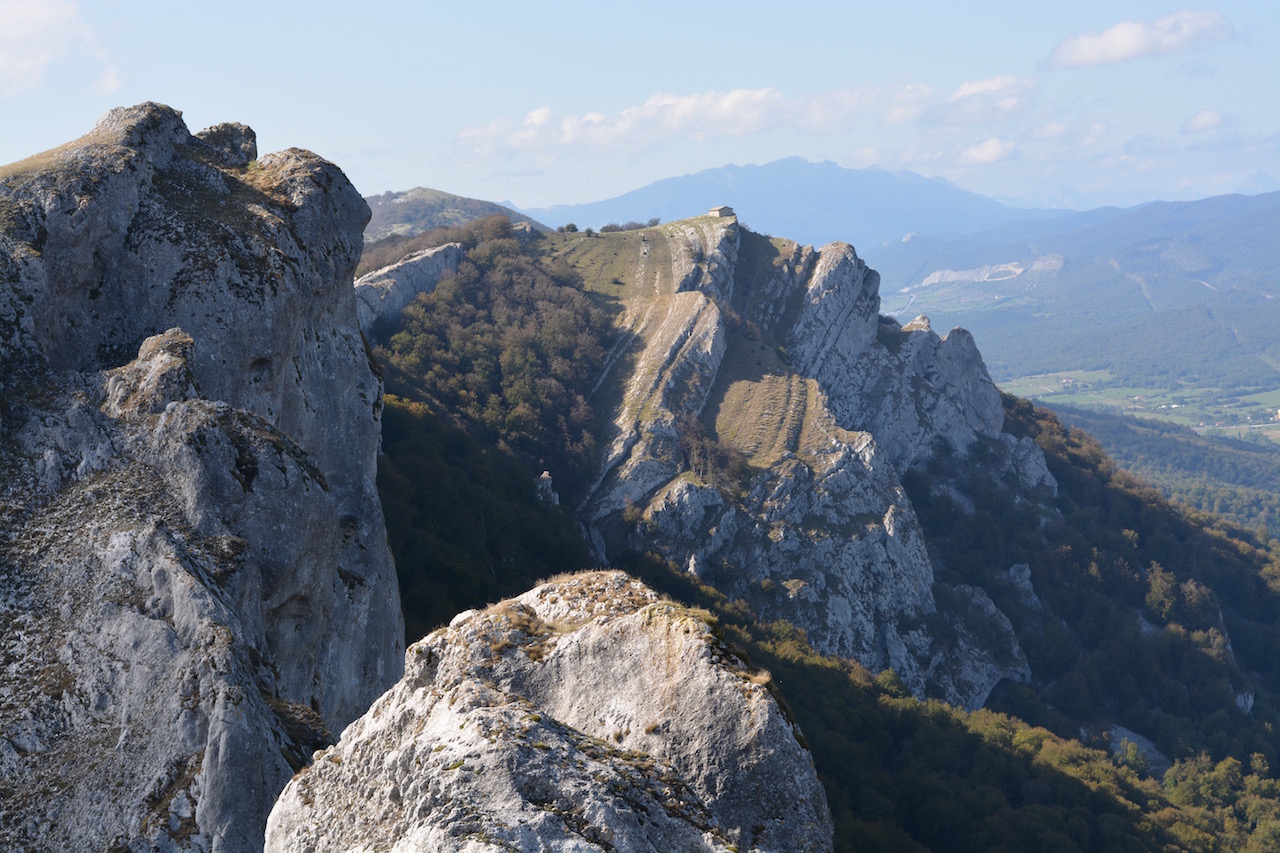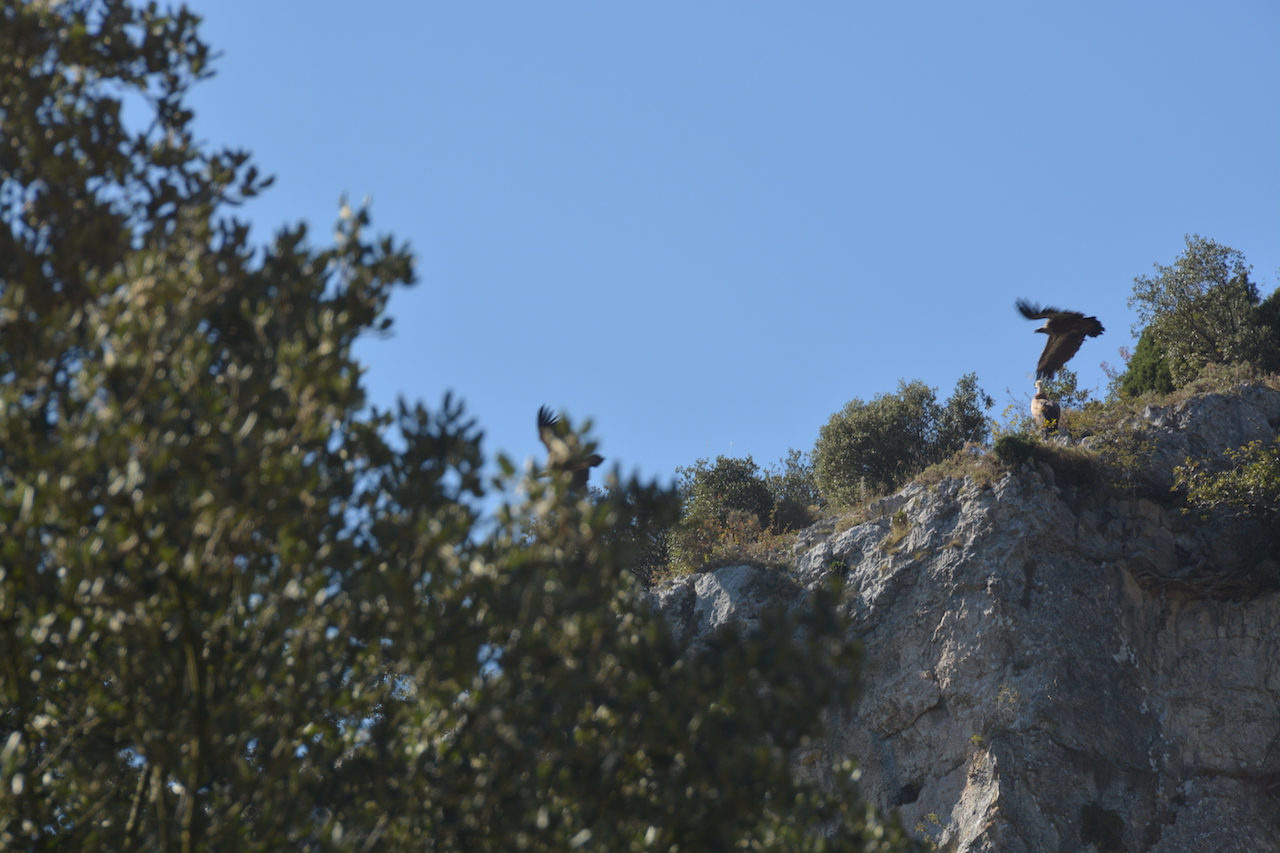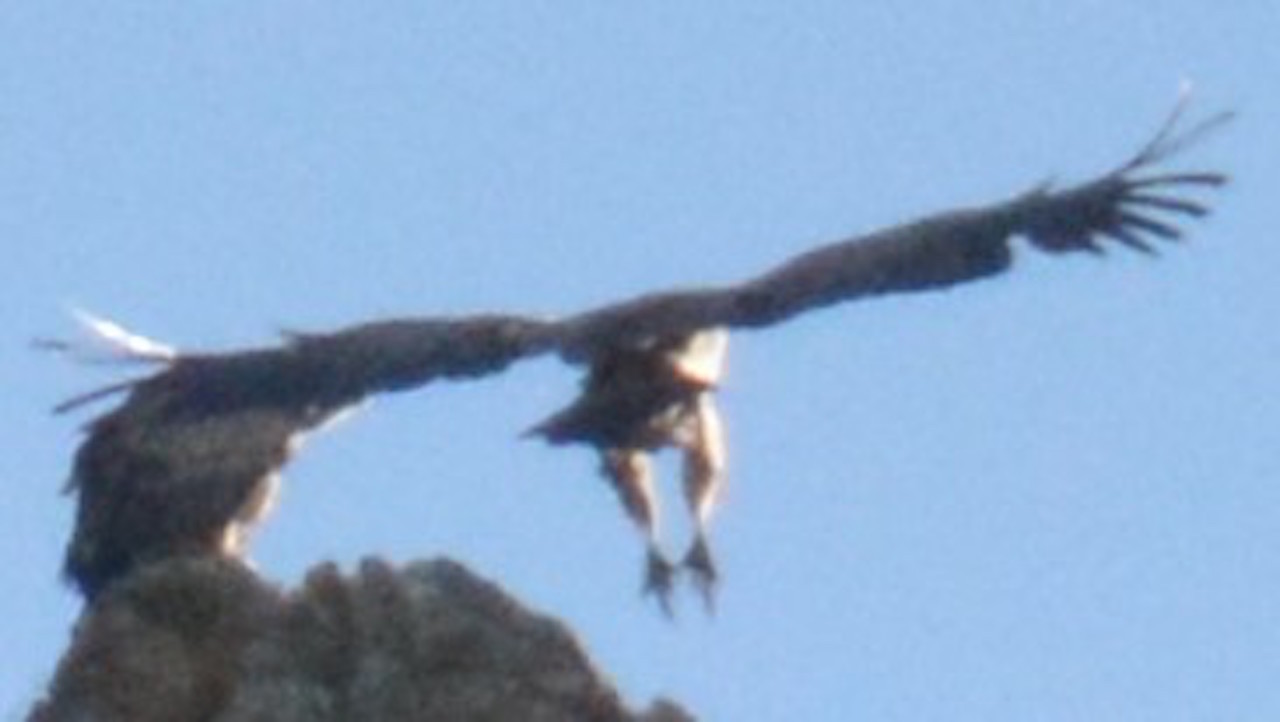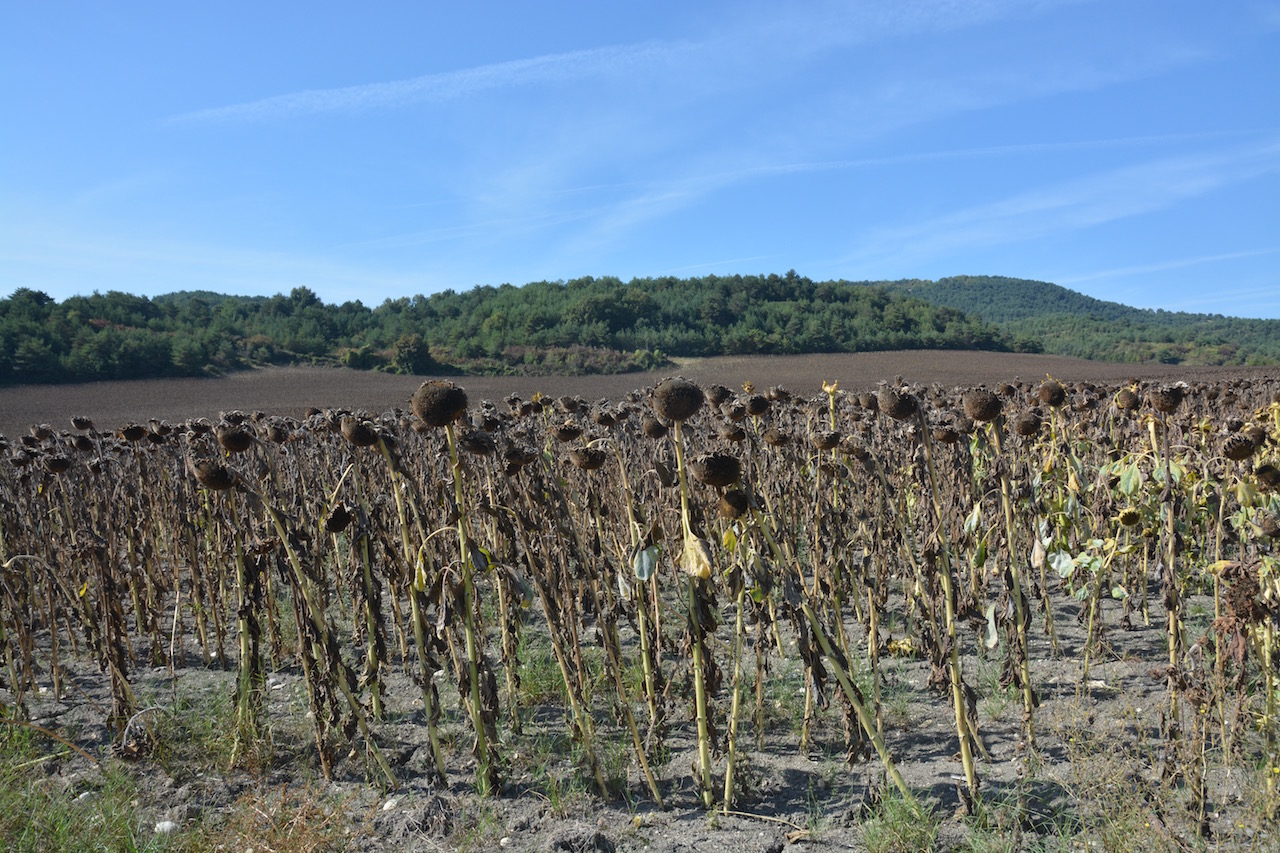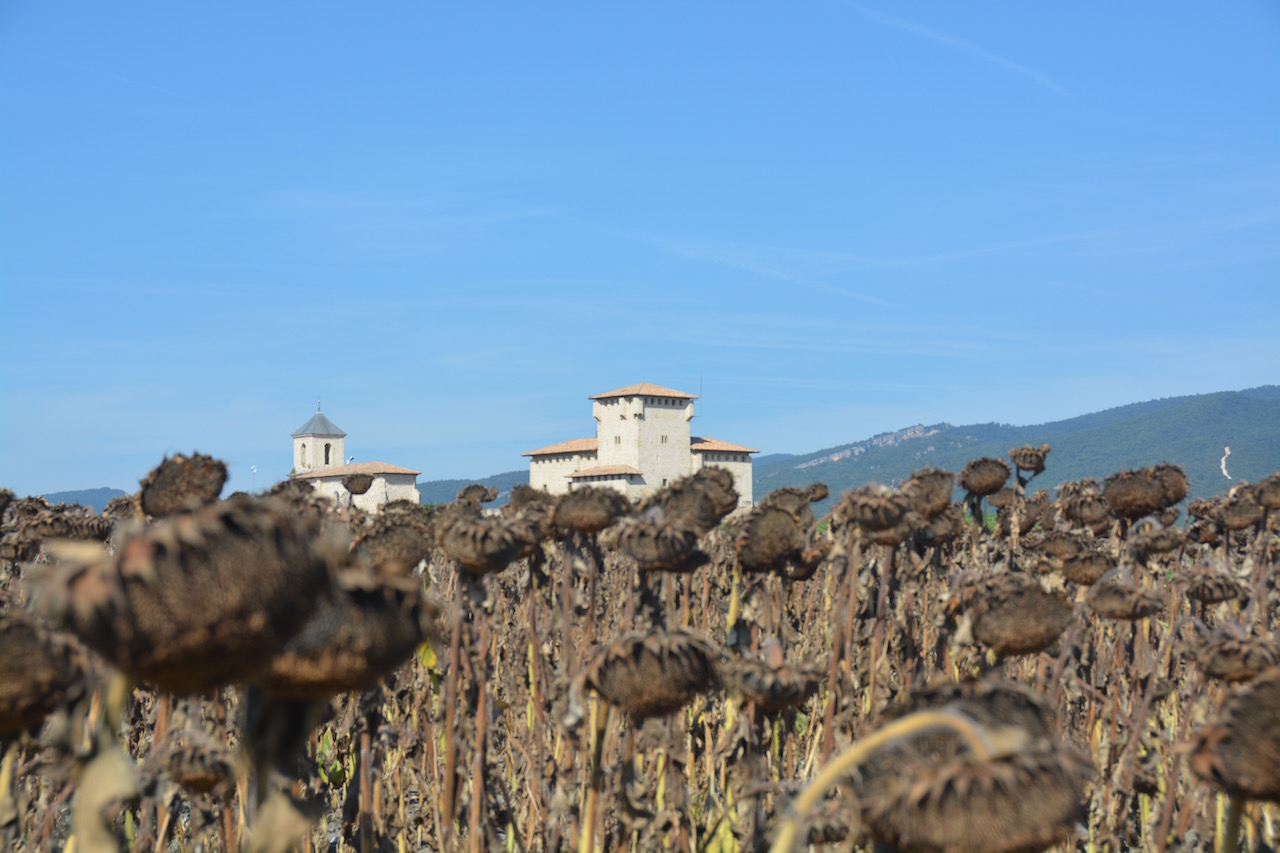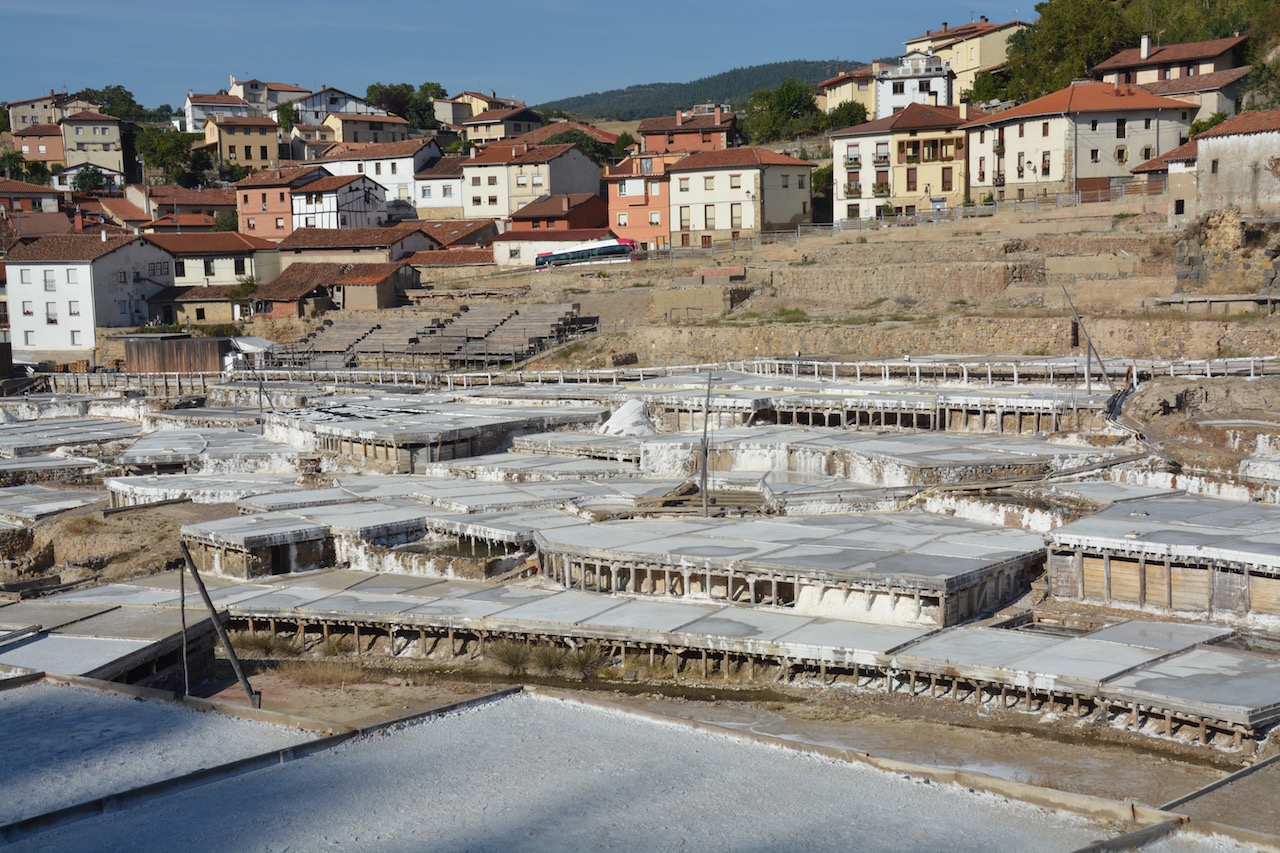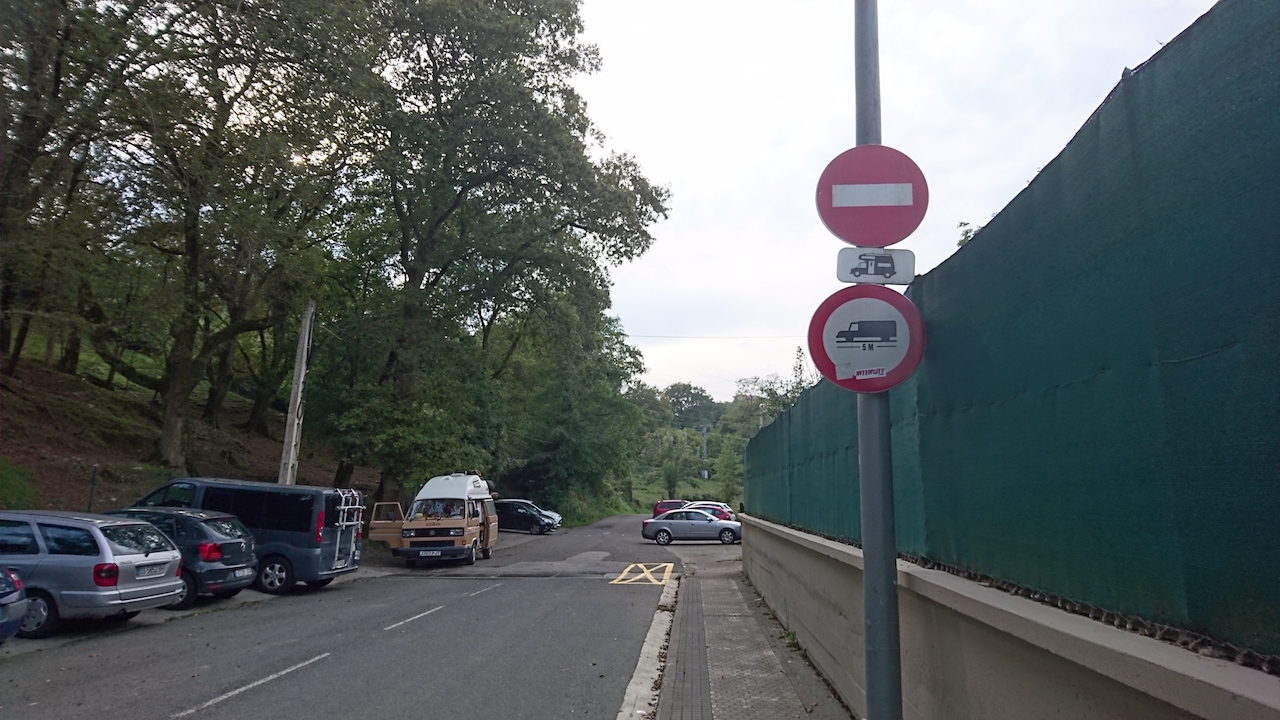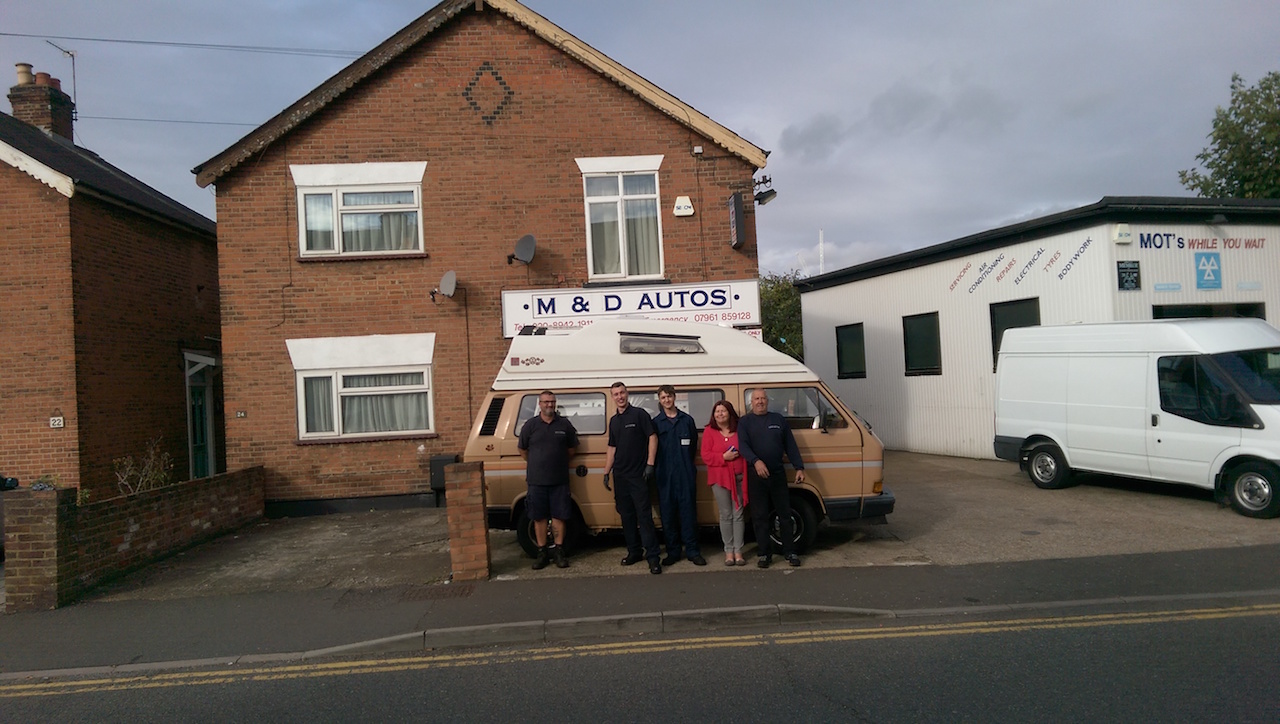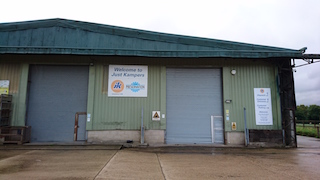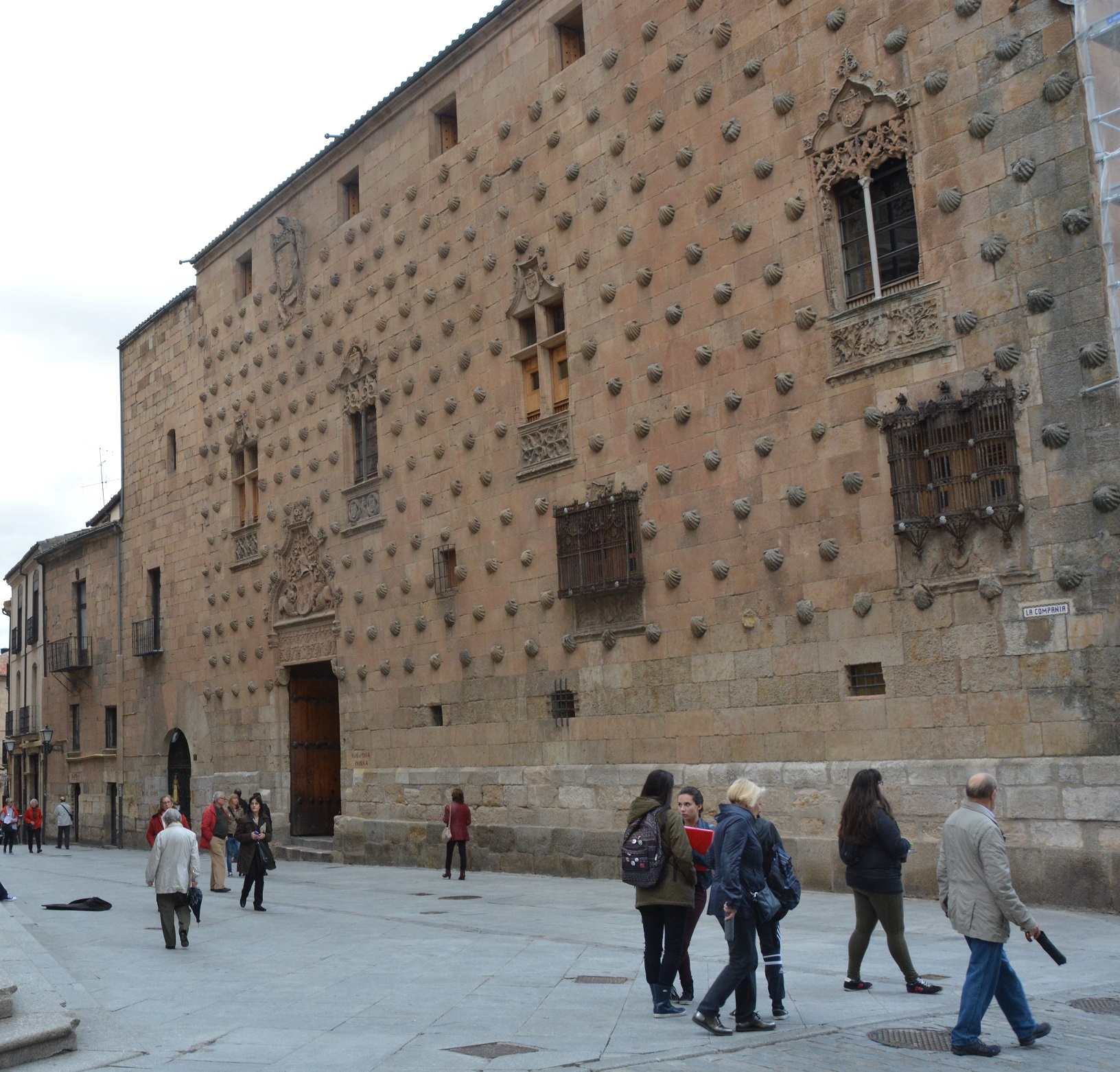
This week we strolled around the beautiful honey-coloured sandstone city of Salamanca, travelled south to Extremadura to see the wildlife of Parque Natural de Monfrague. And we travelled to Caceres for the food – it was Spain’s gastronomic capital in 2015- and stayed on for the fleadh. By luck, not planning, we had arrived just as a three-day festival of Irish music was about to kick off. All travel plans were put on hold while we stayed on to enjoy the craic.
And the highlights:
In Salamanca – finding Franco. Since Spain passed a law a few years back that all public statues of the fascist dictator be removed, you’d be hard pressed to see his image anywhere. We tracked him down in one of the few places he is still on show – here he is overlooking the city’s main square Plaza Mayor.
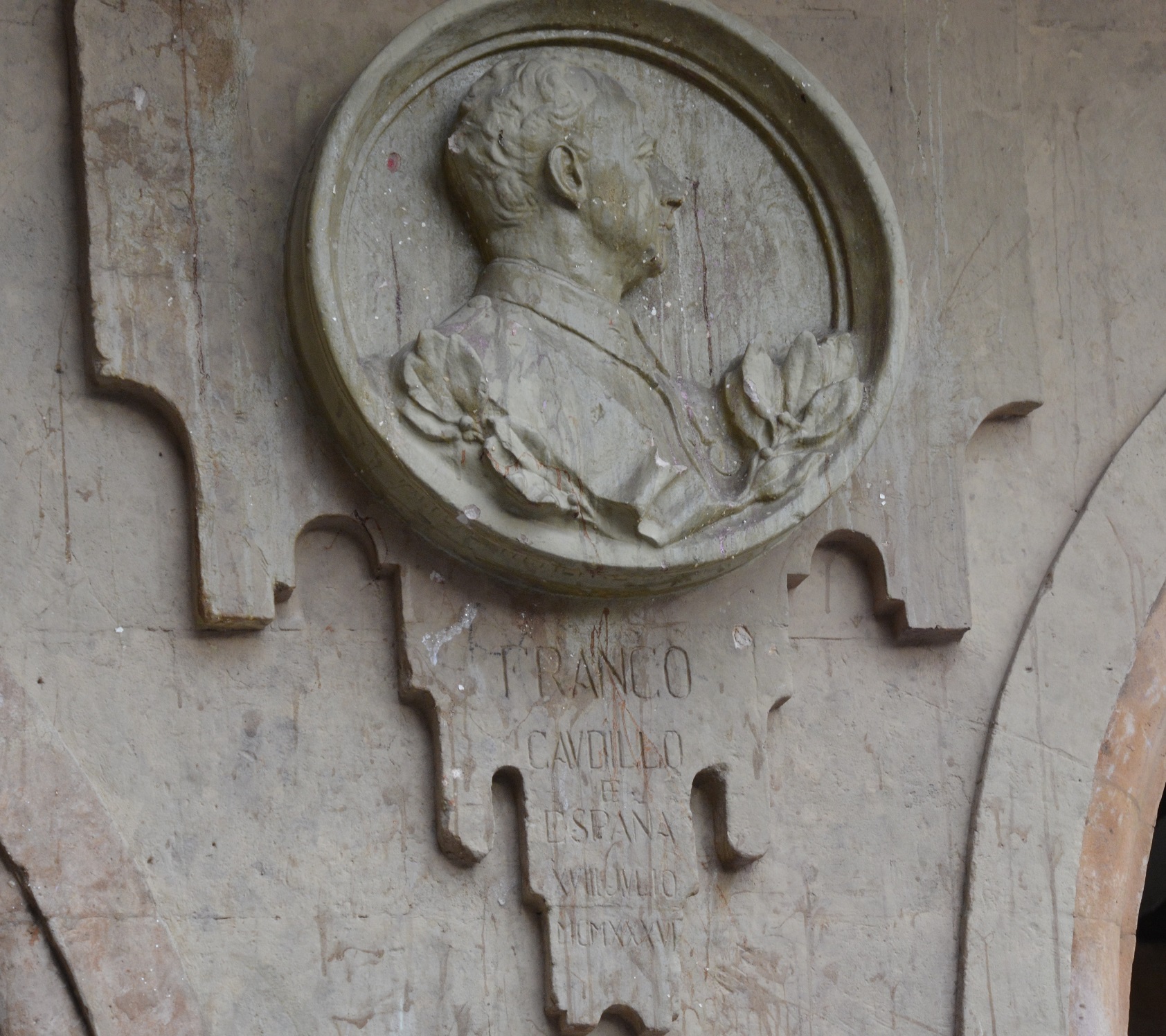
Visiting the Museo Art Nouveau y Art Deco – To use an expression my mother is fond of, Stuart is a man who doesn’t go near ‘church, chapel or meeting house’ so the splendours of the Catholic Church on show in Salamanca remain as a closed book to us. It was heresy surely not to have gone inside any of them but they will have to keep for another trip.
The secular compromise for a tour was Casa Lis which was constructed as a private palace in the early 1900’s and now houses the city’s Art Nouveau and Art Deco Museum.
The building itself, with its spectacular stained glass windows, was as much of interest as the collection it is home to.
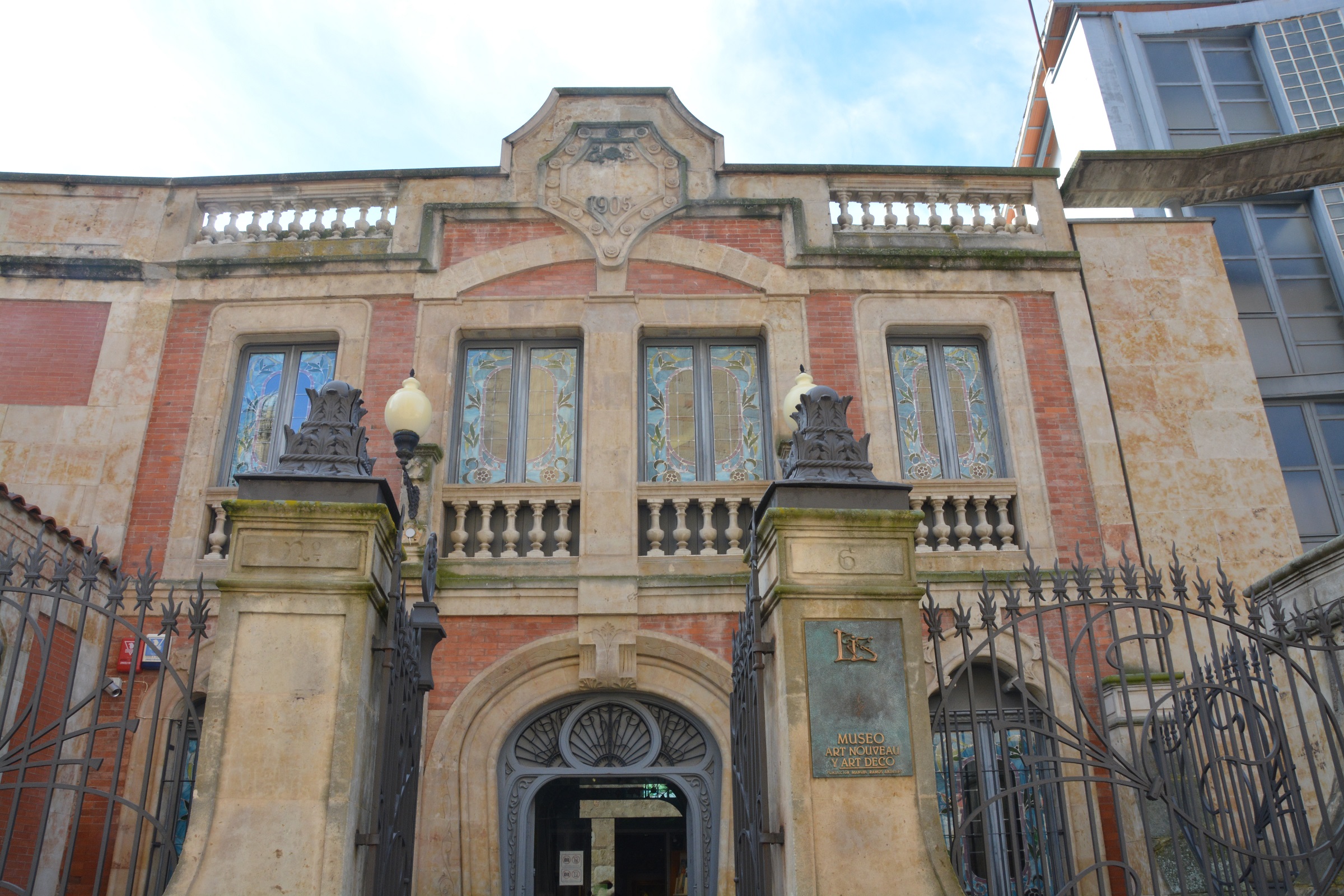
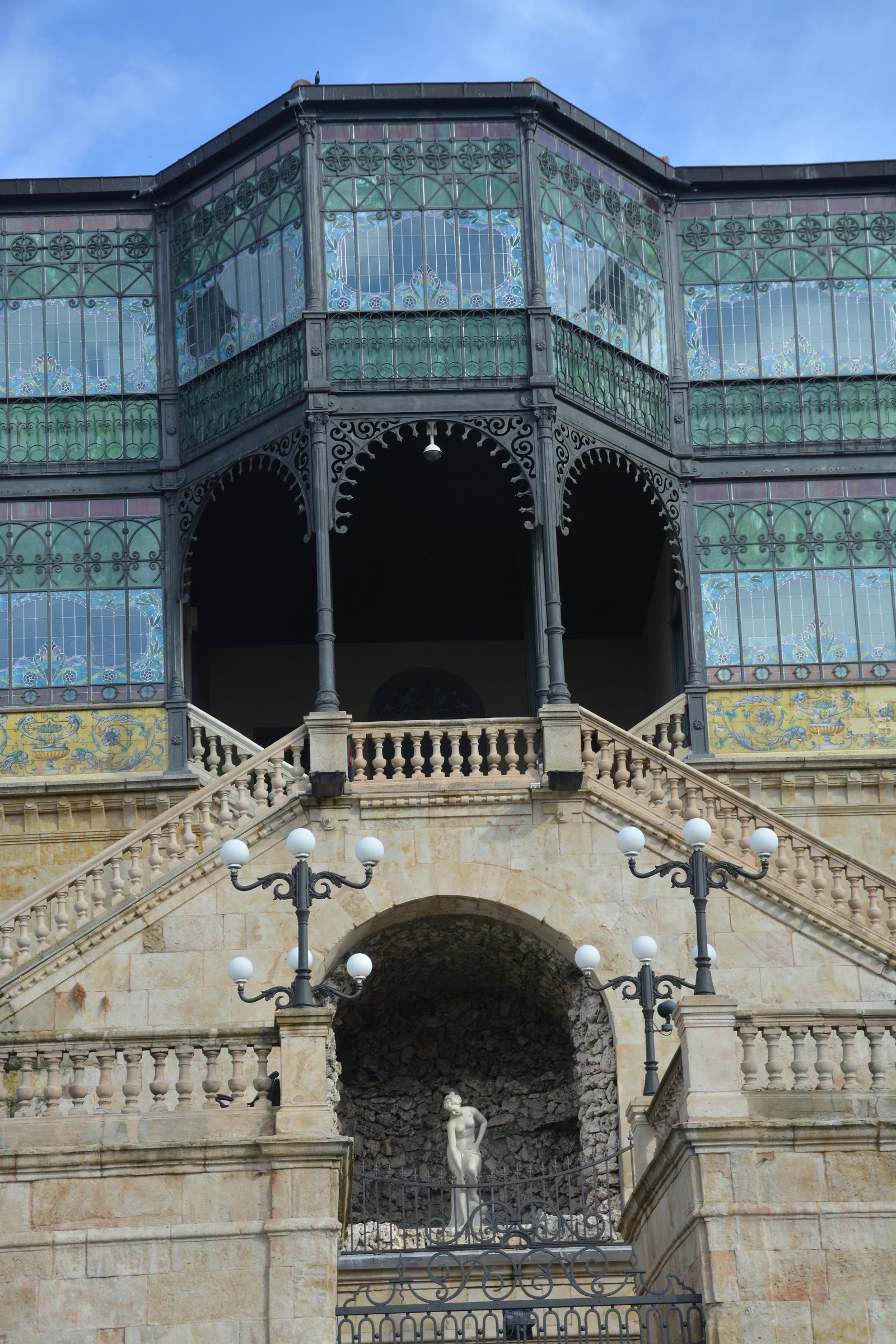
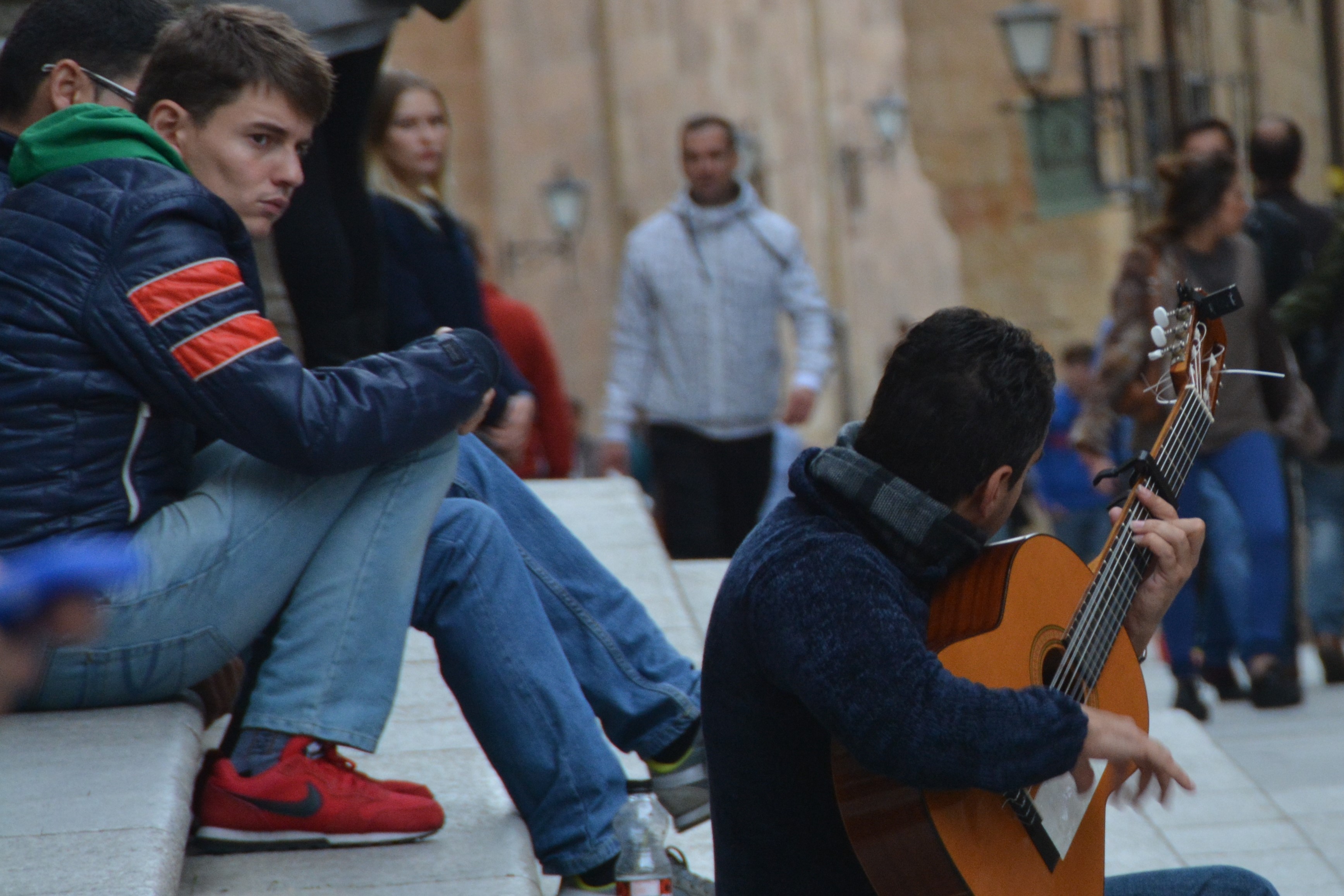
Seeing the wild life of Parque Natural de Monfrague -Well this blog wouldn’t be the same without a vulture photo, would it? And here’s this week’s featured bird…
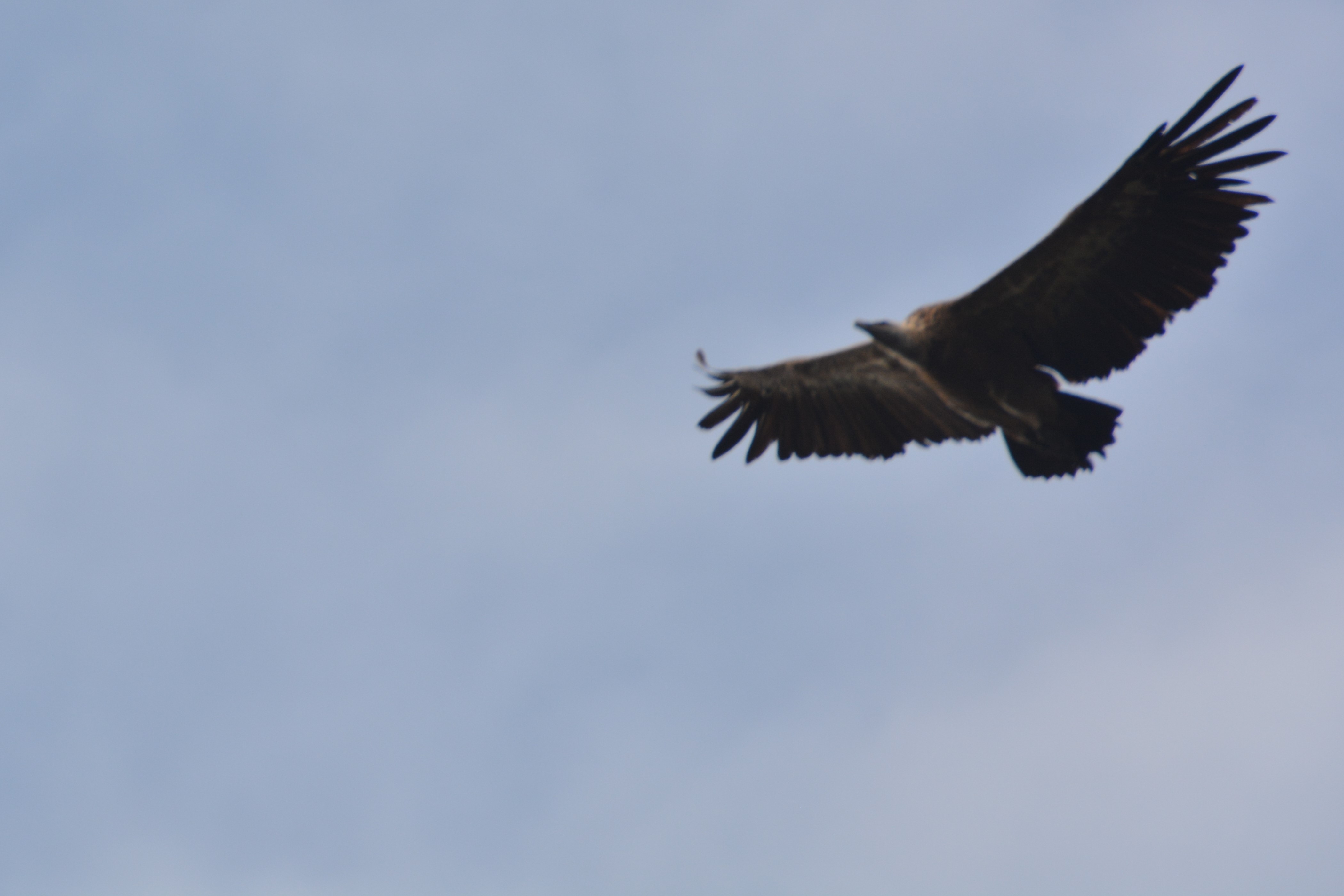
We followed one of the walking trails to the top of this hill…
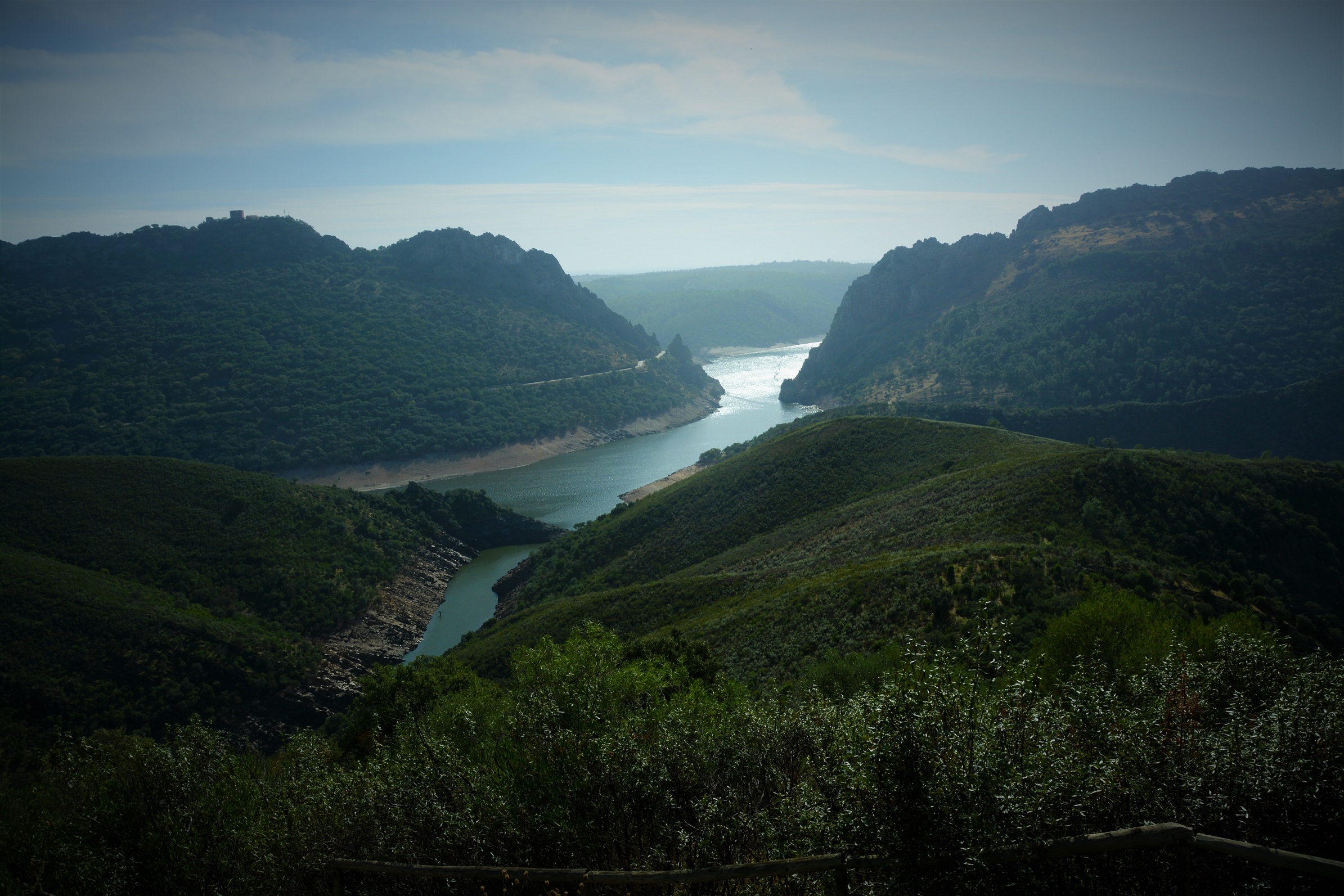
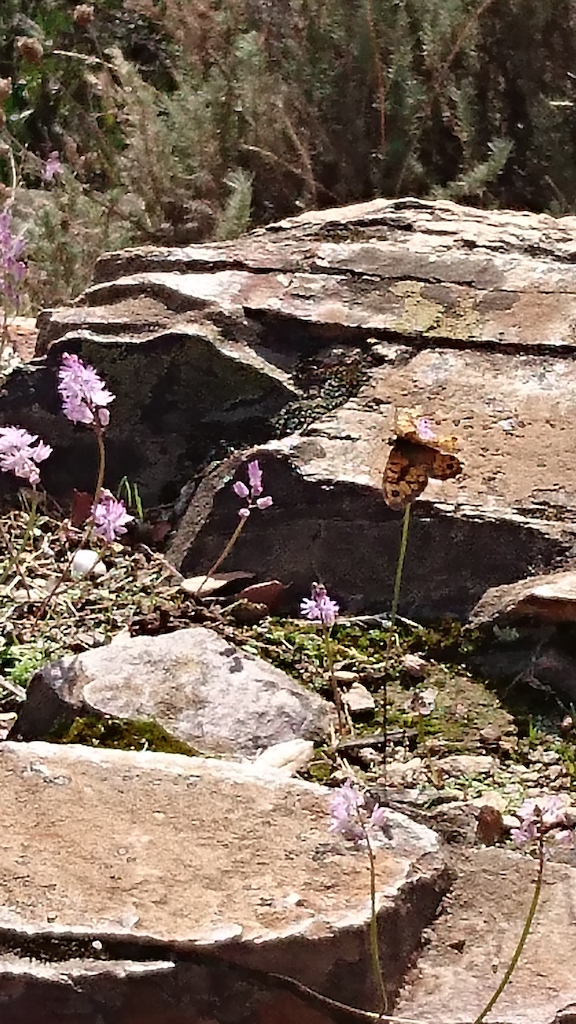
The air was clear which explains why this lichen was thriving…
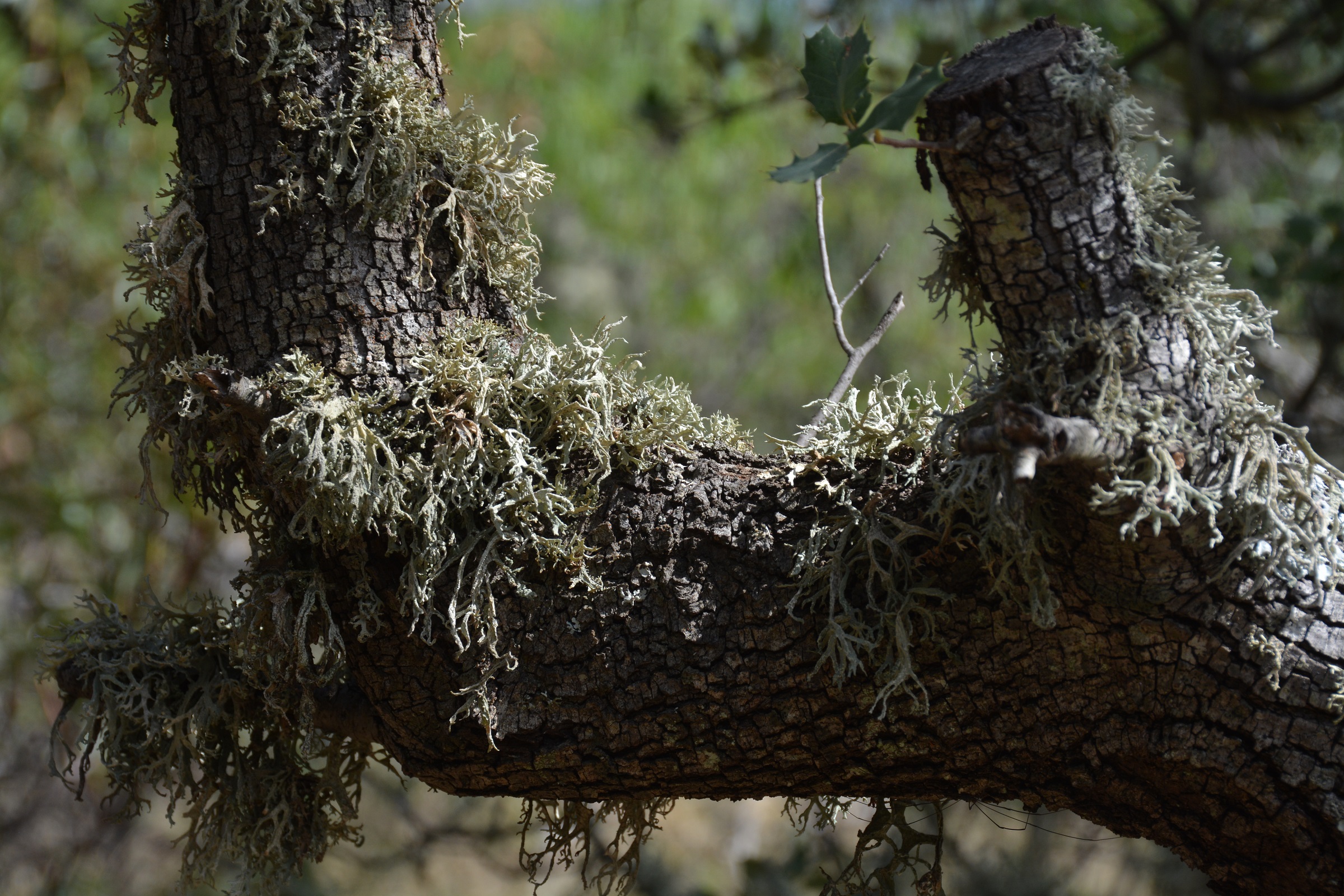
The following day, to ensure we saw the best of the park’s wildlife, we took a 4×4 tour with guide Valentine. Here he is…
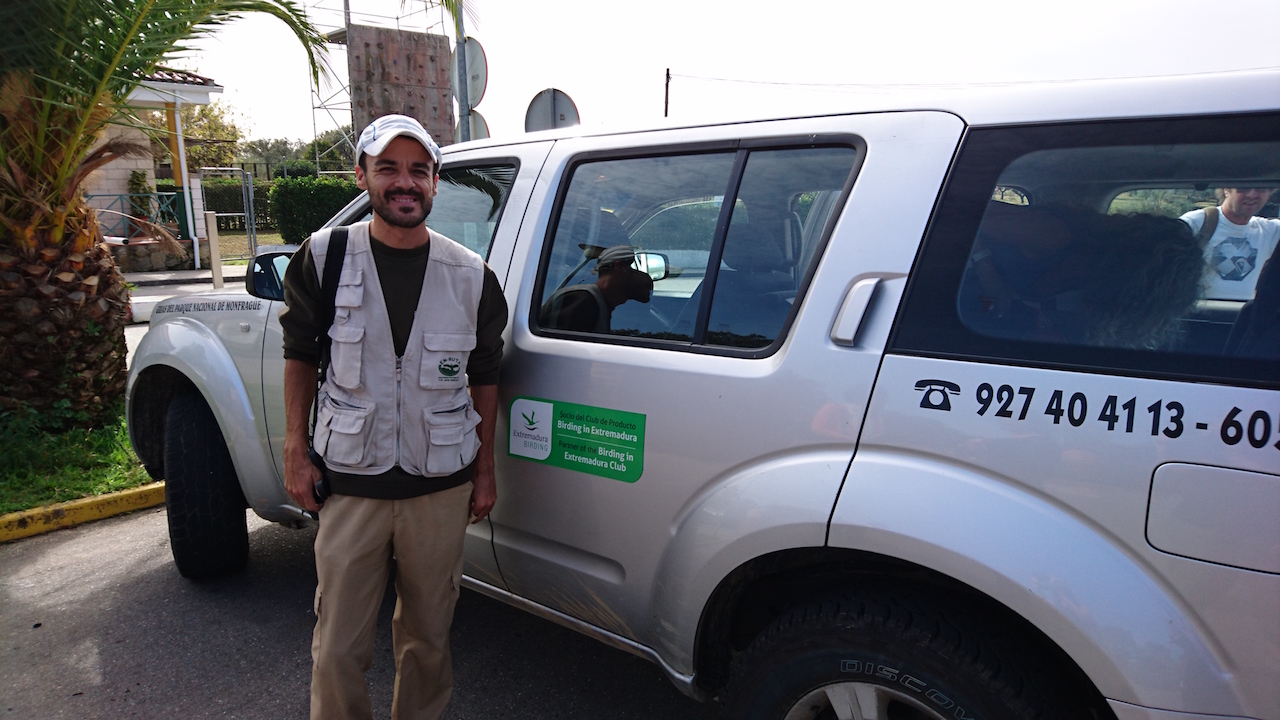
And a fantastic guide he was too. We saw so many birds that for a man initially excited at the sight of a single chough, Stuart now won’t remove his lens cap unless there is a flock of raptors tearing open the carcass of a baby deer at his feet.
Actually according to Valentine – and look away now if you are eating – that’s exactly what they do. If a cow is injured and dying, the vultures will fly overhead and keep watch until they are dead – popping back every few hours to check on progress. Sometimes magpies get there first and will tuck into the eyes and mouth of the dead animal. But then they need the bigger birds to break open the carcass so will flap wildly over it to let the vultures know it is dinner time. Between the raptors taking the first course and the smaller birds finishing off the remains only the bones will be left. That suits the farmers very well as it saves them the cost of disposal, according to Valentine. ‘It’s the park’s sanitary system’, he said. Excuse all the gory detail here but as someone whose knowledge of the natural world draws heavily on The Lion King, I for one found all this fascinating.
So here are some of the sights in the park as shown to us by Valentine, sometimes screeching his brakes to a halt when he caught a glimpse of something, like this vulture perched on a rock..
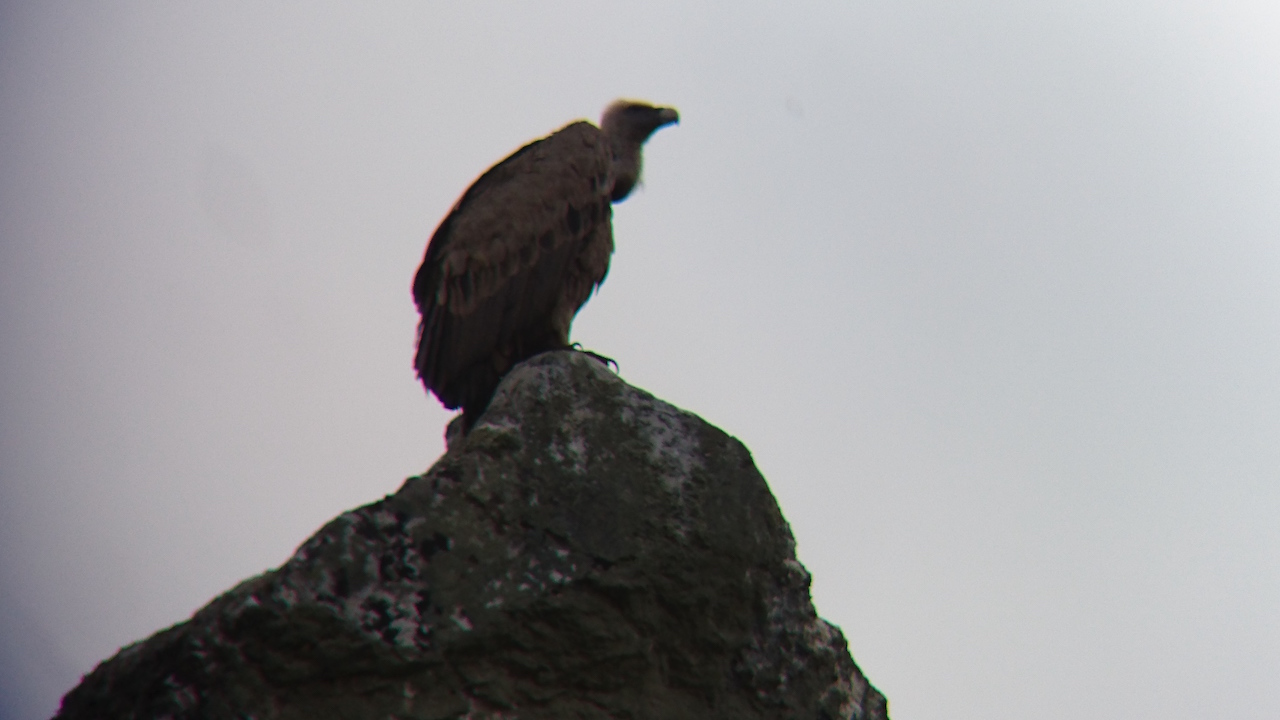
…or this red deer hind…
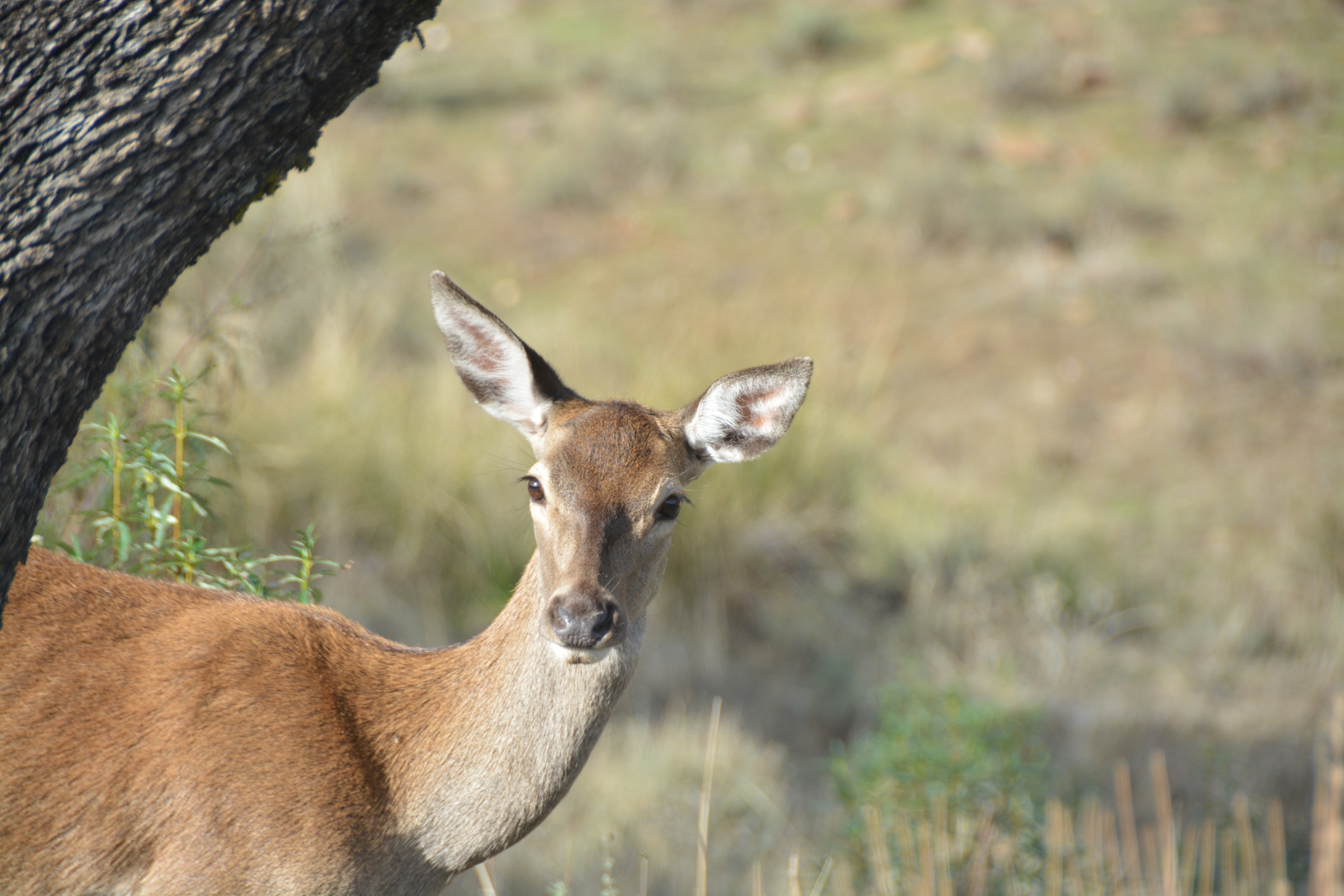
..and this blue spotted lizard on a log…
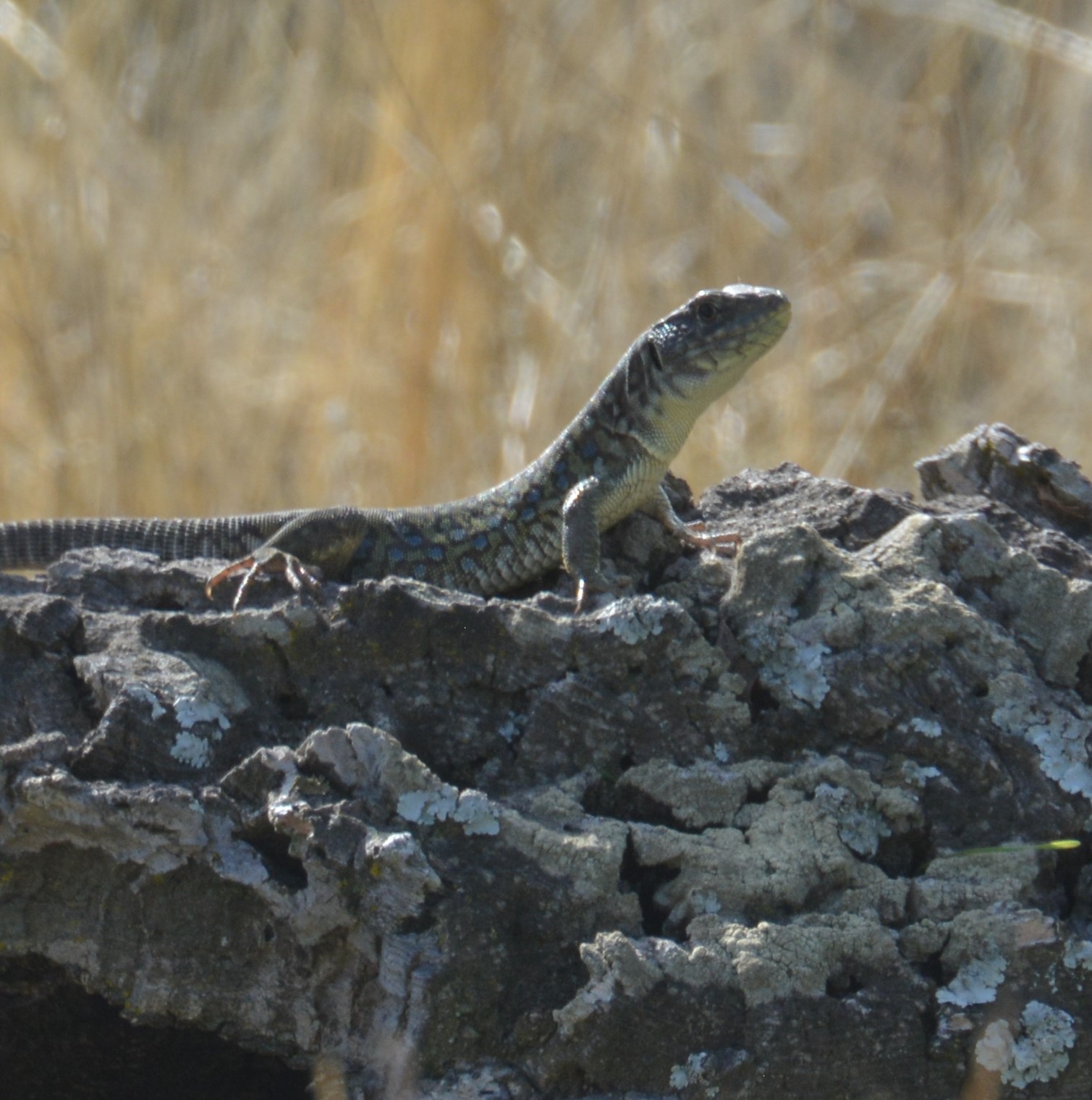
…and – goodness knows how he managed to spot this from the distance we were at- an otter on the river bank.
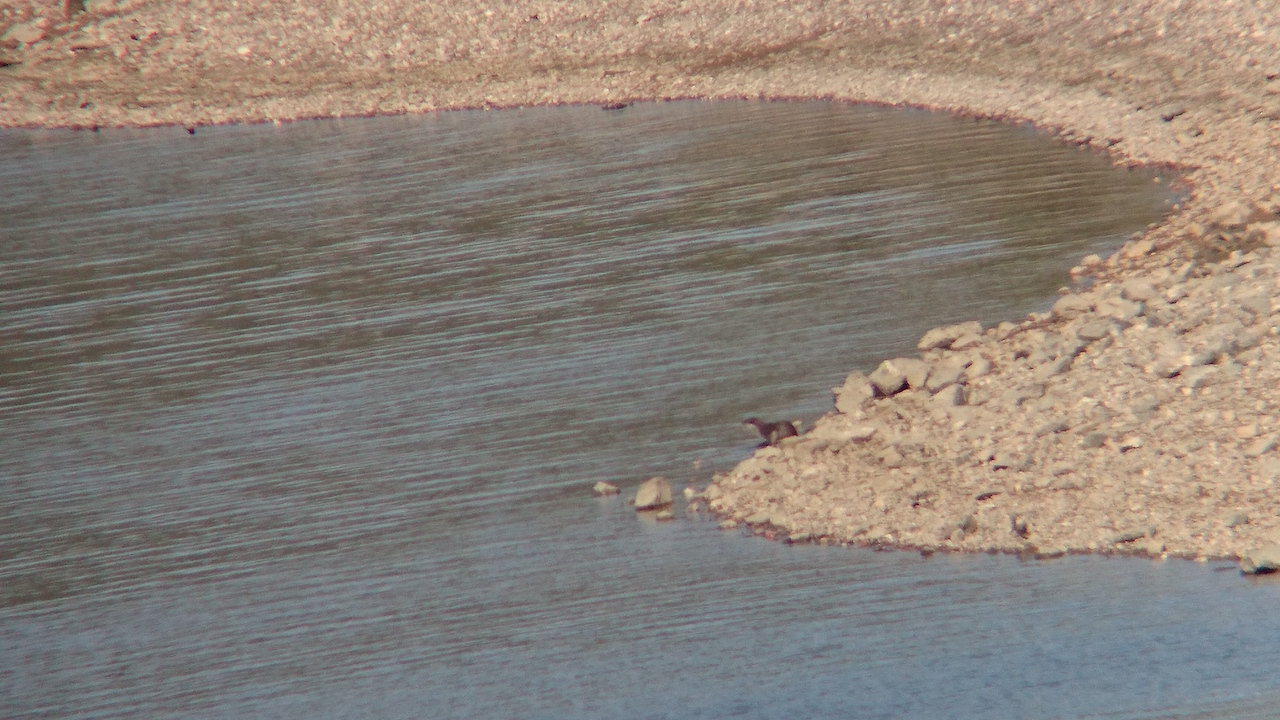
But this beast we were able to spot for ourselves…
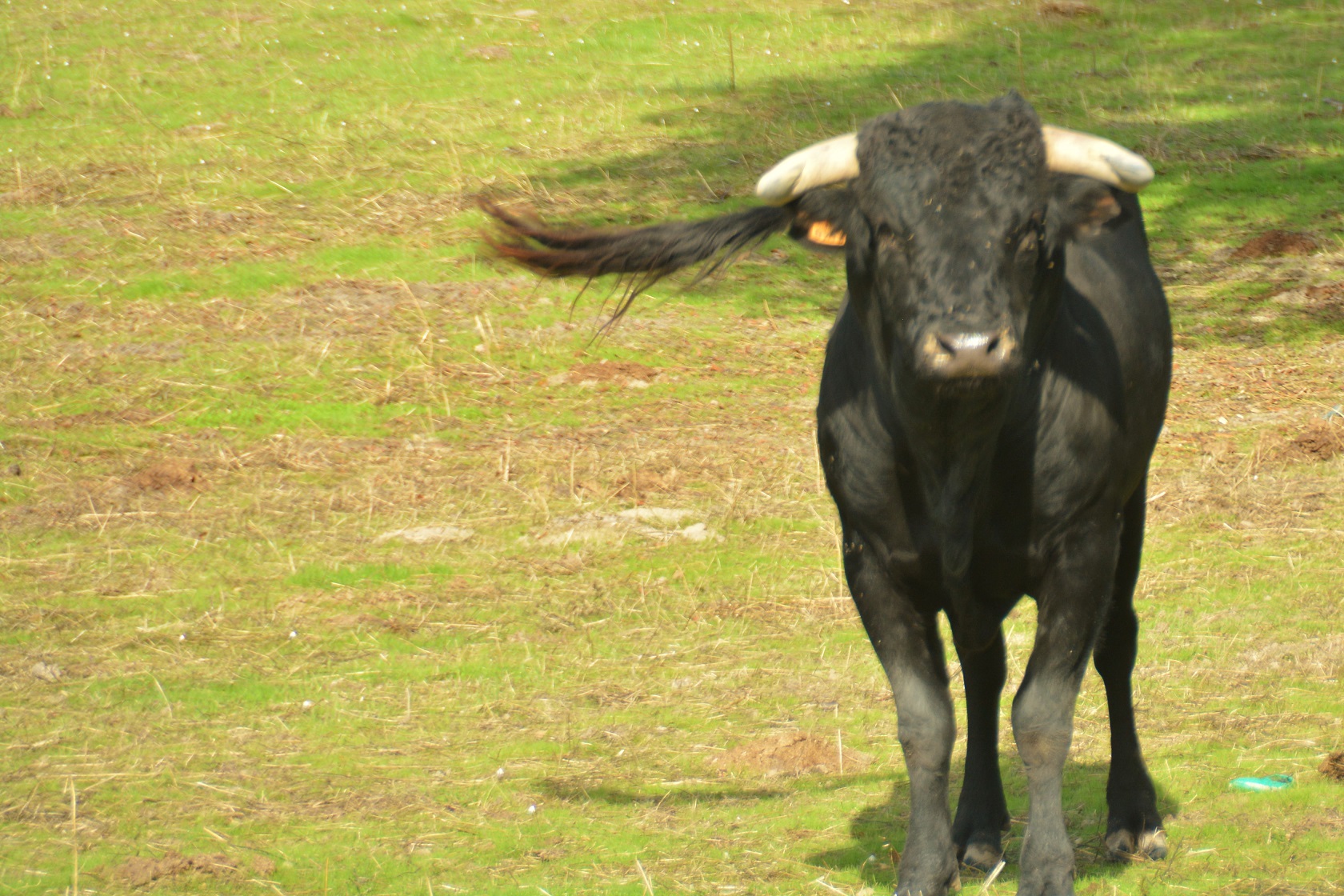
… a bull being bred for fighting. ‘Leave your red rucksack in the car’, Valentine warned as Stuart went to take the photo.
And as for the flora of the region, there are cork oak trees like this one which had recently been harvested…
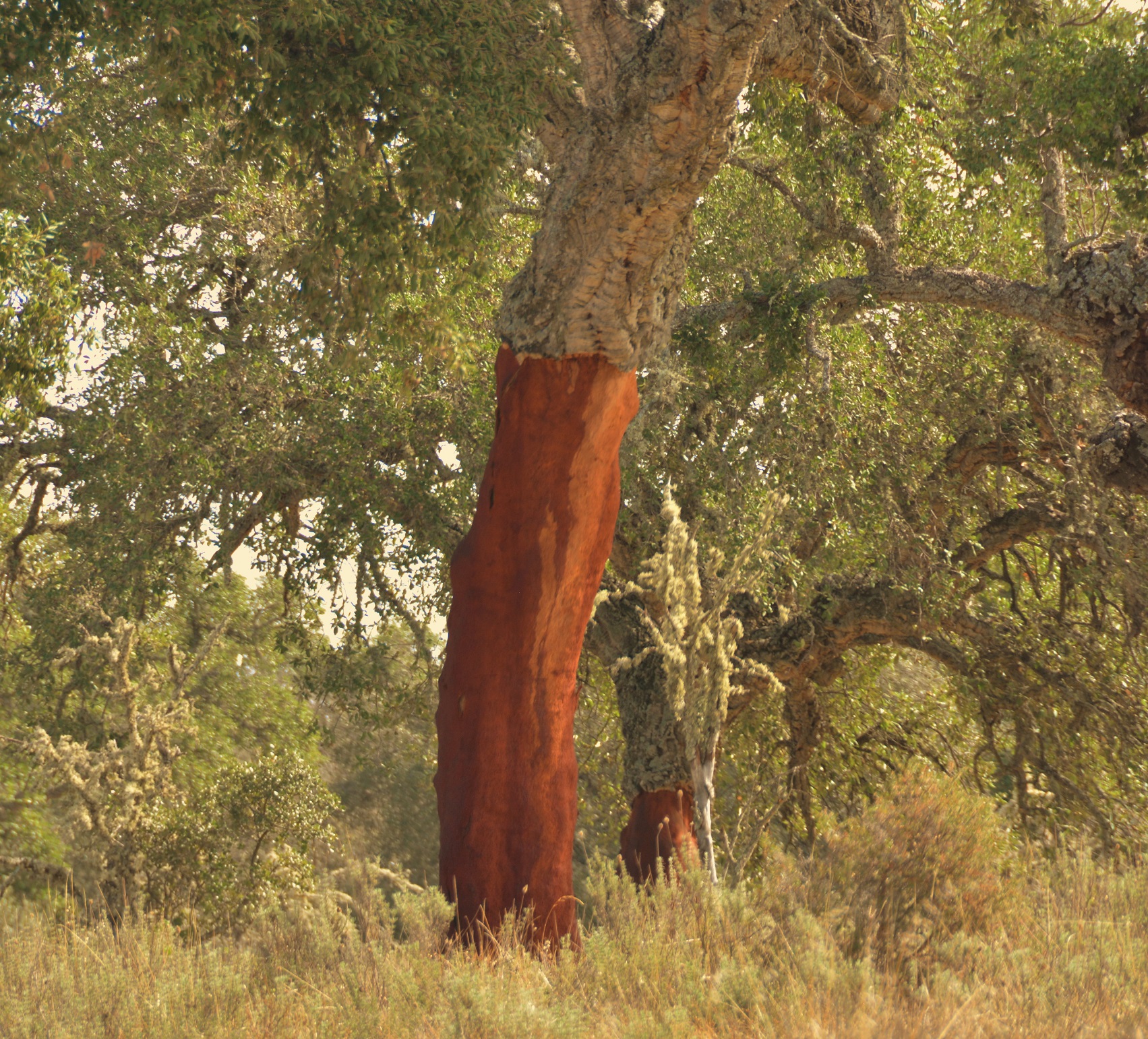
…it takes 10 years of growth to reach this depth. Just enough to make a wine bottle cork.
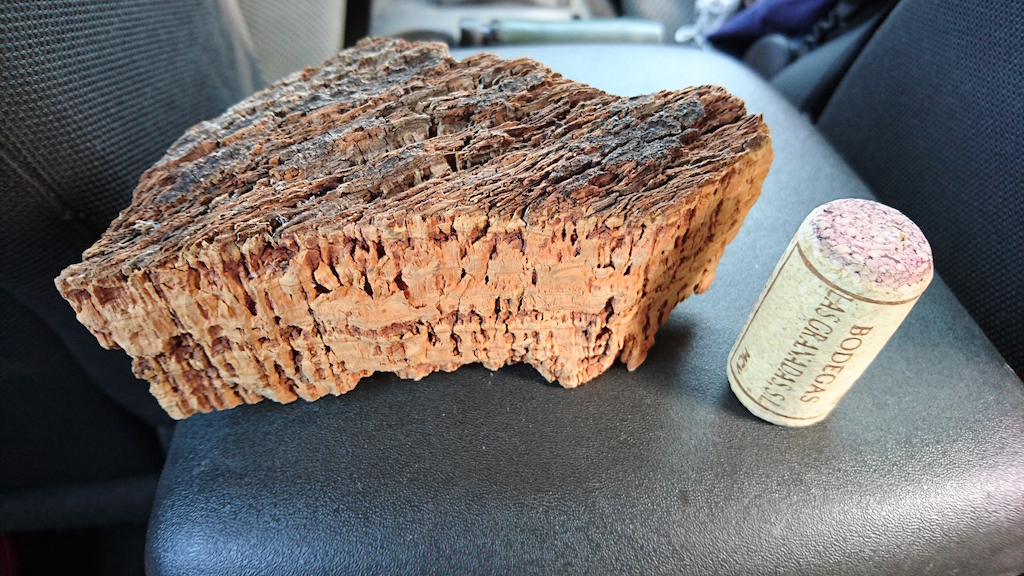
And this turpentine tree…
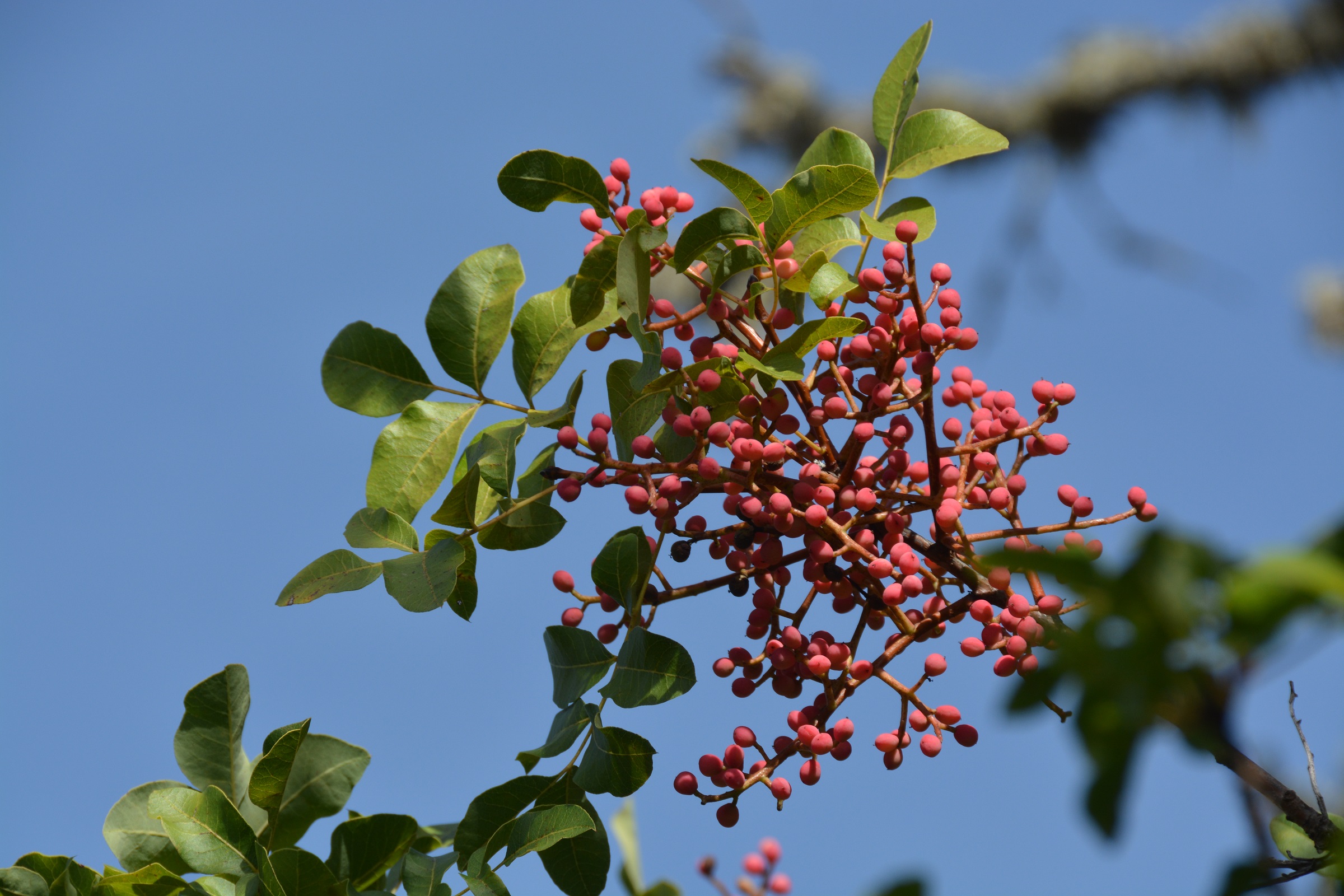
And finally, this unexpected crop. ‘Is that spinach, Valentine?’ Nope – it’s a tobacco plantation. Philip Morris is a big customer for the local produce of Extemadura.
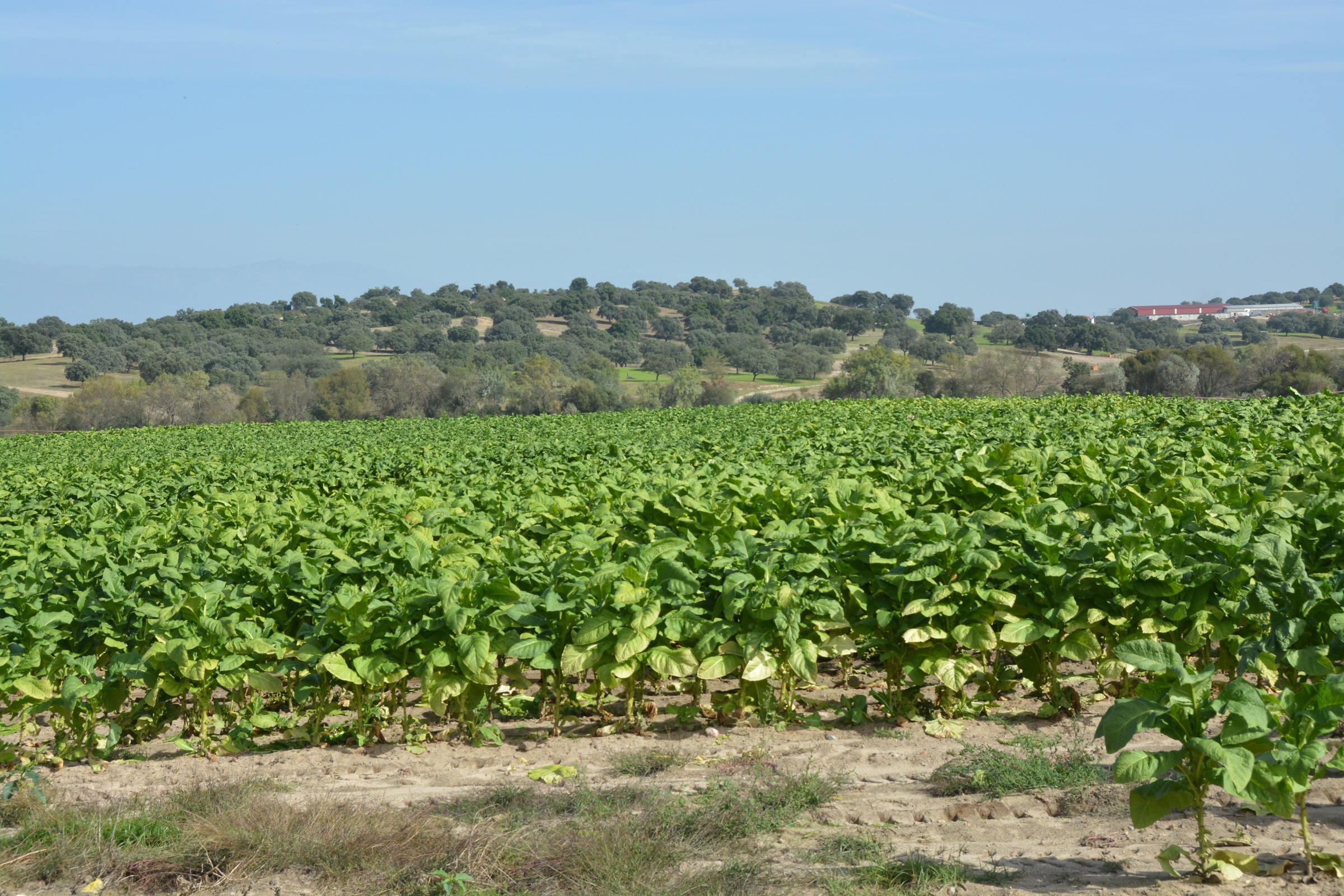
The food in Caceres for the cuisine – We worked our way through a few of the taperia in Caceres – this is a gastropub of the local speciality migas – it’s a mix of breadcrumbs, egg and chorizo.
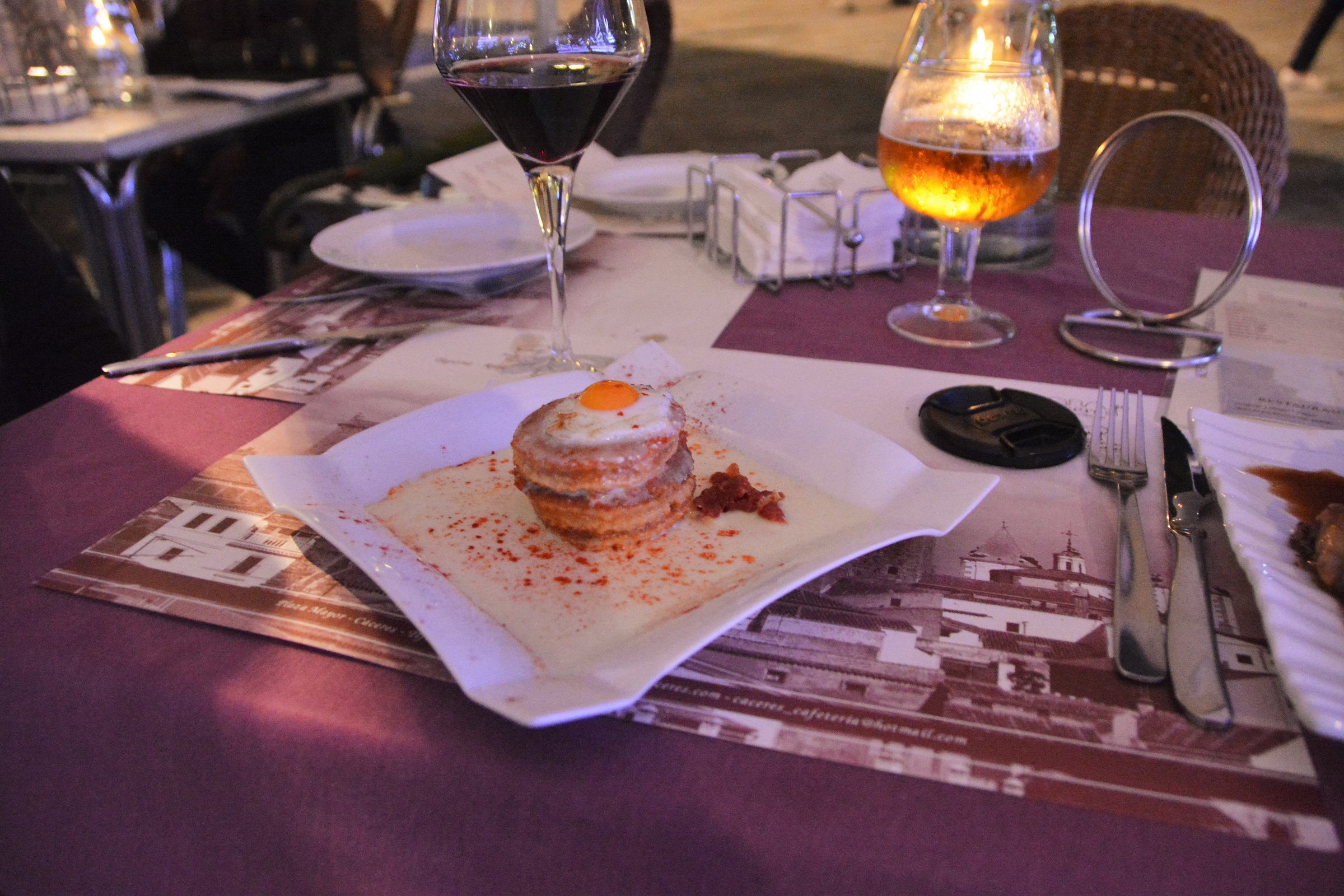
Roasted suckling pig is another speciality of the region though the way it was served, just in chunks on the bone, crackling and all, wasn’t as appetising as it sounded. Here it is..
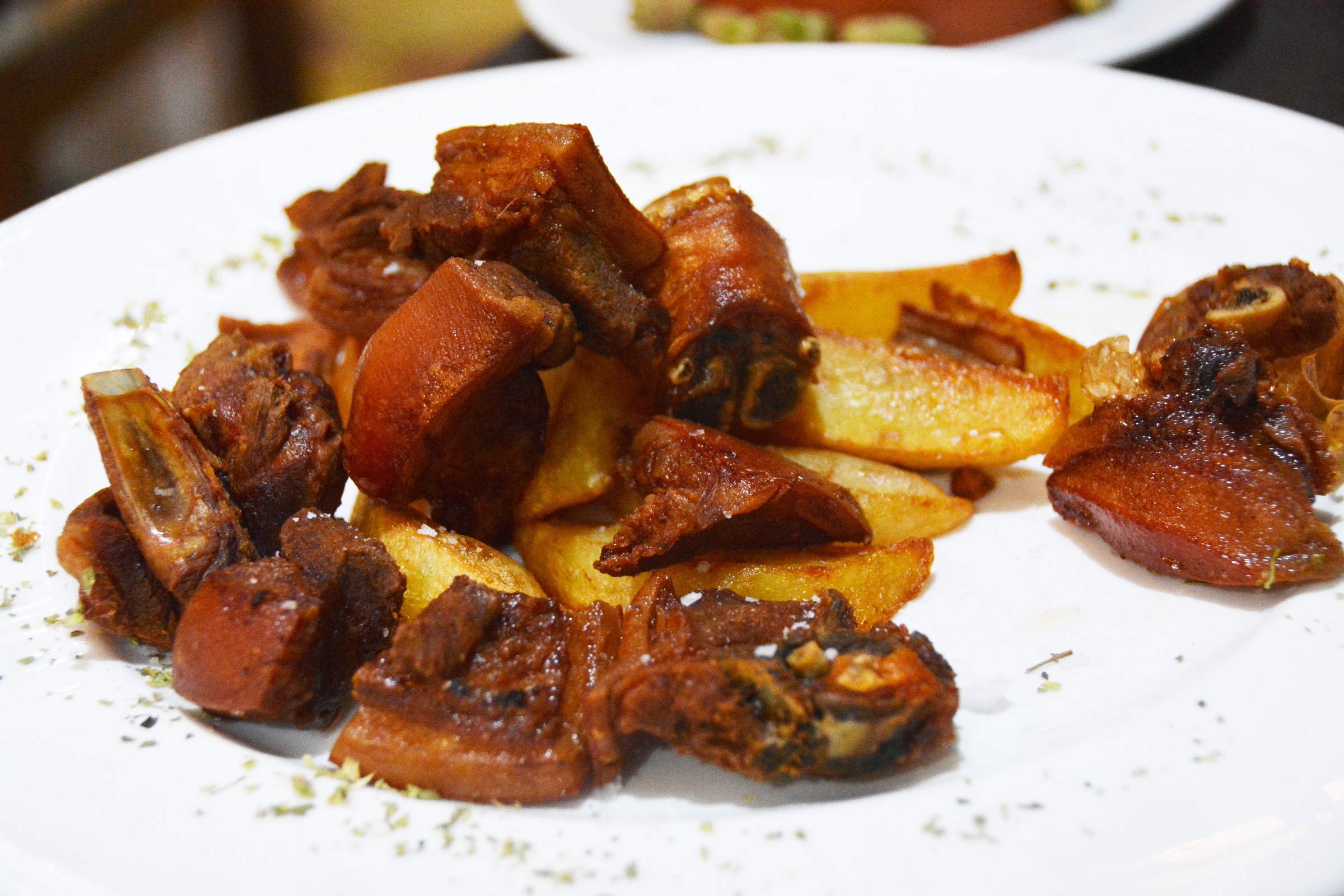
This very simple dish of roasted mushroom, aubergine, peppers and onion was perfect though…
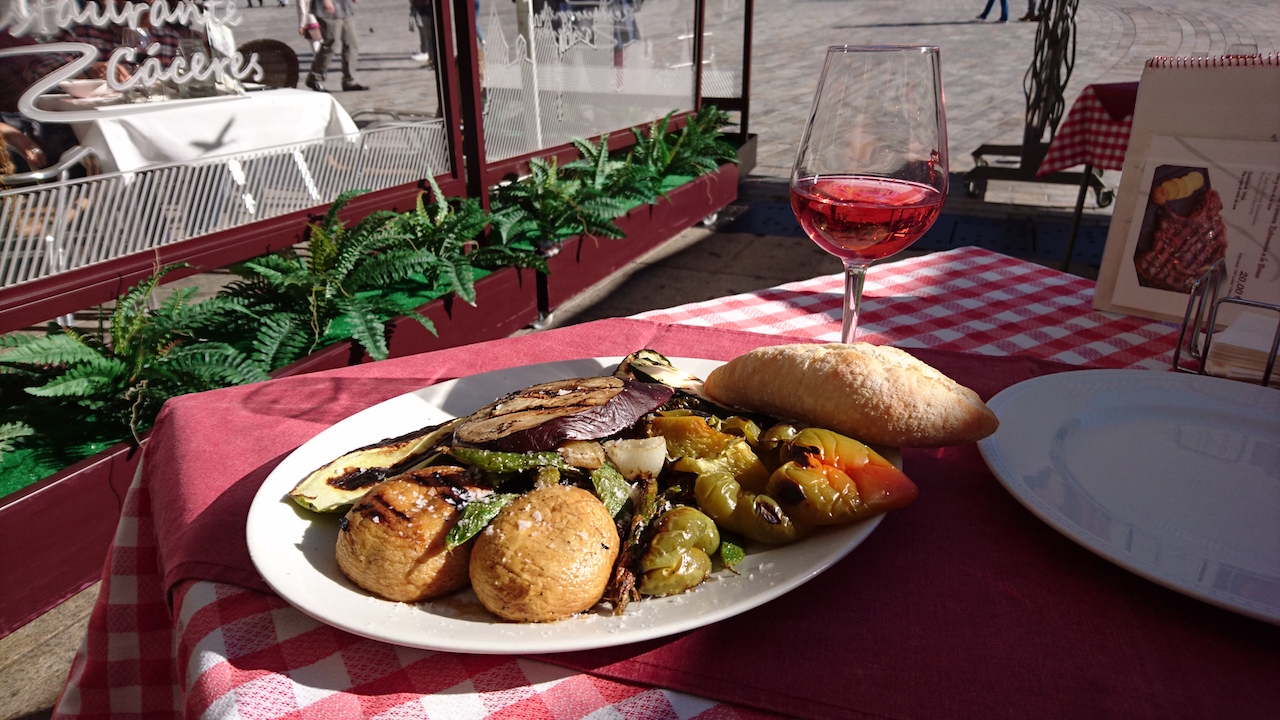
Caceres for the craic – So on the Friday night, we decided to pop into a bar in Caceres for one for the road before heading back to the campsite. We followed the sound of Irish music to a bar thinking it was more likely to be Galician. We had made the same mistake in Las Madulas where it sounded like every cafe was playing Irish folk as it sounded so similar. But this time we were right…it was indeed Irish and a a three day Fleadh was starting the following day. There would be free concerts every night in the old town . No question. All our travel plans were postponed to stay for the duration.
We saw the likes of Rick Epping play with New Road..
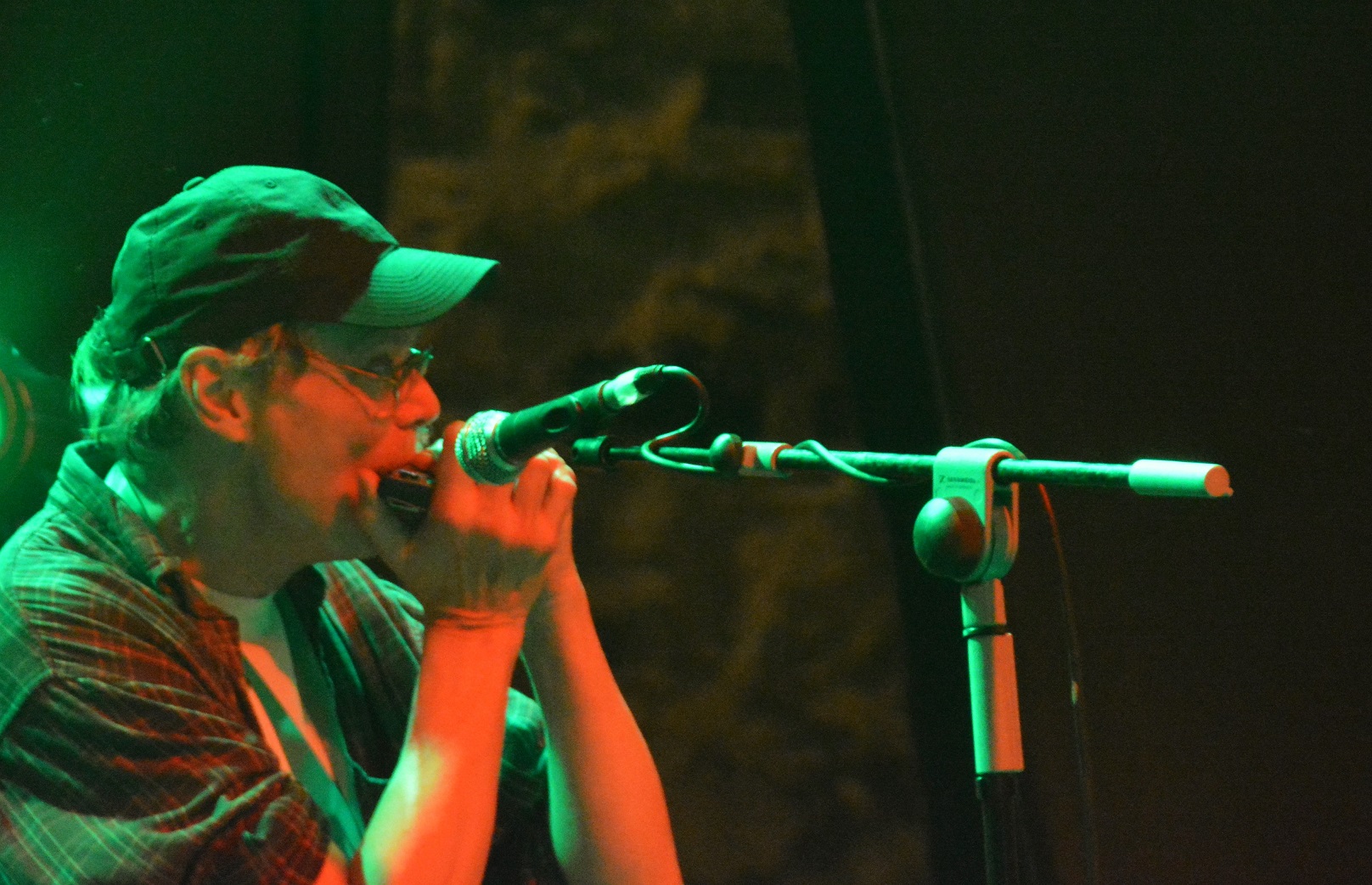
…and Cathy Jordan …
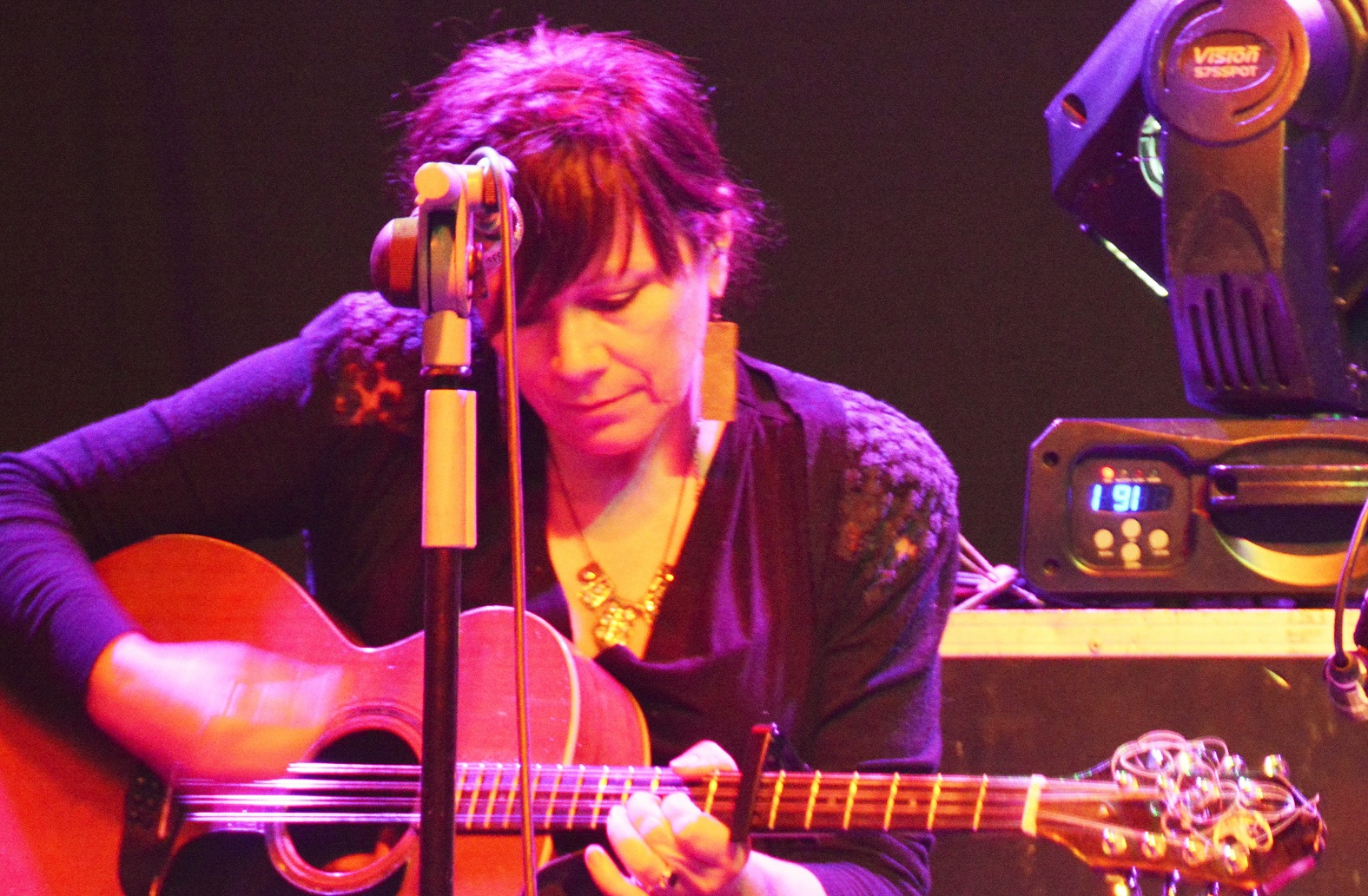
…and Frankie Gavin and De Dannan.
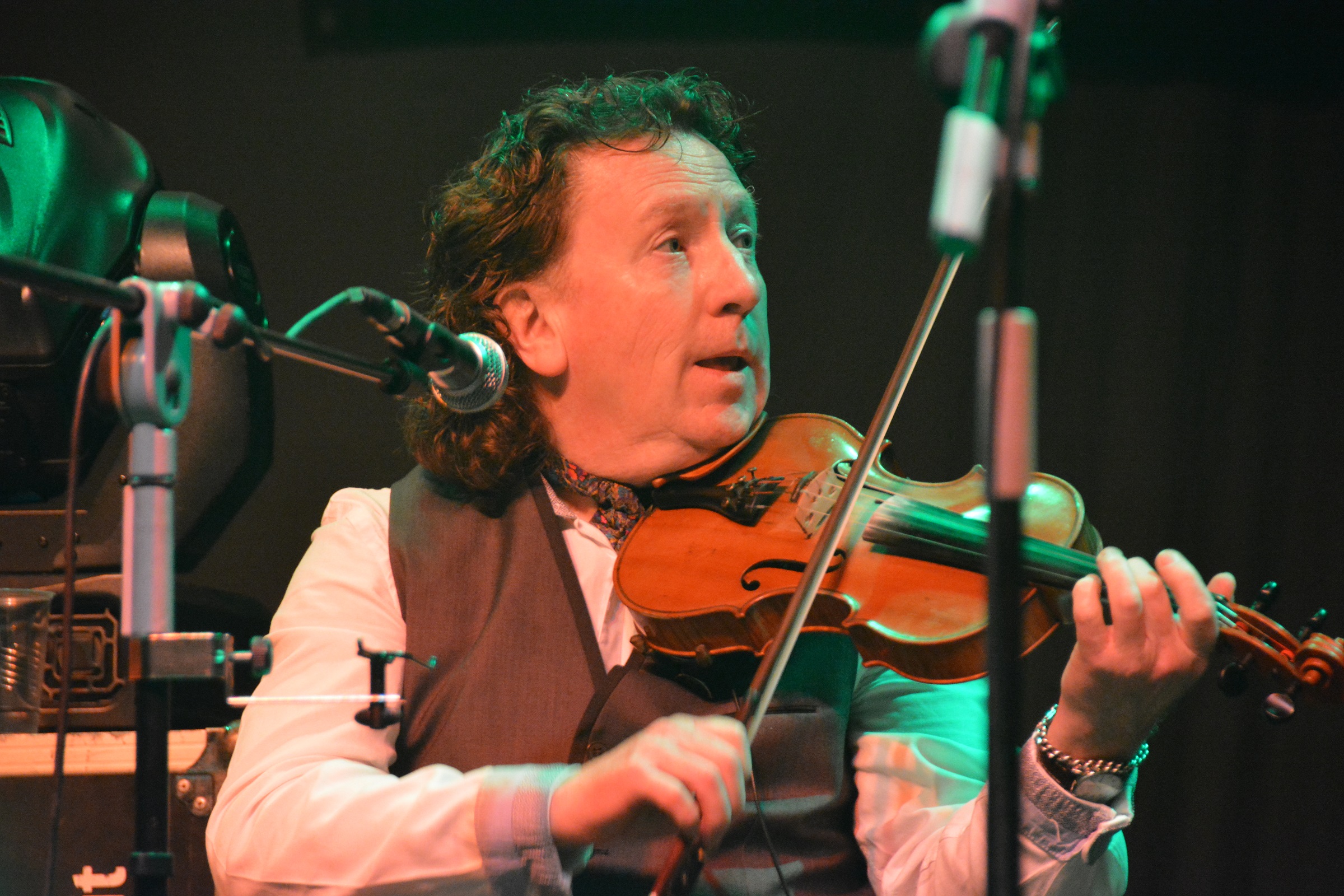
..and some great singing from Edwina Guckian though, until I work out how to upload video, you will have to take my word for it.

